Quick filters:
Paleontology tools Stock Photos and Images
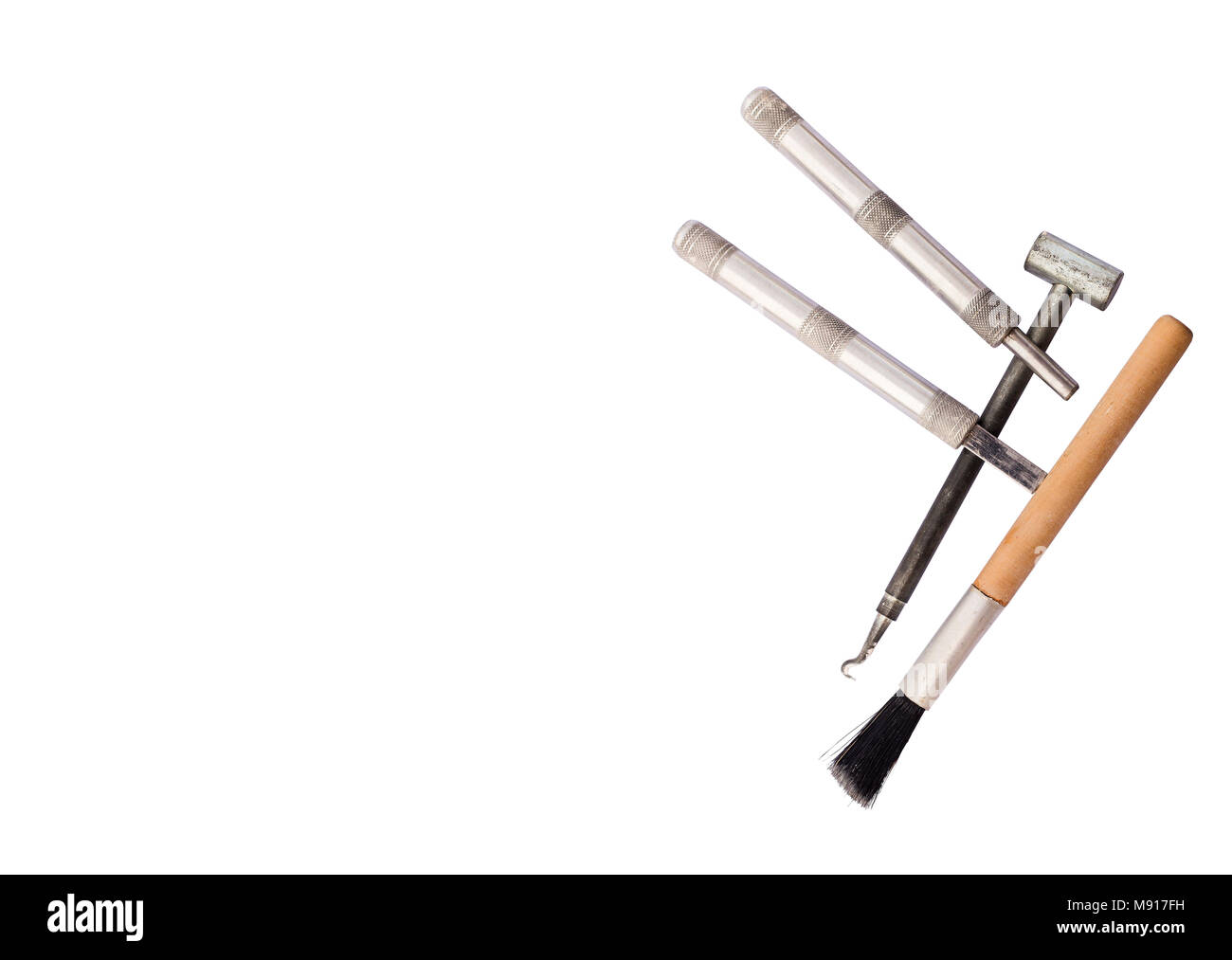 Equipment for geological excavation is a set of simulator tools for training. Stock Photohttps://www.alamy.com/image-license-details/?v=1https://www.alamy.com/equipment-for-geological-excavation-is-a-set-of-simulator-tools-for-training-image177663461.html
Equipment for geological excavation is a set of simulator tools for training. Stock Photohttps://www.alamy.com/image-license-details/?v=1https://www.alamy.com/equipment-for-geological-excavation-is-a-set-of-simulator-tools-for-training-image177663461.htmlRFM917FH–Equipment for geological excavation is a set of simulator tools for training.
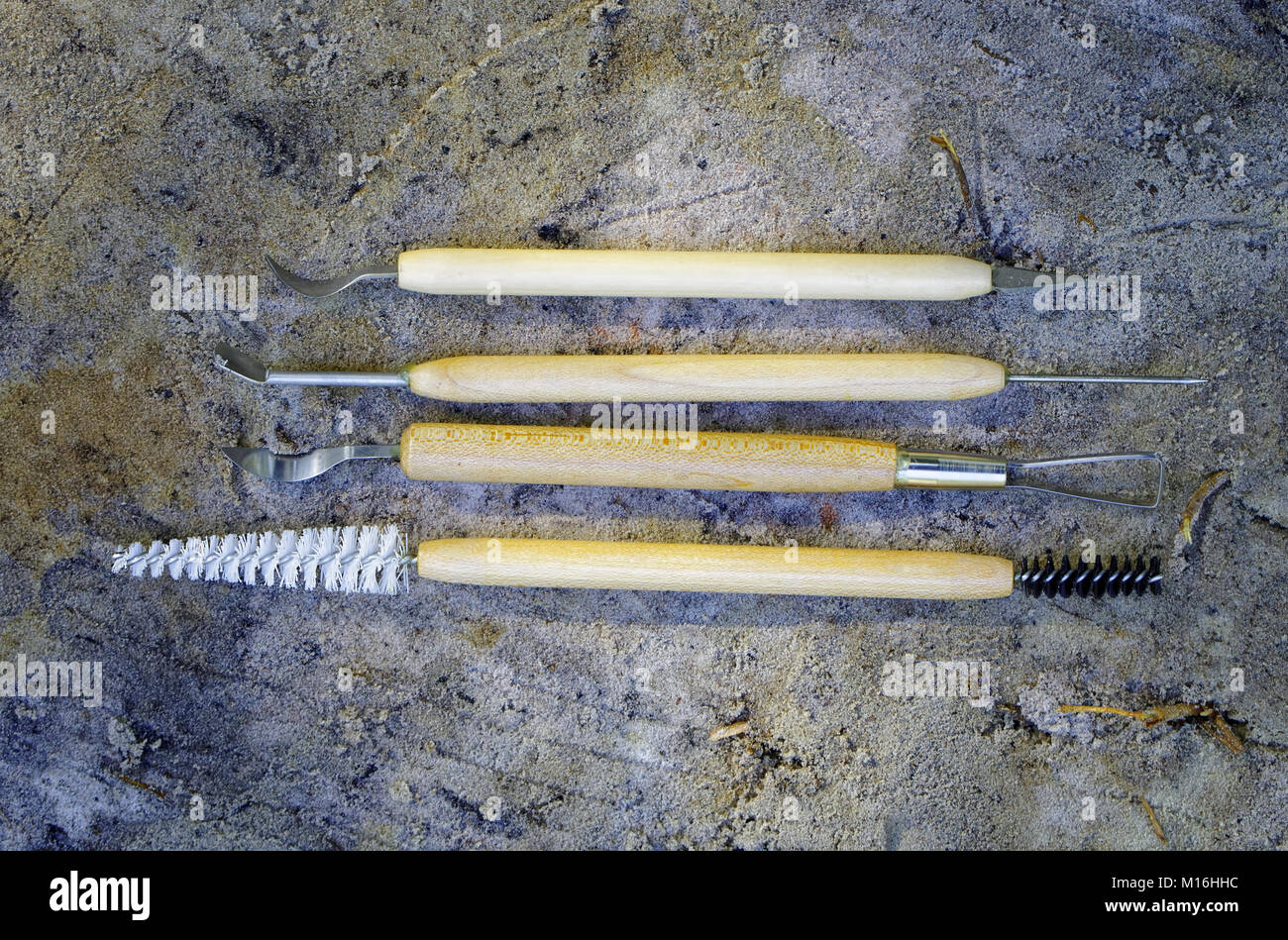 Tools for qualitative cleaning of finds in archeology, paleontology and geology Stock Photohttps://www.alamy.com/image-license-details/?v=1https://www.alamy.com/stock-photo-tools-for-qualitative-cleaning-of-finds-in-archeology-paleontology-172863864.html
Tools for qualitative cleaning of finds in archeology, paleontology and geology Stock Photohttps://www.alamy.com/image-license-details/?v=1https://www.alamy.com/stock-photo-tools-for-qualitative-cleaning-of-finds-in-archeology-paleontology-172863864.htmlRFM16HHC–Tools for qualitative cleaning of finds in archeology, paleontology and geology
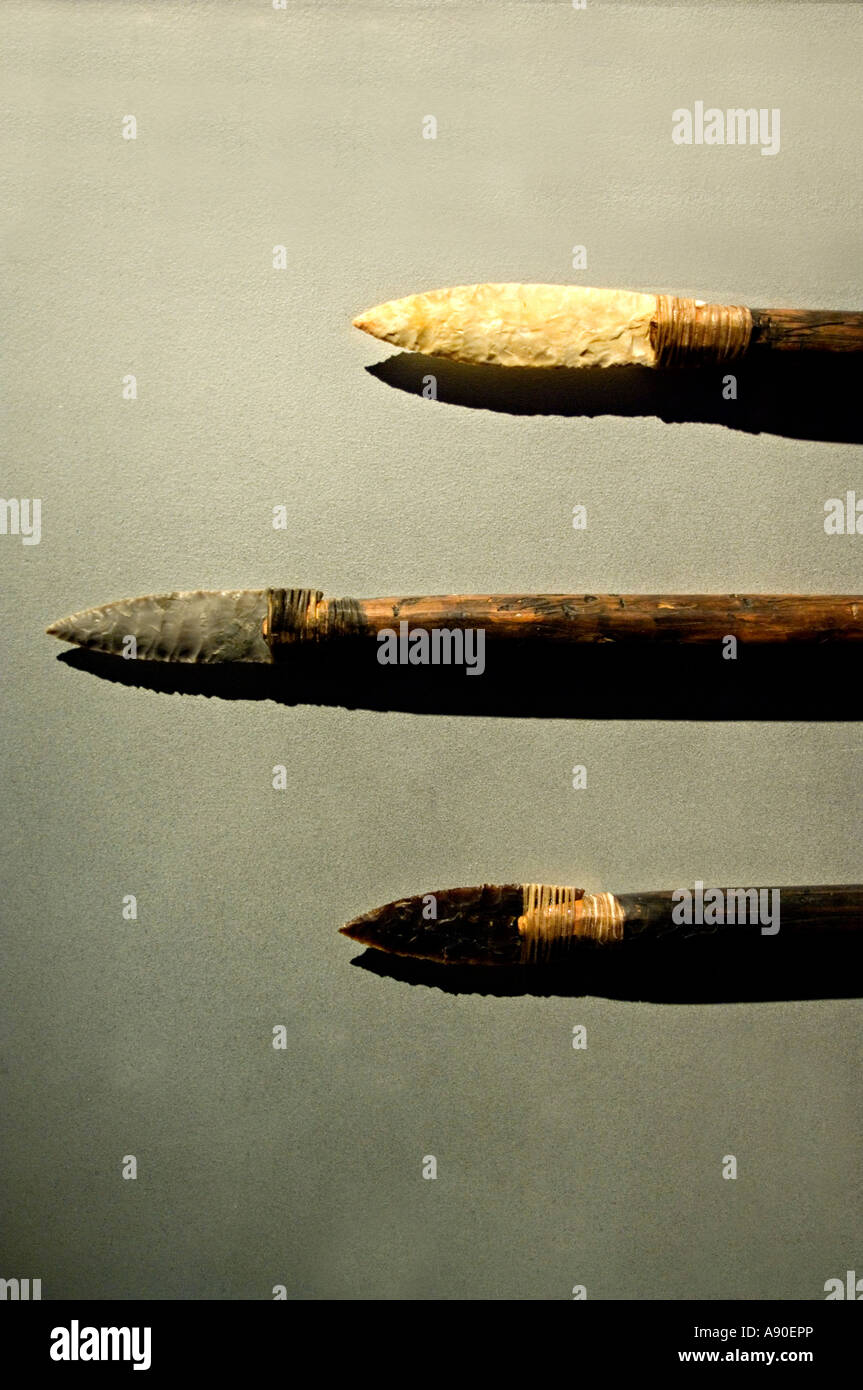 Clovis Spear Points Stock Photohttps://www.alamy.com/image-license-details/?v=1https://www.alamy.com/stock-photo-clovis-spear-points-12210285.html
Clovis Spear Points Stock Photohttps://www.alamy.com/image-license-details/?v=1https://www.alamy.com/stock-photo-clovis-spear-points-12210285.htmlRMA90EPP–Clovis Spear Points
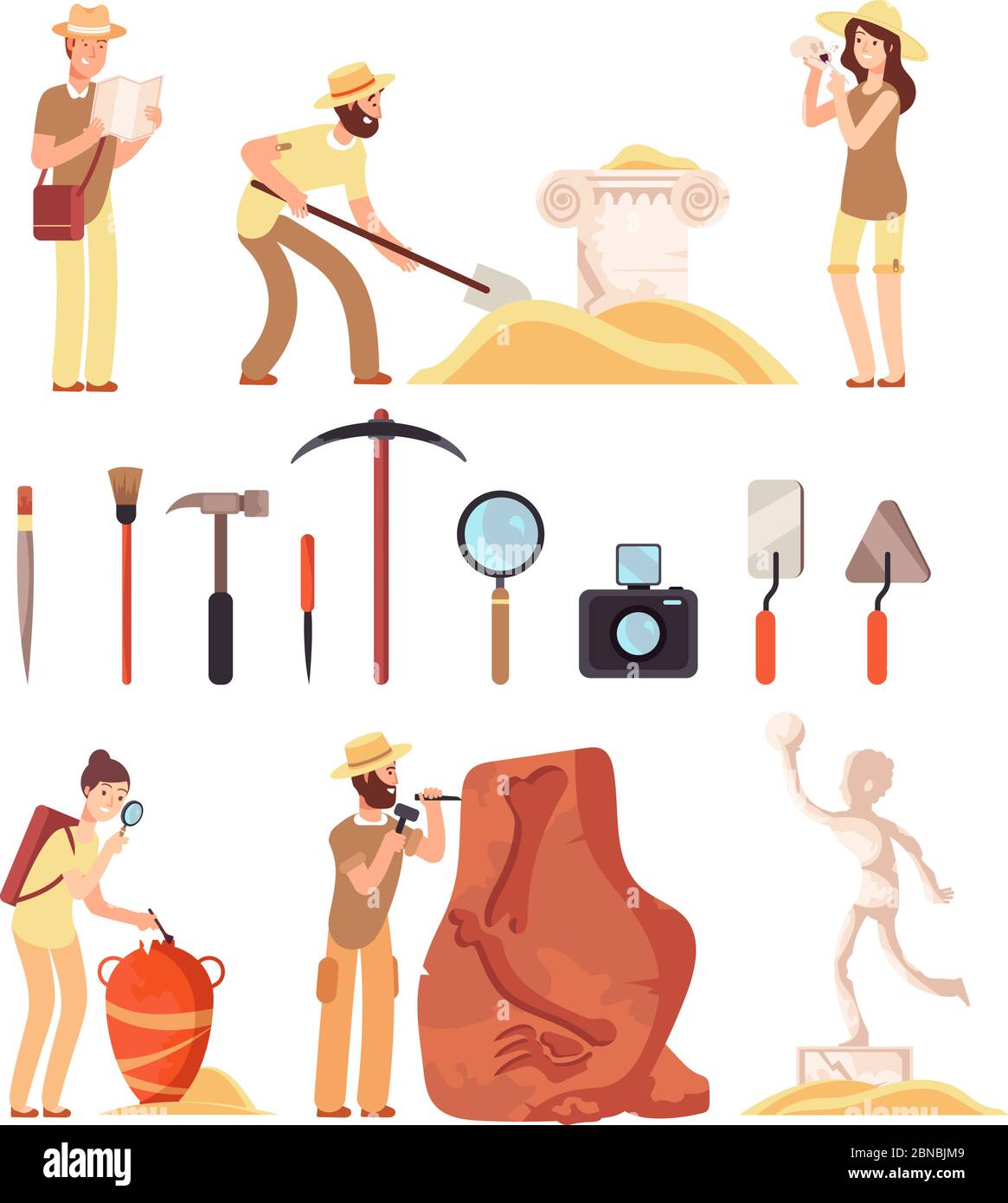 Archeology. Archeologist people, paleontology tools and ancient history artifacts. Vector cartoon isolated set. Illustration of archaeological instrument and discover Stock Vectorhttps://www.alamy.com/image-license-details/?v=1https://www.alamy.com/archeology-archeologist-people-paleontology-tools-and-ancient-history-artifacts-vector-cartoon-isolated-set-illustration-of-archaeological-instrument-and-discover-image357371289.html
Archeology. Archeologist people, paleontology tools and ancient history artifacts. Vector cartoon isolated set. Illustration of archaeological instrument and discover Stock Vectorhttps://www.alamy.com/image-license-details/?v=1https://www.alamy.com/archeology-archeologist-people-paleontology-tools-and-ancient-history-artifacts-vector-cartoon-isolated-set-illustration-of-archaeological-instrument-and-discover-image357371289.htmlRF2BNBJM9–Archeology. Archeologist people, paleontology tools and ancient history artifacts. Vector cartoon isolated set. Illustration of archaeological instrument and discover
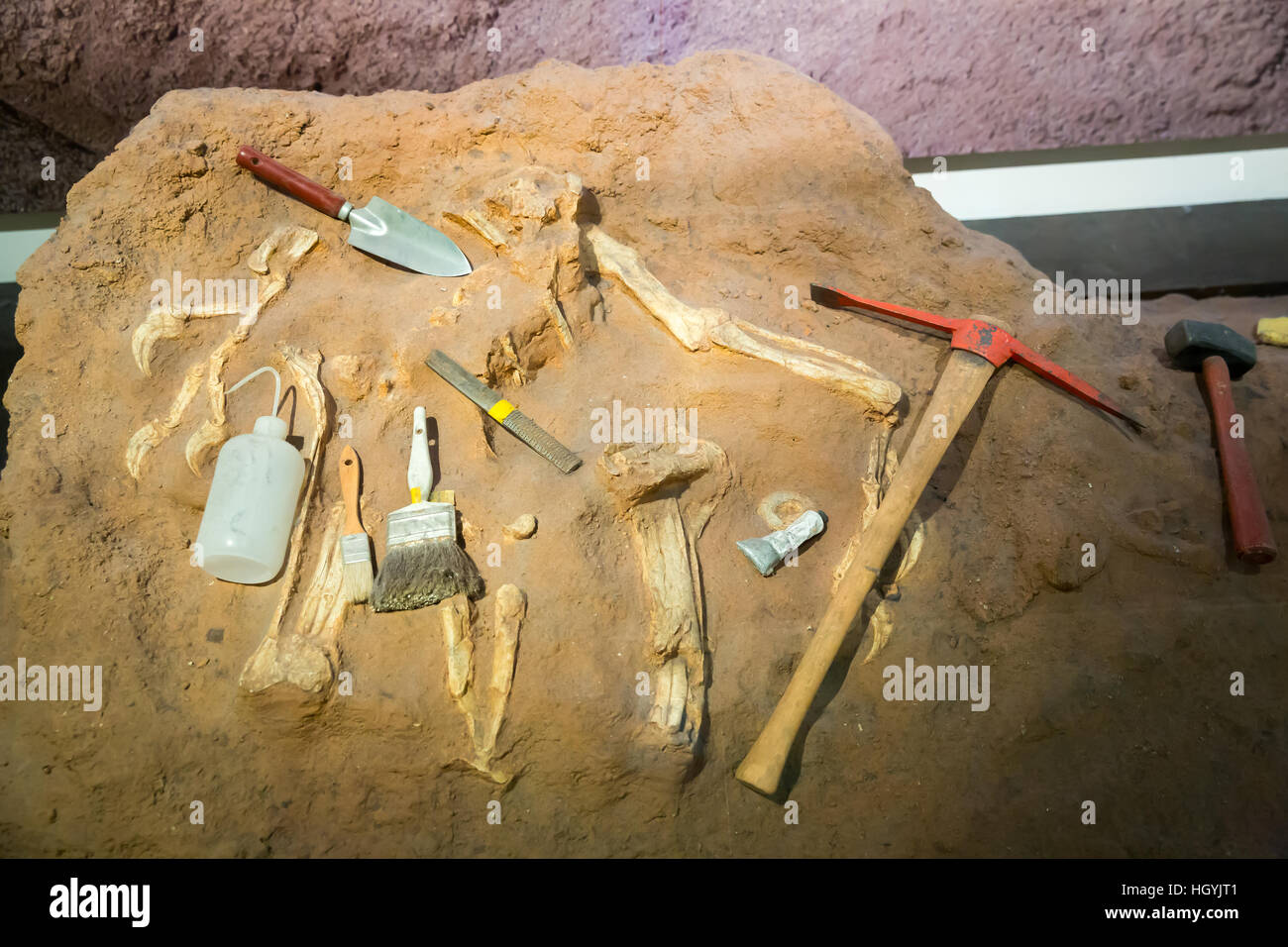 Skeleton and archaeological tools around. Stock Photohttps://www.alamy.com/image-license-details/?v=1https://www.alamy.com/stock-photo-skeleton-and-archaeological-tools-around-130914561.html
Skeleton and archaeological tools around. Stock Photohttps://www.alamy.com/image-license-details/?v=1https://www.alamy.com/stock-photo-skeleton-and-archaeological-tools-around-130914561.htmlRFHGYJT1–Skeleton and archaeological tools around.
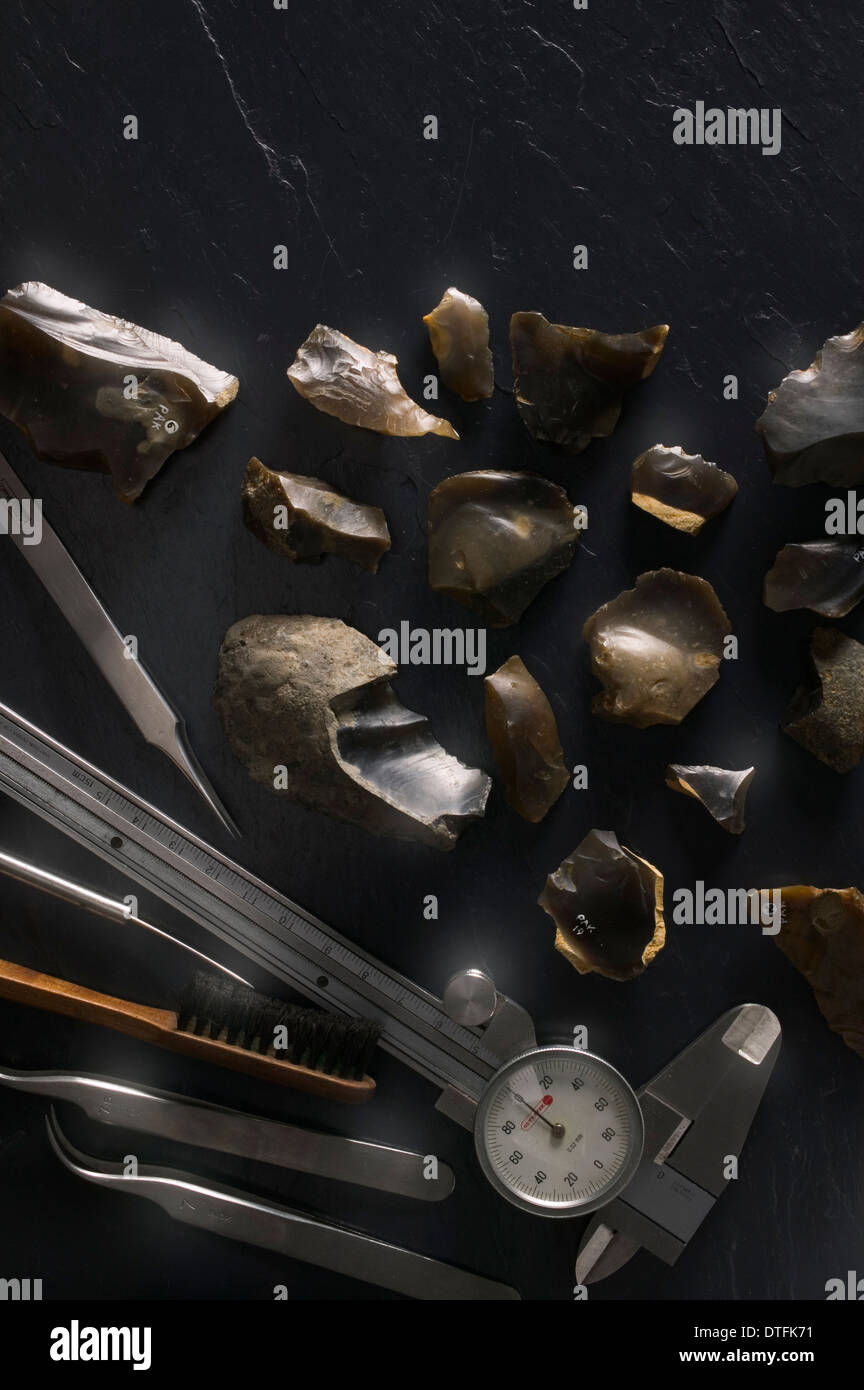 Flint tools Stock Photohttps://www.alamy.com/image-license-details/?v=1https://www.alamy.com/flint-tools-image66727221.html
Flint tools Stock Photohttps://www.alamy.com/image-license-details/?v=1https://www.alamy.com/flint-tools-image66727221.htmlRMDTFK71–Flint tools
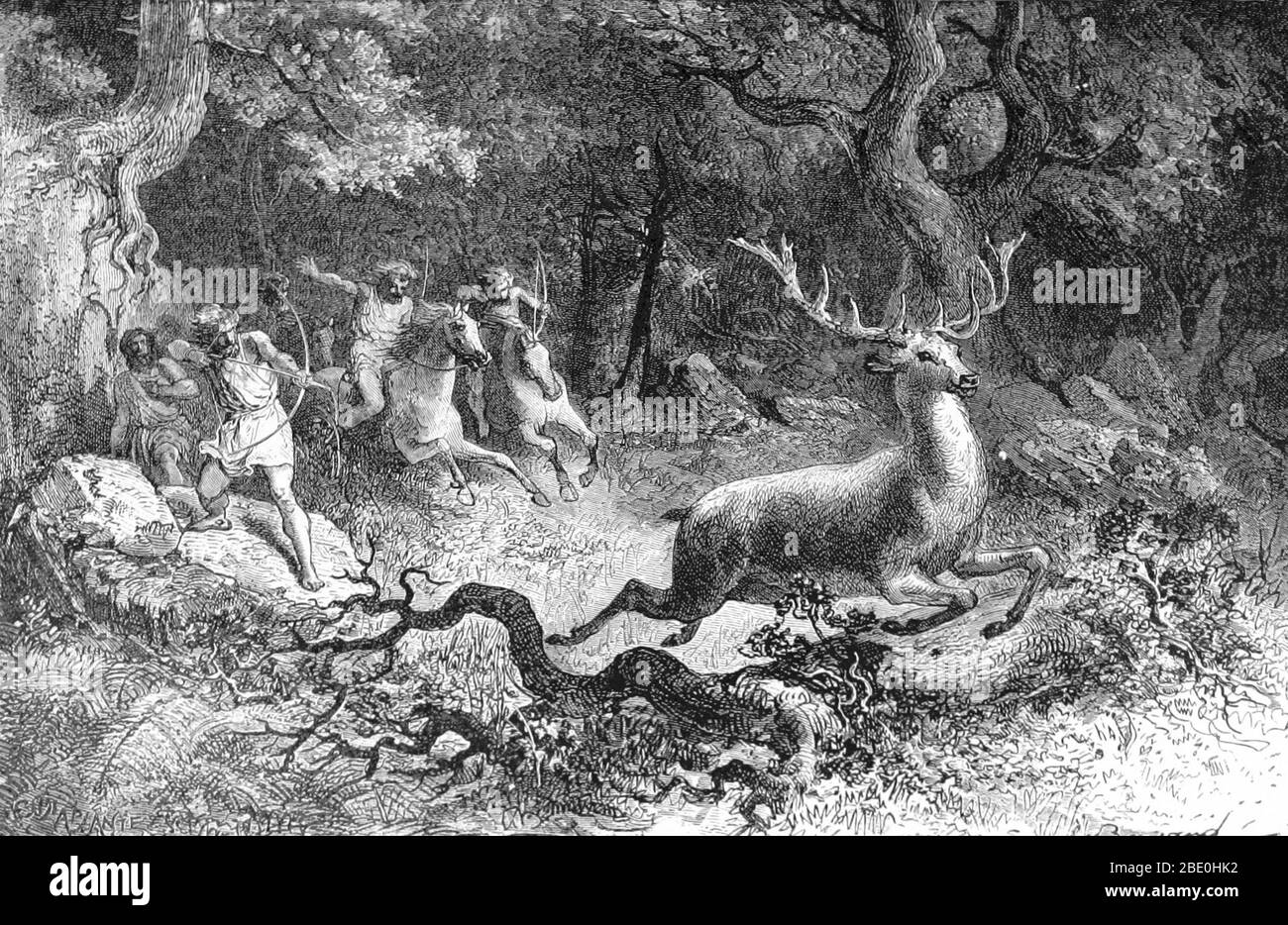 The Bronze Age is the time period when people made tools from an alloy (a mixture of metals) called bronze. Bronze is a mixture of mainly copper and tin: usually nine parts copper to one part tin. Materials like wood and stone were also used for tools, but bronze was better for cutting and chopping, and was easy to shape. Chronologically, it stands between the Stone Age and Iron Age. Humans learned how to smelt, melt, cast, rivet, and to forge copper and bronze. The bow seems to have been invented by the late Paleolithic or early Mesolithic. Image taken from page 301 of 'Primitive Man' by Loui Stock Photohttps://www.alamy.com/image-license-details/?v=1https://www.alamy.com/the-bronze-age-is-the-time-period-when-people-made-tools-from-an-alloy-a-mixture-of-metals-called-bronze-bronze-is-a-mixture-of-mainly-copper-and-tin-usually-nine-parts-copper-to-one-part-tin-materials-like-wood-and-stone-were-also-used-for-tools-but-bronze-was-better-for-cutting-and-chopping-and-was-easy-to-shape-chronologically-it-stands-between-the-stone-age-and-iron-age-humans-learned-how-to-smelt-melt-cast-rivet-and-to-forge-copper-and-bronze-the-bow-seems-to-have-been-invented-by-the-late-paleolithic-or-early-mesolithic-image-taken-from-page-301-of-primitive-man-by-loui-image352826406.html
The Bronze Age is the time period when people made tools from an alloy (a mixture of metals) called bronze. Bronze is a mixture of mainly copper and tin: usually nine parts copper to one part tin. Materials like wood and stone were also used for tools, but bronze was better for cutting and chopping, and was easy to shape. Chronologically, it stands between the Stone Age and Iron Age. Humans learned how to smelt, melt, cast, rivet, and to forge copper and bronze. The bow seems to have been invented by the late Paleolithic or early Mesolithic. Image taken from page 301 of 'Primitive Man' by Loui Stock Photohttps://www.alamy.com/image-license-details/?v=1https://www.alamy.com/the-bronze-age-is-the-time-period-when-people-made-tools-from-an-alloy-a-mixture-of-metals-called-bronze-bronze-is-a-mixture-of-mainly-copper-and-tin-usually-nine-parts-copper-to-one-part-tin-materials-like-wood-and-stone-were-also-used-for-tools-but-bronze-was-better-for-cutting-and-chopping-and-was-easy-to-shape-chronologically-it-stands-between-the-stone-age-and-iron-age-humans-learned-how-to-smelt-melt-cast-rivet-and-to-forge-copper-and-bronze-the-bow-seems-to-have-been-invented-by-the-late-paleolithic-or-early-mesolithic-image-taken-from-page-301-of-primitive-man-by-loui-image352826406.htmlRM2BE0HK2–The Bronze Age is the time period when people made tools from an alloy (a mixture of metals) called bronze. Bronze is a mixture of mainly copper and tin: usually nine parts copper to one part tin. Materials like wood and stone were also used for tools, but bronze was better for cutting and chopping, and was easy to shape. Chronologically, it stands between the Stone Age and Iron Age. Humans learned how to smelt, melt, cast, rivet, and to forge copper and bronze. The bow seems to have been invented by the late Paleolithic or early Mesolithic. Image taken from page 301 of 'Primitive Man' by Loui
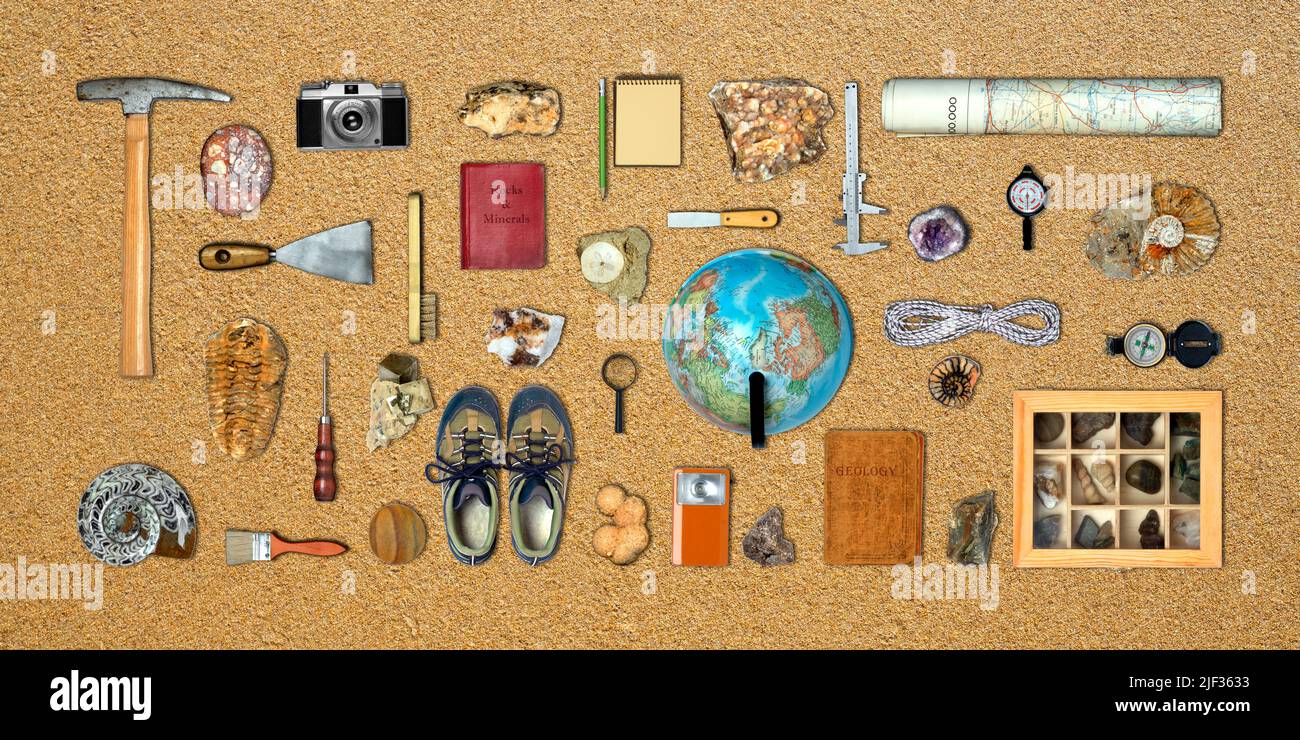 Topview of Set Fieldwork Geology Tools on Textured Background Stock Photohttps://www.alamy.com/image-license-details/?v=1https://www.alamy.com/topview-of-set-fieldwork-geology-tools-on-textured-background-image473970423.html
Topview of Set Fieldwork Geology Tools on Textured Background Stock Photohttps://www.alamy.com/image-license-details/?v=1https://www.alamy.com/topview-of-set-fieldwork-geology-tools-on-textured-background-image473970423.htmlRF2JF3633–Topview of Set Fieldwork Geology Tools on Textured Background
 Johannesburg South Africa,Braamfontein,Wits University,University of the Witwatersrand,education,Origins Centre,museum,Paleontology,archeology,display Stock Photohttps://www.alamy.com/image-license-details/?v=1https://www.alamy.com/stock-photo-johannesburg-south-africabraamfonteinwits-universityuniversity-of-80465311.html
Johannesburg South Africa,Braamfontein,Wits University,University of the Witwatersrand,education,Origins Centre,museum,Paleontology,archeology,display Stock Photohttps://www.alamy.com/image-license-details/?v=1https://www.alamy.com/stock-photo-johannesburg-south-africabraamfonteinwits-universityuniversity-of-80465311.htmlRMEJWE93–Johannesburg South Africa,Braamfontein,Wits University,University of the Witwatersrand,education,Origins Centre,museum,Paleontology,archeology,display
 Close-up detail view of archeological excavation digging site with big dinosaurus or mammoth bone remains and different tools brush hummer chisel Stock Photohttps://www.alamy.com/image-license-details/?v=1https://www.alamy.com/close-up-detail-view-of-archeological-excavation-digging-site-with-big-dinosaurus-or-mammoth-bone-remains-and-different-tools-brush-hummer-chisel-image474940906.html
Close-up detail view of archeological excavation digging site with big dinosaurus or mammoth bone remains and different tools brush hummer chisel Stock Photohttps://www.alamy.com/image-license-details/?v=1https://www.alamy.com/close-up-detail-view-of-archeological-excavation-digging-site-with-big-dinosaurus-or-mammoth-bone-remains-and-different-tools-brush-hummer-chisel-image474940906.htmlRF2JGKBY6–Close-up detail view of archeological excavation digging site with big dinosaurus or mammoth bone remains and different tools brush hummer chisel
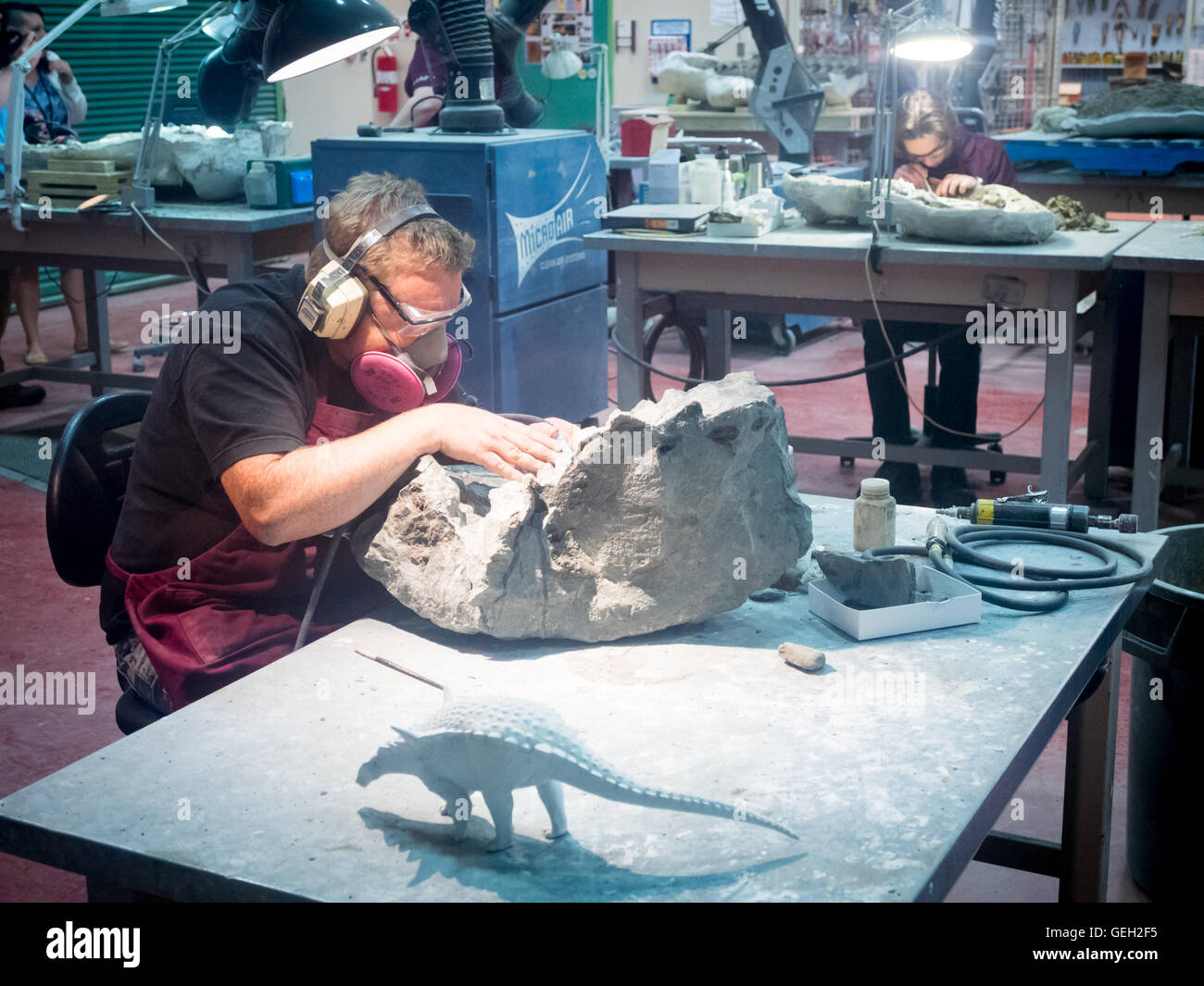 A paleontologist examines a fossil at the Preparation Lab in the Royal Tyrrell Museum of Paleontology. Drumheller, Canada. Stock Photohttps://www.alamy.com/image-license-details/?v=1https://www.alamy.com/stock-photo-a-paleontologist-examines-a-fossil-at-the-preparation-lab-in-the-royal-112242569.html
A paleontologist examines a fossil at the Preparation Lab in the Royal Tyrrell Museum of Paleontology. Drumheller, Canada. Stock Photohttps://www.alamy.com/image-license-details/?v=1https://www.alamy.com/stock-photo-a-paleontologist-examines-a-fossil-at-the-preparation-lab-in-the-royal-112242569.htmlRMGEH2F5–A paleontologist examines a fossil at the Preparation Lab in the Royal Tyrrell Museum of Paleontology. Drumheller, Canada.
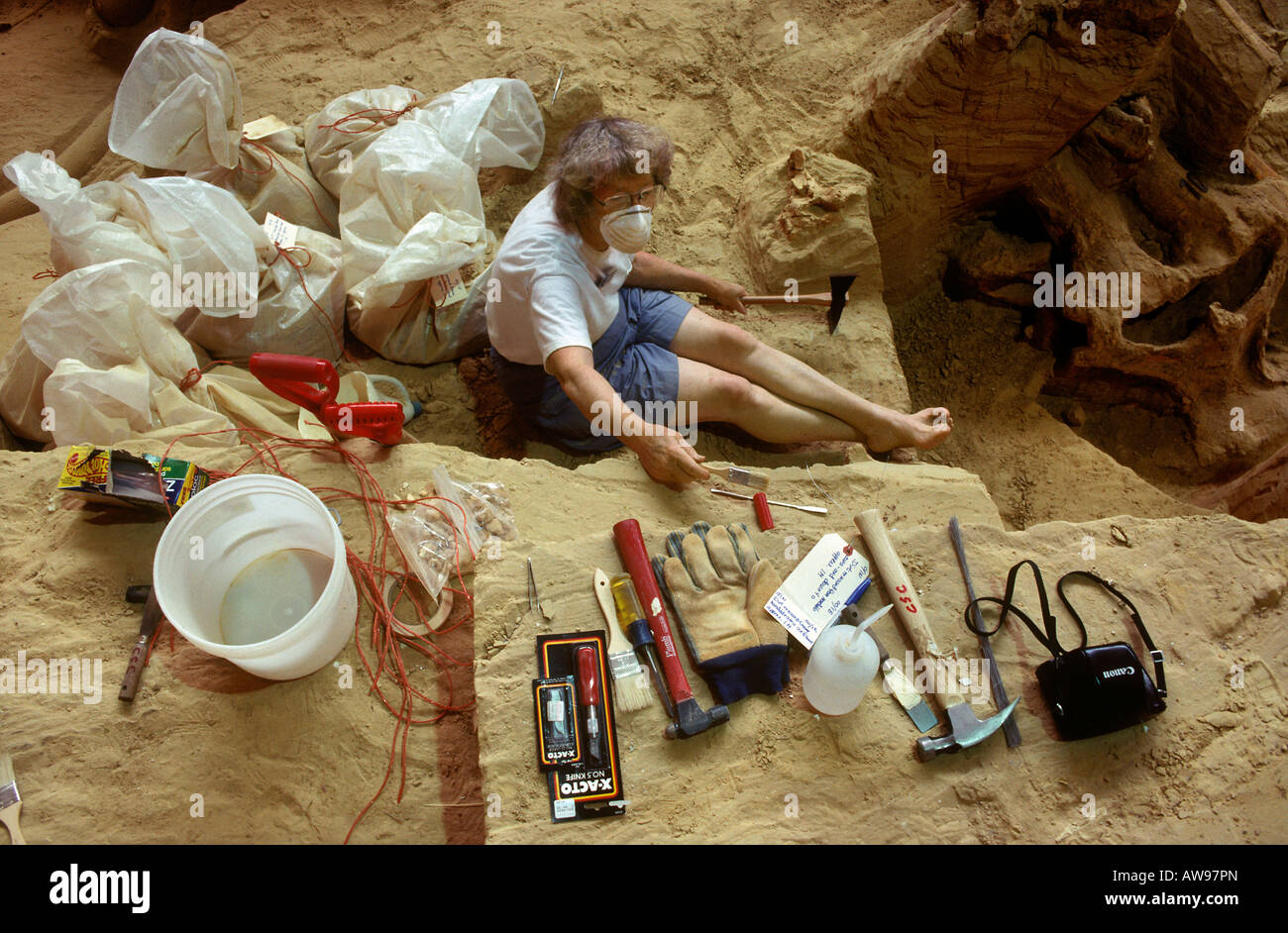 Paleontologist Tools Excavating Colombian Mammoth Remains The Mammoth Site South Dakota Stock Photohttps://www.alamy.com/image-license-details/?v=1https://www.alamy.com/stock-photo-paleontologist-tools-excavating-colombian-mammoth-remains-the-mammoth-16507388.html
Paleontologist Tools Excavating Colombian Mammoth Remains The Mammoth Site South Dakota Stock Photohttps://www.alamy.com/image-license-details/?v=1https://www.alamy.com/stock-photo-paleontologist-tools-excavating-colombian-mammoth-remains-the-mammoth-16507388.htmlRMAW97PN–Paleontologist Tools Excavating Colombian Mammoth Remains The Mammoth Site South Dakota
 Historical museum with fossil dinosaur and fish skeletons, stone age tools. Vector cartoon illustration of paleontology exhibition with prehistoric extinct animals bones and archaeology exhibits Stock Vectorhttps://www.alamy.com/image-license-details/?v=1https://www.alamy.com/historical-museum-with-fossil-dinosaur-and-fish-skeletons-stone-age-tools-vector-cartoon-illustration-of-paleontology-exhibition-with-prehistoric-extinct-animals-bones-and-archaeology-exhibits-image476829396.html
Historical museum with fossil dinosaur and fish skeletons, stone age tools. Vector cartoon illustration of paleontology exhibition with prehistoric extinct animals bones and archaeology exhibits Stock Vectorhttps://www.alamy.com/image-license-details/?v=1https://www.alamy.com/historical-museum-with-fossil-dinosaur-and-fish-skeletons-stone-age-tools-vector-cartoon-illustration-of-paleontology-exhibition-with-prehistoric-extinct-animals-bones-and-archaeology-exhibits-image476829396.htmlRF2JKNCN8–Historical museum with fossil dinosaur and fish skeletons, stone age tools. Vector cartoon illustration of paleontology exhibition with prehistoric extinct animals bones and archaeology exhibits
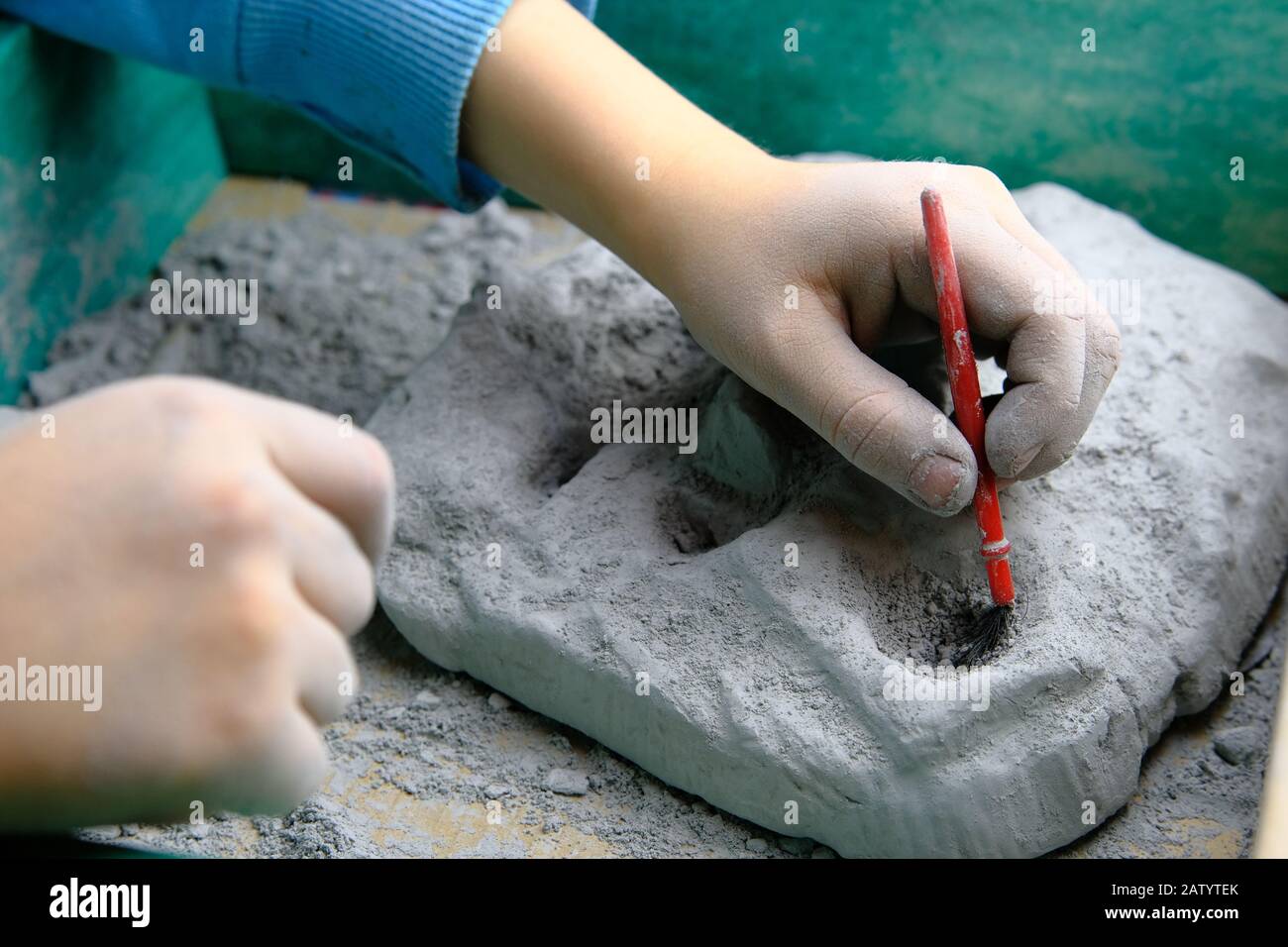 Child playing fossil, mineral and treasure excavation game. Child is using tools, such as a brush. Stock Photohttps://www.alamy.com/image-license-details/?v=1https://www.alamy.com/child-playing-fossil-mineral-and-treasure-excavation-game-child-is-using-tools-such-as-a-brush-image342360667.html
Child playing fossil, mineral and treasure excavation game. Child is using tools, such as a brush. Stock Photohttps://www.alamy.com/image-license-details/?v=1https://www.alamy.com/child-playing-fossil-mineral-and-treasure-excavation-game-child-is-using-tools-such-as-a-brush-image342360667.htmlRF2ATYTEK–Child playing fossil, mineral and treasure excavation game. Child is using tools, such as a brush.
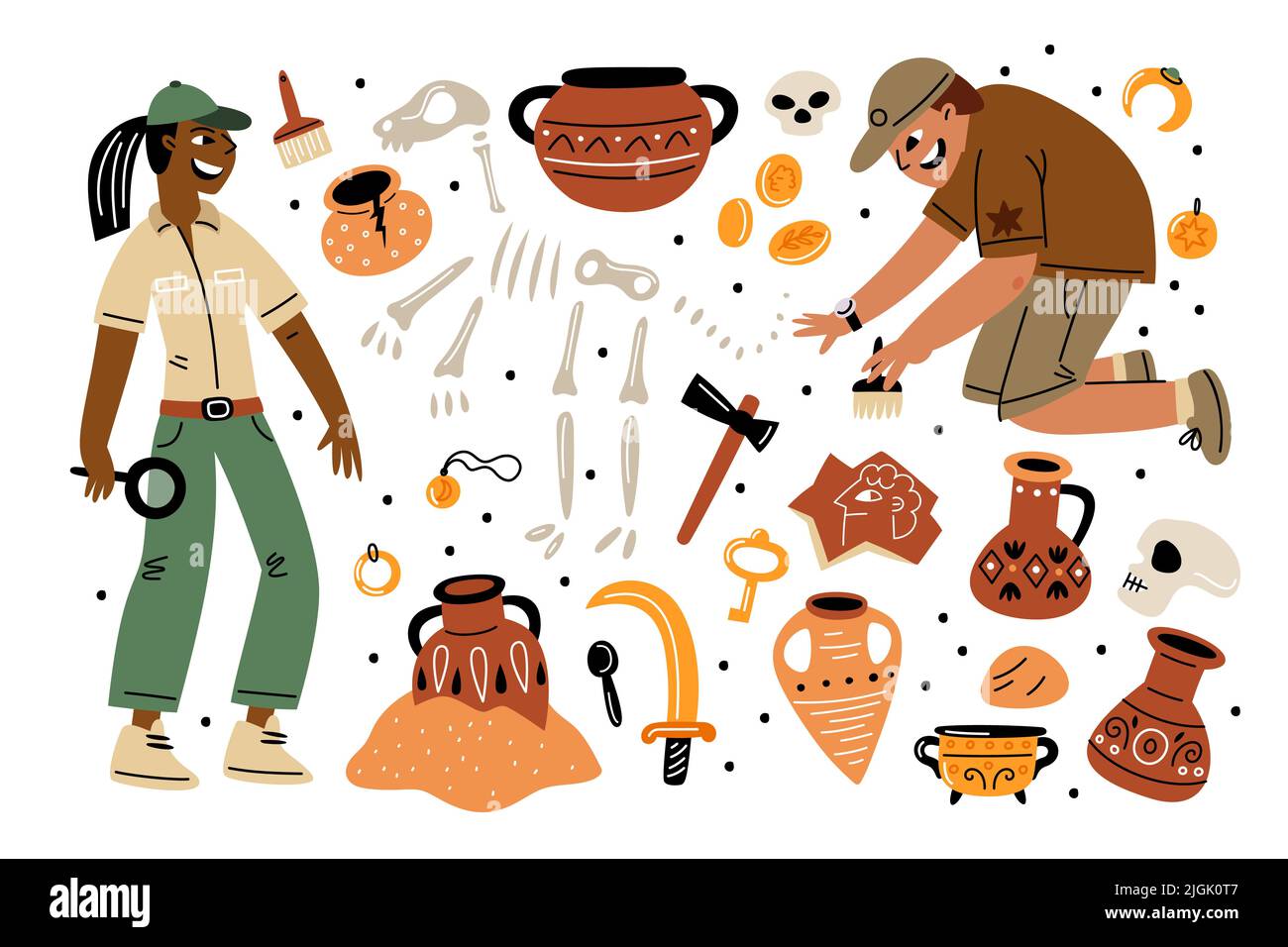 Cartoon archeology. Archaeologists at work. Historical values excavation. Paleontology and geology. Ancient vases. Dinosaur bones. Archeological tools Stock Vectorhttps://www.alamy.com/image-license-details/?v=1https://www.alamy.com/cartoon-archeology-archaeologists-at-work-historical-values-excavation-paleontology-and-geology-ancient-vases-dinosaur-bones-archeological-tools-image474932199.html
Cartoon archeology. Archaeologists at work. Historical values excavation. Paleontology and geology. Ancient vases. Dinosaur bones. Archeological tools Stock Vectorhttps://www.alamy.com/image-license-details/?v=1https://www.alamy.com/cartoon-archeology-archaeologists-at-work-historical-values-excavation-paleontology-and-geology-ancient-vases-dinosaur-bones-archeological-tools-image474932199.htmlRF2JGK0T7–Cartoon archeology. Archaeologists at work. Historical values excavation. Paleontology and geology. Ancient vases. Dinosaur bones. Archeological tools
 Archaeologists exploring artifacts with excavation tools. Cartoon paleontology scientists studying dinosaurs fossil skeletons bones and ancient vase. Characters searching archeology elements. Stock Vectorhttps://www.alamy.com/image-license-details/?v=1https://www.alamy.com/archaeologists-exploring-artifacts-with-excavation-tools-cartoon-paleontology-scientists-studying-dinosaurs-fossil-skeletons-bones-and-ancient-vase-characters-searching-archeology-elements-image535879913.html
Archaeologists exploring artifacts with excavation tools. Cartoon paleontology scientists studying dinosaurs fossil skeletons bones and ancient vase. Characters searching archeology elements. Stock Vectorhttps://www.alamy.com/image-license-details/?v=1https://www.alamy.com/archaeologists-exploring-artifacts-with-excavation-tools-cartoon-paleontology-scientists-studying-dinosaurs-fossil-skeletons-bones-and-ancient-vase-characters-searching-archeology-elements-image535879913.htmlRF2P3RC89–Archaeologists exploring artifacts with excavation tools. Cartoon paleontology scientists studying dinosaurs fossil skeletons bones and ancient vase. Characters searching archeology elements.
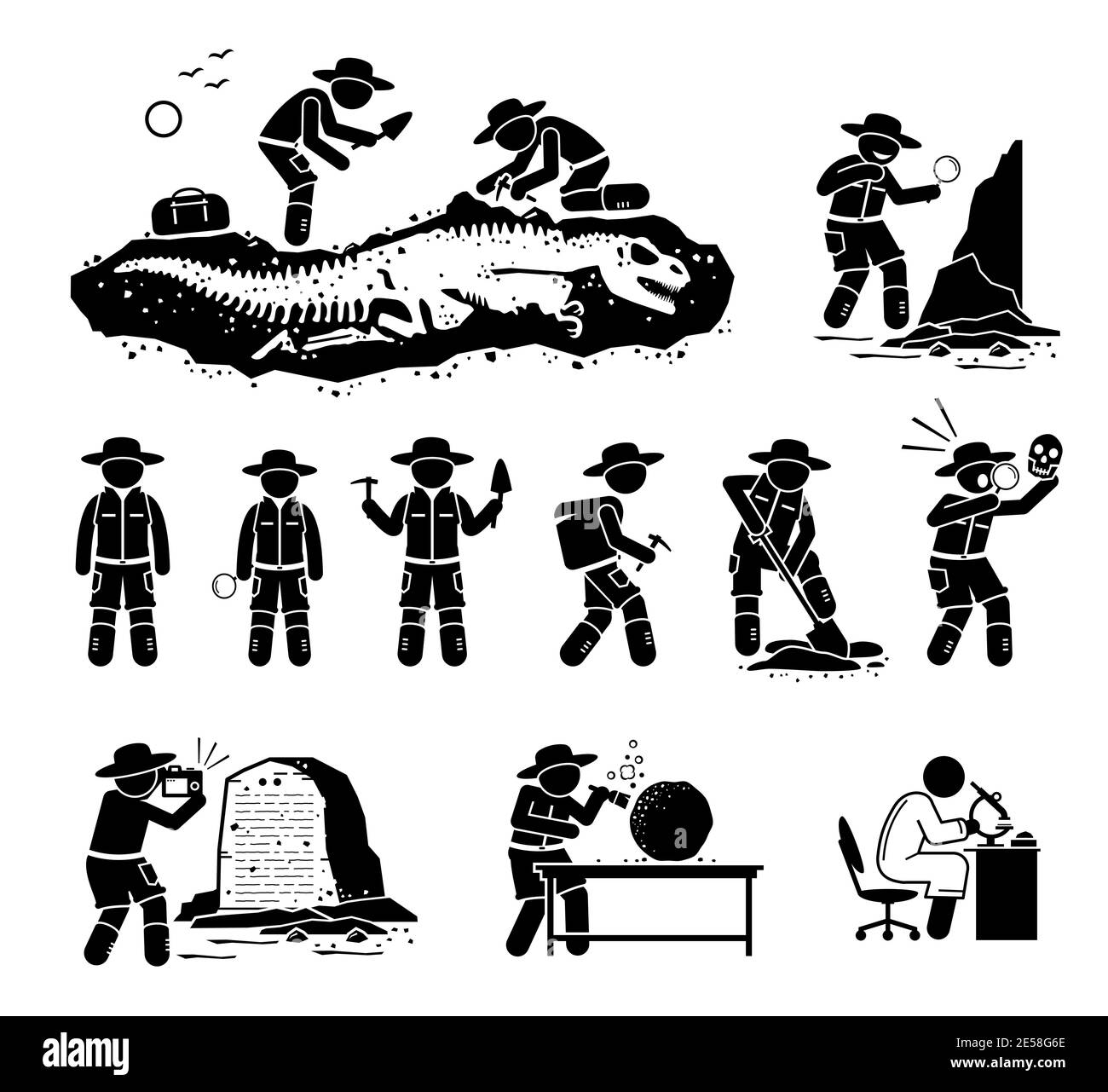 Paleontologist scientist digging dinosaur bone fossil and discover ancient artifact illustrations. Vector cliparts of paleontology, archaeology, and a Stock Vectorhttps://www.alamy.com/image-license-details/?v=1https://www.alamy.com/paleontologist-scientist-digging-dinosaur-bone-fossil-and-discover-ancient-artifact-illustrations-vector-cliparts-of-paleontology-archaeology-and-a-image399100086.html
Paleontologist scientist digging dinosaur bone fossil and discover ancient artifact illustrations. Vector cliparts of paleontology, archaeology, and a Stock Vectorhttps://www.alamy.com/image-license-details/?v=1https://www.alamy.com/paleontologist-scientist-digging-dinosaur-bone-fossil-and-discover-ancient-artifact-illustrations-vector-cliparts-of-paleontology-archaeology-and-a-image399100086.htmlRF2E58G6E–Paleontologist scientist digging dinosaur bone fossil and discover ancient artifact illustrations. Vector cliparts of paleontology, archaeology, and a
 A monograph on the fossil Reptilia of the Cretaceous formations, London, Printed for the Palæontographical Society, 1851-64, Great Britain, paleontology, Cretaceous, reptiles, fossil, fossil stories, The illustration features a series of prehistoric stone tools arranged in a systematic manner, showcasing various shapes and sizes. Each tool is numbered, indicating its distinct characteristics and potential uses in early human activities. The items exhibit signs of wear and chipping, suggesting they were crafted for specific tasks such as cutting or scraping. The variety of forms highlights the Stock Photohttps://www.alamy.com/image-license-details/?v=1https://www.alamy.com/a-monograph-on-the-fossil-reptilia-of-the-cretaceous-formations-london-printed-for-the-palontographical-society-1851-64-great-britain-paleontology-cretaceous-reptiles-fossil-fossil-stories-the-illustration-features-a-series-of-prehistoric-stone-tools-arranged-in-a-systematic-manner-showcasing-various-shapes-and-sizes-each-tool-is-numbered-indicating-its-distinct-characteristics-and-potential-uses-in-early-human-activities-the-items-exhibit-signs-of-wear-and-chipping-suggesting-they-were-crafted-for-specific-tasks-such-as-cutting-or-scraping-the-variety-of-forms-highlights-the-image636068389.html
A monograph on the fossil Reptilia of the Cretaceous formations, London, Printed for the Palæontographical Society, 1851-64, Great Britain, paleontology, Cretaceous, reptiles, fossil, fossil stories, The illustration features a series of prehistoric stone tools arranged in a systematic manner, showcasing various shapes and sizes. Each tool is numbered, indicating its distinct characteristics and potential uses in early human activities. The items exhibit signs of wear and chipping, suggesting they were crafted for specific tasks such as cutting or scraping. The variety of forms highlights the Stock Photohttps://www.alamy.com/image-license-details/?v=1https://www.alamy.com/a-monograph-on-the-fossil-reptilia-of-the-cretaceous-formations-london-printed-for-the-palontographical-society-1851-64-great-britain-paleontology-cretaceous-reptiles-fossil-fossil-stories-the-illustration-features-a-series-of-prehistoric-stone-tools-arranged-in-a-systematic-manner-showcasing-various-shapes-and-sizes-each-tool-is-numbered-indicating-its-distinct-characteristics-and-potential-uses-in-early-human-activities-the-items-exhibit-signs-of-wear-and-chipping-suggesting-they-were-crafted-for-specific-tasks-such-as-cutting-or-scraping-the-variety-of-forms-highlights-the-image636068389.htmlRM2YXRBM5–A monograph on the fossil Reptilia of the Cretaceous formations, London, Printed for the Palæontographical Society, 1851-64, Great Britain, paleontology, Cretaceous, reptiles, fossil, fossil stories, The illustration features a series of prehistoric stone tools arranged in a systematic manner, showcasing various shapes and sizes. Each tool is numbered, indicating its distinct characteristics and potential uses in early human activities. The items exhibit signs of wear and chipping, suggesting they were crafted for specific tasks such as cutting or scraping. The variety of forms highlights the
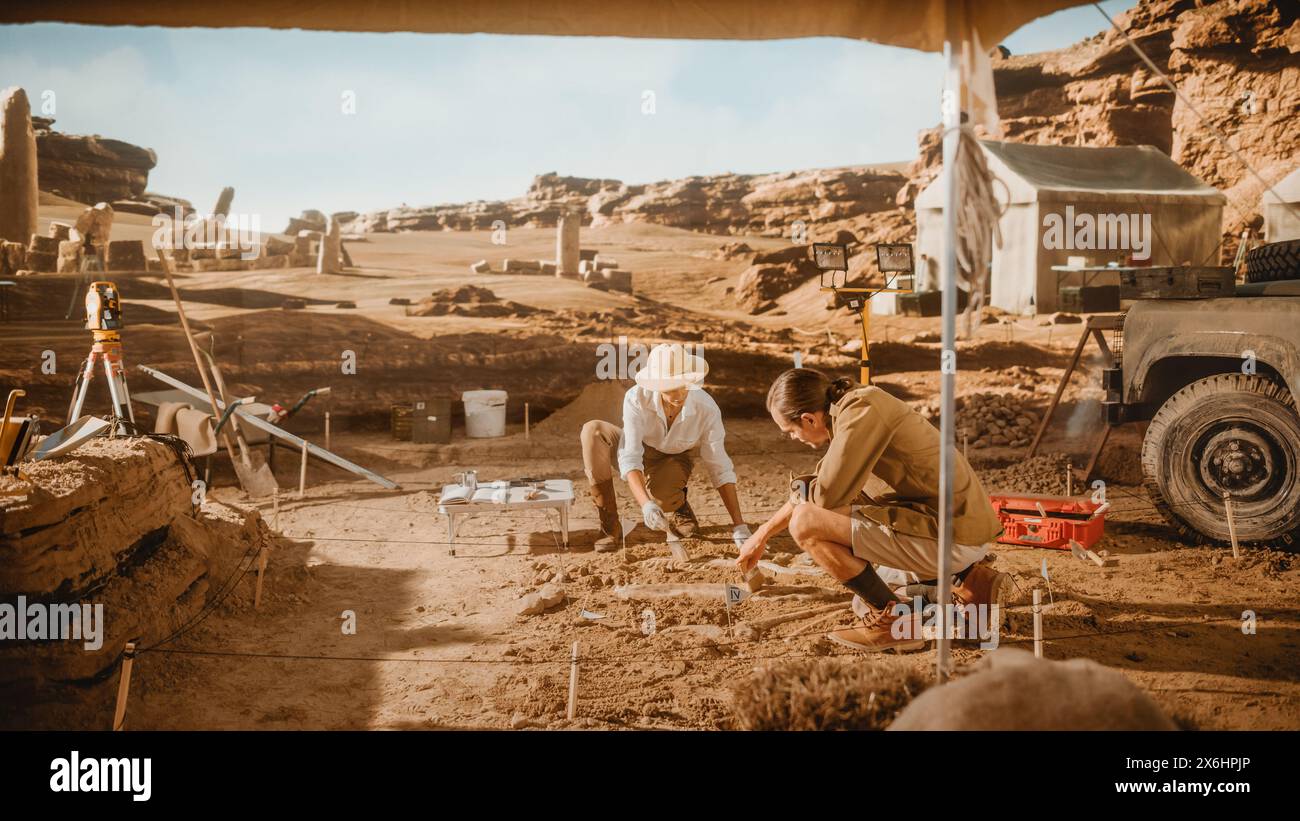 Archaeological Digging Site: Two Great Archeologists Work on Excavation Site, Carefully Cleaning with Brushes and Tools Newly Discovered Ancient Civilization Cultural Artifacts, Fossil Remains Stock Photohttps://www.alamy.com/image-license-details/?v=1https://www.alamy.com/archaeological-digging-site-two-great-archeologists-work-on-excavation-site-carefully-cleaning-with-brushes-and-tools-newly-discovered-ancient-civilization-cultural-artifacts-fossil-remains-image606441774.html
Archaeological Digging Site: Two Great Archeologists Work on Excavation Site, Carefully Cleaning with Brushes and Tools Newly Discovered Ancient Civilization Cultural Artifacts, Fossil Remains Stock Photohttps://www.alamy.com/image-license-details/?v=1https://www.alamy.com/archaeological-digging-site-two-great-archeologists-work-on-excavation-site-carefully-cleaning-with-brushes-and-tools-newly-discovered-ancient-civilization-cultural-artifacts-fossil-remains-image606441774.htmlRF2X6HPJP–Archaeological Digging Site: Two Great Archeologists Work on Excavation Site, Carefully Cleaning with Brushes and Tools Newly Discovered Ancient Civilization Cultural Artifacts, Fossil Remains
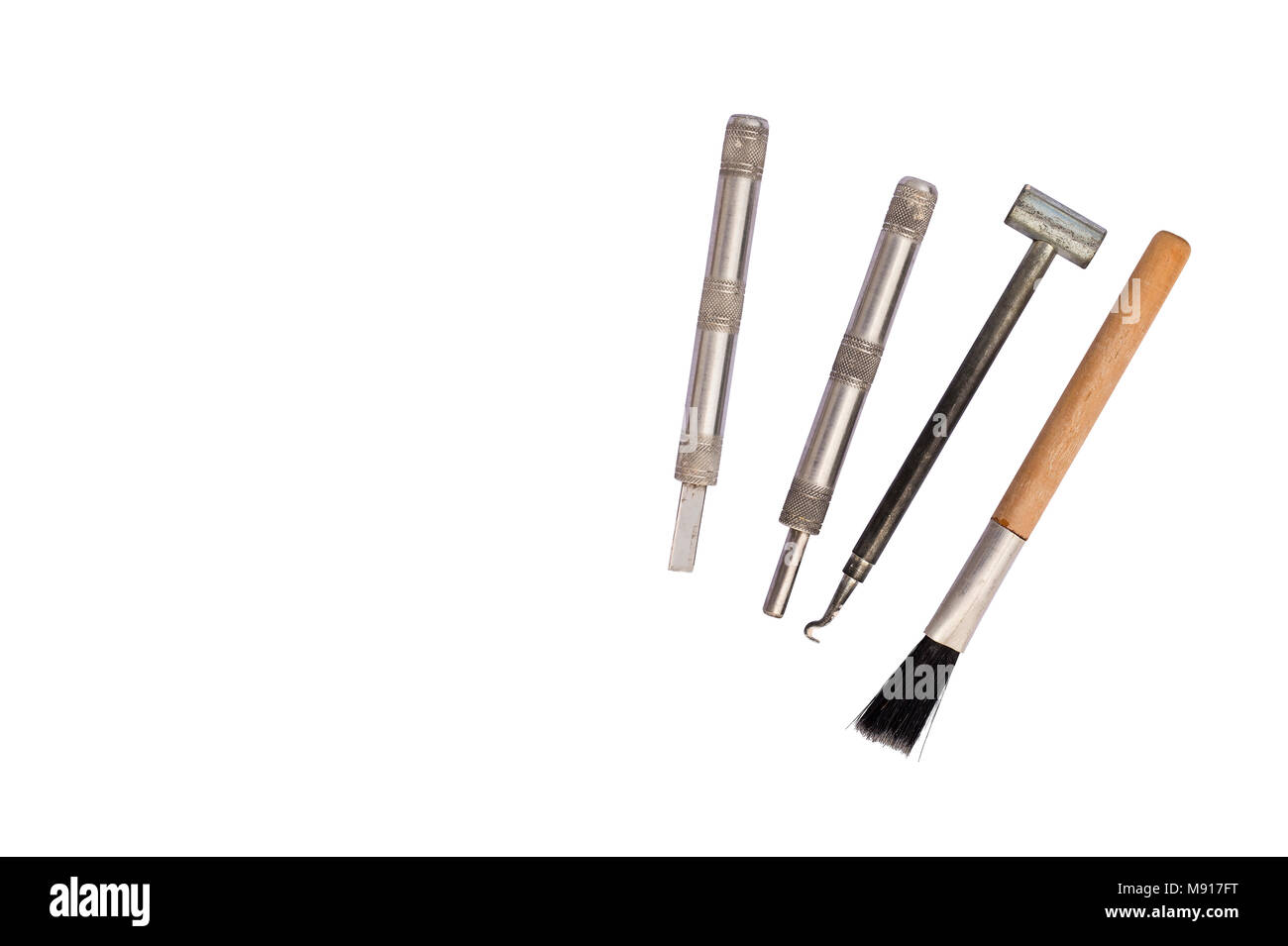 Equipment for geological excavation is a set of simulator tools for training. Stock Photohttps://www.alamy.com/image-license-details/?v=1https://www.alamy.com/equipment-for-geological-excavation-is-a-set-of-simulator-tools-for-training-image177663468.html
Equipment for geological excavation is a set of simulator tools for training. Stock Photohttps://www.alamy.com/image-license-details/?v=1https://www.alamy.com/equipment-for-geological-excavation-is-a-set-of-simulator-tools-for-training-image177663468.htmlRFM917FT–Equipment for geological excavation is a set of simulator tools for training.
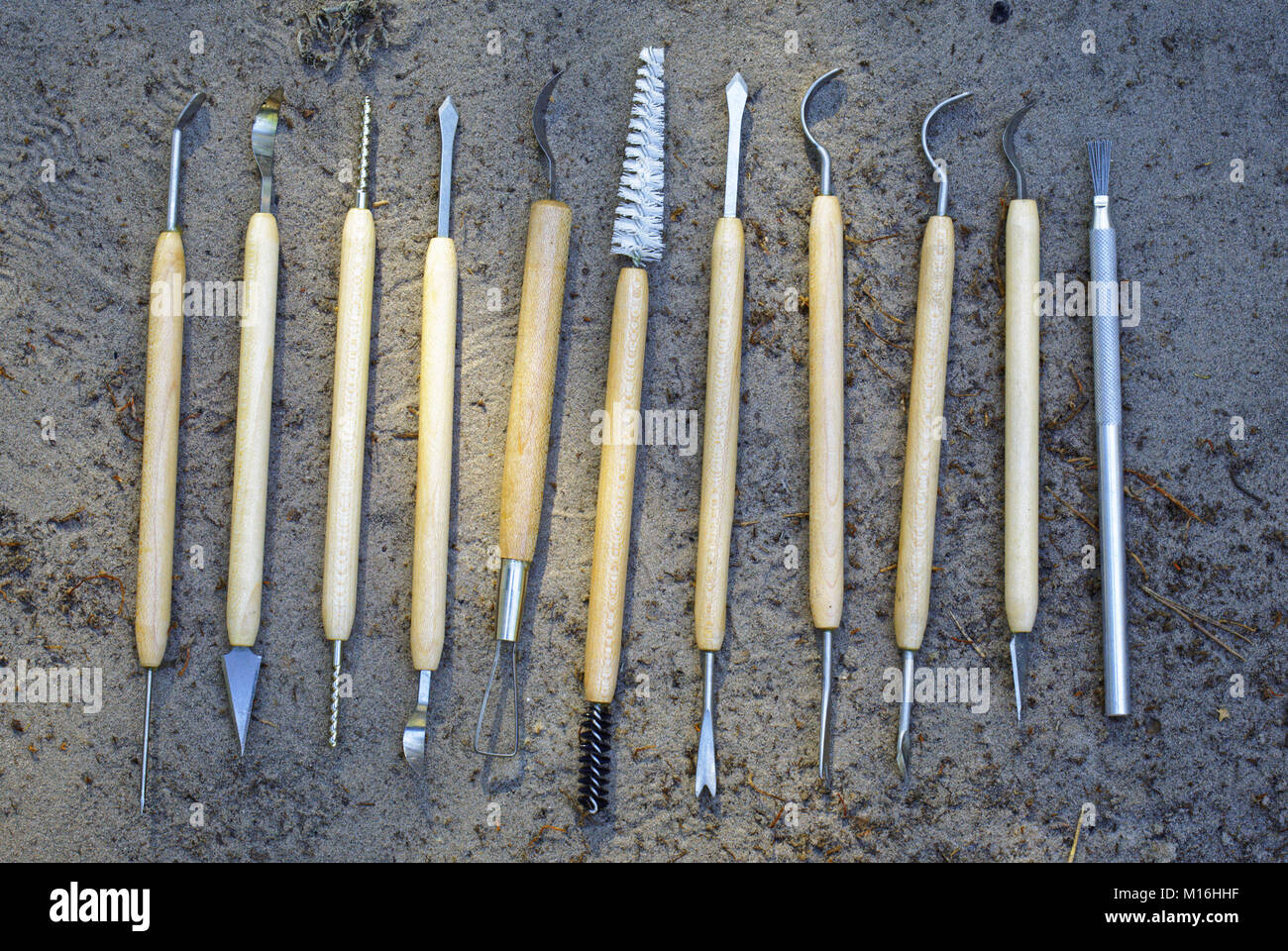 Different tools for qualitative cleaning of finds in archeology, paleontology and geology Stock Photohttps://www.alamy.com/image-license-details/?v=1https://www.alamy.com/stock-photo-different-tools-for-qualitative-cleaning-of-finds-in-archeology-paleontology-172863867.html
Different tools for qualitative cleaning of finds in archeology, paleontology and geology Stock Photohttps://www.alamy.com/image-license-details/?v=1https://www.alamy.com/stock-photo-different-tools-for-qualitative-cleaning-of-finds-in-archeology-paleontology-172863867.htmlRFM16HHF–Different tools for qualitative cleaning of finds in archeology, paleontology and geology
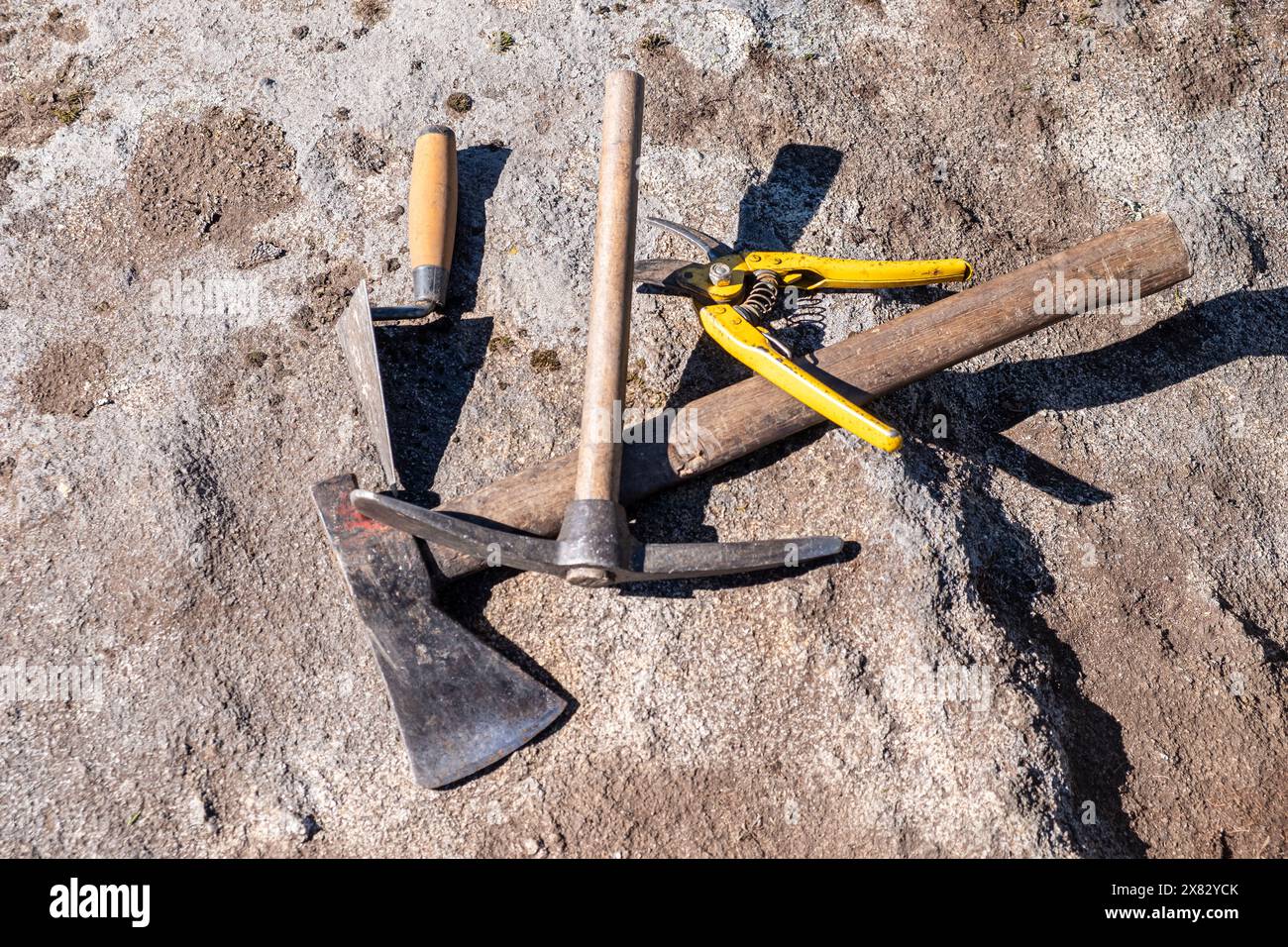 work tools in an archaeological excavation Stock Photohttps://www.alamy.com/image-license-details/?v=1https://www.alamy.com/work-tools-in-an-archaeological-excavation-image607345555.html
work tools in an archaeological excavation Stock Photohttps://www.alamy.com/image-license-details/?v=1https://www.alamy.com/work-tools-in-an-archaeological-excavation-image607345555.htmlRF2X82YCK–work tools in an archaeological excavation
 Flint Hand Axe With Belmenite Fossil Stock Photohttps://www.alamy.com/image-license-details/?v=1https://www.alamy.com/stock-photo-flint-hand-axe-with-belmenite-fossil-74514675.html
Flint Hand Axe With Belmenite Fossil Stock Photohttps://www.alamy.com/image-license-details/?v=1https://www.alamy.com/stock-photo-flint-hand-axe-with-belmenite-fossil-74514675.htmlRME96C6B–Flint Hand Axe With Belmenite Fossil
 selective focus, rubber bucket filled with soil in an archaeological excavation Stock Photohttps://www.alamy.com/image-license-details/?v=1https://www.alamy.com/selective-focus-rubber-bucket-filled-with-soil-in-an-archaeological-excavation-image546278364.html
selective focus, rubber bucket filled with soil in an archaeological excavation Stock Photohttps://www.alamy.com/image-license-details/?v=1https://www.alamy.com/selective-focus-rubber-bucket-filled-with-soil-in-an-archaeological-excavation-image546278364.htmlRF2PMN3HG–selective focus, rubber bucket filled with soil in an archaeological excavation
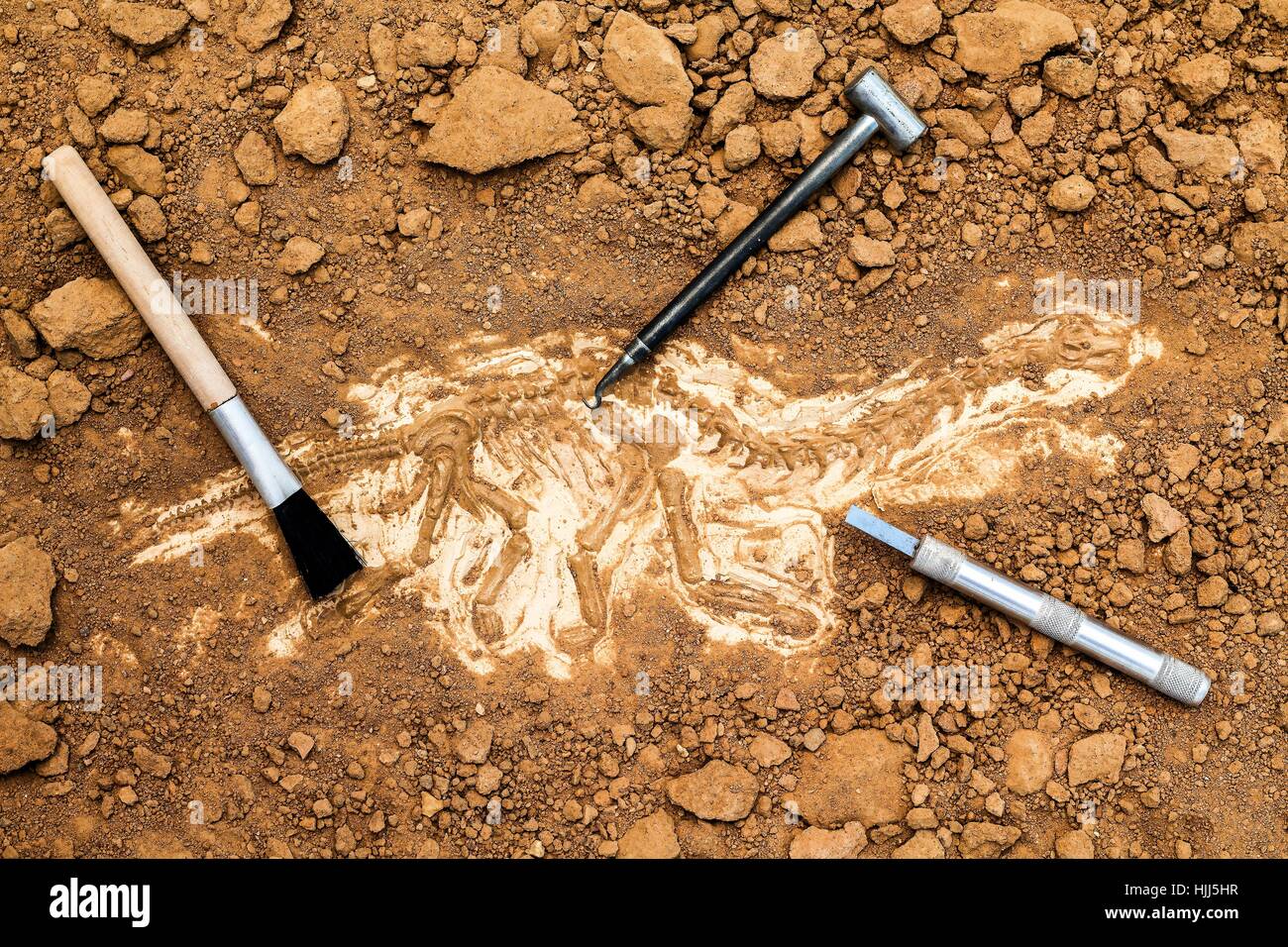 Skeleton and archaeological tools.Training for dig fossil.Simulated same as real digging. Stock Photohttps://www.alamy.com/image-license-details/?v=1https://www.alamy.com/stock-photo-skeleton-and-archaeological-toolstraining-for-dig-fossilsimulated-131935939.html
Skeleton and archaeological tools.Training for dig fossil.Simulated same as real digging. Stock Photohttps://www.alamy.com/image-license-details/?v=1https://www.alamy.com/stock-photo-skeleton-and-archaeological-toolstraining-for-dig-fossilsimulated-131935939.htmlRFHJJ5HR–Skeleton and archaeological tools.Training for dig fossil.Simulated same as real digging.
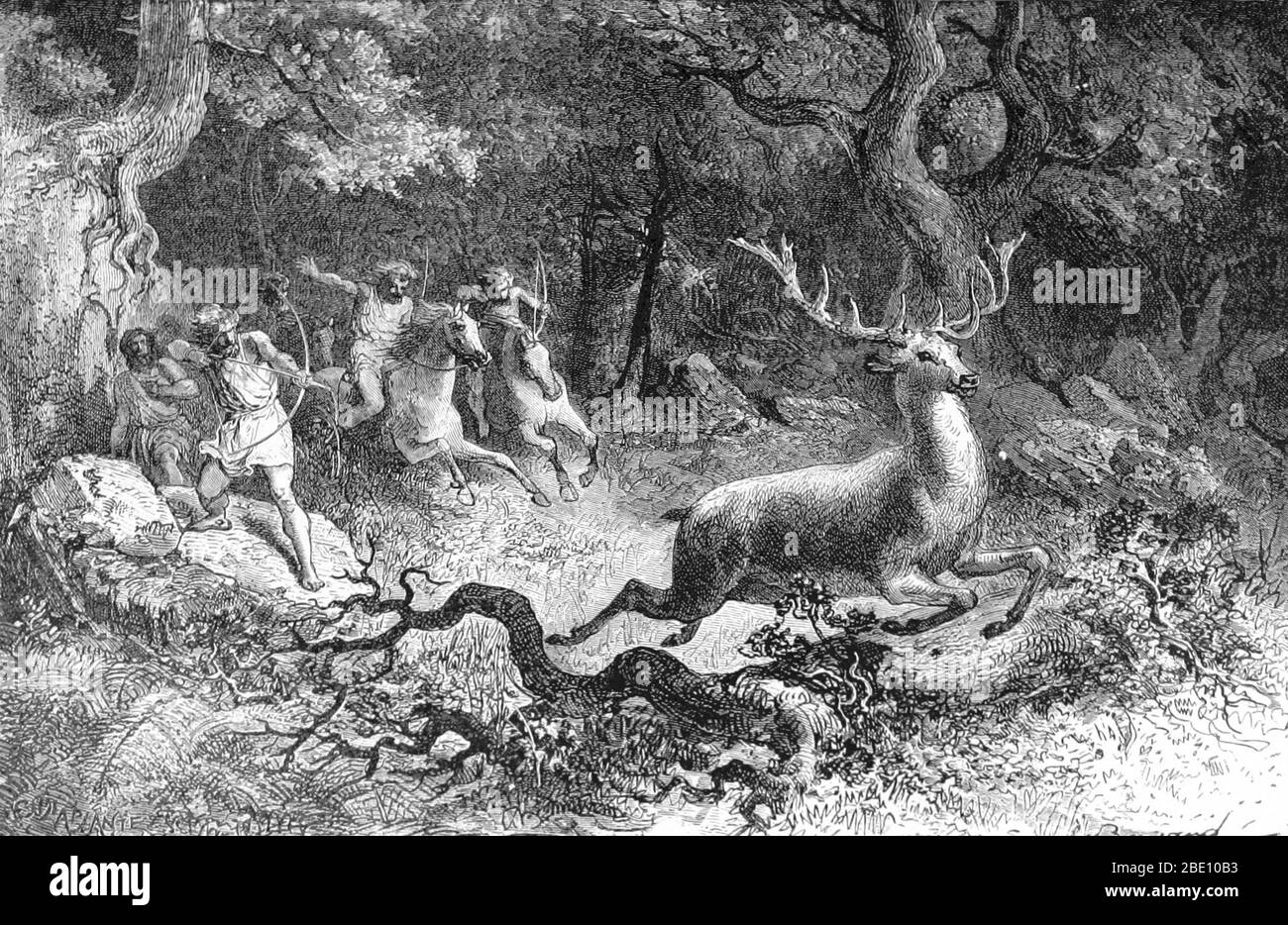 The Bronze Age is the time period when people made tools from an alloy (a mixture of metals) called bronze. Bronze is a mixture of mainly copper and tin: usually nine parts copper to one part tin. Materials like wood and stone were also used for tools, but bronze was better for cutting and chopping, and was easy to shape. Chronologically, it stands between the Stone Age and Iron Age. Humans learned how to smelt, melt, cast, rivet, and to forge copper and bronze. The bow seems to have been invented by the late Paleolithic or early Mesolithic. Image taken from page 301 of 'Primitive Man' by Loui Stock Photohttps://www.alamy.com/image-license-details/?v=1https://www.alamy.com/the-bronze-age-is-the-time-period-when-people-made-tools-from-an-alloy-a-mixture-of-metals-called-bronze-bronze-is-a-mixture-of-mainly-copper-and-tin-usually-nine-parts-copper-to-one-part-tin-materials-like-wood-and-stone-were-also-used-for-tools-but-bronze-was-better-for-cutting-and-chopping-and-was-easy-to-shape-chronologically-it-stands-between-the-stone-age-and-iron-age-humans-learned-how-to-smelt-melt-cast-rivet-and-to-forge-copper-and-bronze-the-bow-seems-to-have-been-invented-by-the-late-paleolithic-or-early-mesolithic-image-taken-from-page-301-of-primitive-man-by-loui-image352834807.html
The Bronze Age is the time period when people made tools from an alloy (a mixture of metals) called bronze. Bronze is a mixture of mainly copper and tin: usually nine parts copper to one part tin. Materials like wood and stone were also used for tools, but bronze was better for cutting and chopping, and was easy to shape. Chronologically, it stands between the Stone Age and Iron Age. Humans learned how to smelt, melt, cast, rivet, and to forge copper and bronze. The bow seems to have been invented by the late Paleolithic or early Mesolithic. Image taken from page 301 of 'Primitive Man' by Loui Stock Photohttps://www.alamy.com/image-license-details/?v=1https://www.alamy.com/the-bronze-age-is-the-time-period-when-people-made-tools-from-an-alloy-a-mixture-of-metals-called-bronze-bronze-is-a-mixture-of-mainly-copper-and-tin-usually-nine-parts-copper-to-one-part-tin-materials-like-wood-and-stone-were-also-used-for-tools-but-bronze-was-better-for-cutting-and-chopping-and-was-easy-to-shape-chronologically-it-stands-between-the-stone-age-and-iron-age-humans-learned-how-to-smelt-melt-cast-rivet-and-to-forge-copper-and-bronze-the-bow-seems-to-have-been-invented-by-the-late-paleolithic-or-early-mesolithic-image-taken-from-page-301-of-primitive-man-by-loui-image352834807.htmlRM2BE10B3–The Bronze Age is the time period when people made tools from an alloy (a mixture of metals) called bronze. Bronze is a mixture of mainly copper and tin: usually nine parts copper to one part tin. Materials like wood and stone were also used for tools, but bronze was better for cutting and chopping, and was easy to shape. Chronologically, it stands between the Stone Age and Iron Age. Humans learned how to smelt, melt, cast, rivet, and to forge copper and bronze. The bow seems to have been invented by the late Paleolithic or early Mesolithic. Image taken from page 301 of 'Primitive Man' by Loui
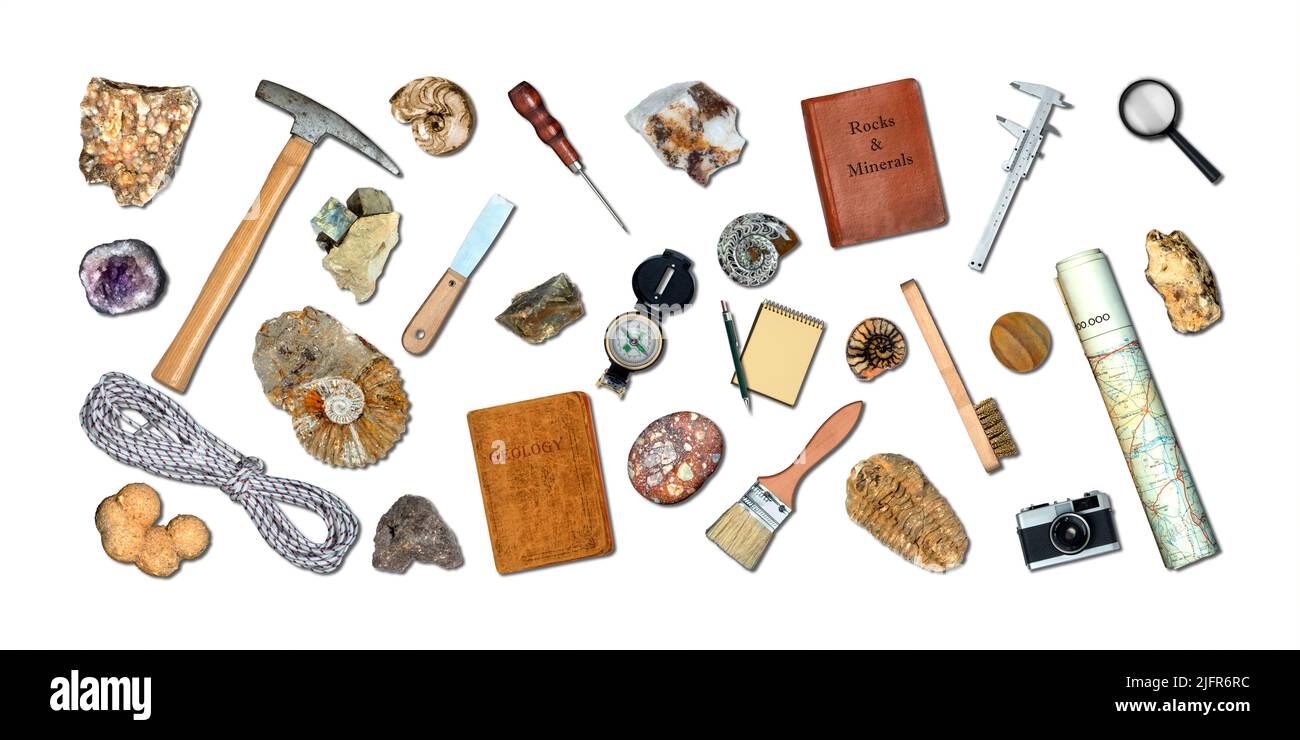 Topview of Set Fieldwork Geology Tools on White Background Stock Photohttps://www.alamy.com/image-license-details/?v=1https://www.alamy.com/topview-of-set-fieldwork-geology-tools-on-white-background-image474410032.html
Topview of Set Fieldwork Geology Tools on White Background Stock Photohttps://www.alamy.com/image-license-details/?v=1https://www.alamy.com/topview-of-set-fieldwork-geology-tools-on-white-background-image474410032.htmlRF2JFR6RC–Topview of Set Fieldwork Geology Tools on White Background
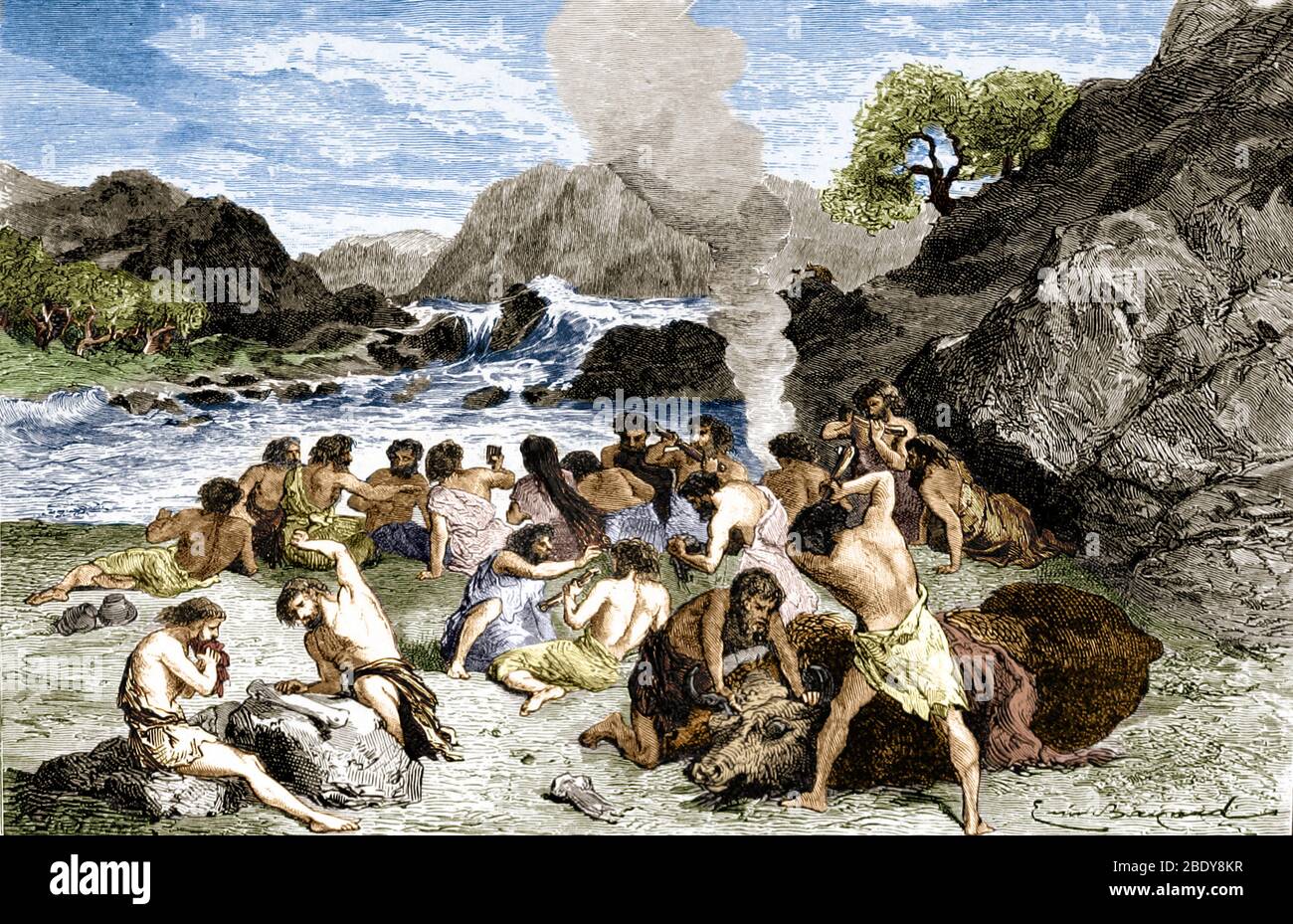 Prehistoric Man, Stone Age Feast Stock Photohttps://www.alamy.com/image-license-details/?v=1https://www.alamy.com/prehistoric-man-stone-age-feast-image352797419.html
Prehistoric Man, Stone Age Feast Stock Photohttps://www.alamy.com/image-license-details/?v=1https://www.alamy.com/prehistoric-man-stone-age-feast-image352797419.htmlRM2BDY8KR–Prehistoric Man, Stone Age Feast
 Caune de l'Arago site (France), where fossils and stone tools of Homo heidelbergensis (early Homo neanderthalensis) have been found. Stock Photohttps://www.alamy.com/image-license-details/?v=1https://www.alamy.com/caune-de-larago-site-france-where-fossils-and-stone-tools-of-homo-heidelbergensis-early-homo-neanderthalensis-have-been-found-image371135454.html
Caune de l'Arago site (France), where fossils and stone tools of Homo heidelbergensis (early Homo neanderthalensis) have been found. Stock Photohttps://www.alamy.com/image-license-details/?v=1https://www.alamy.com/caune-de-larago-site-france-where-fossils-and-stone-tools-of-homo-heidelbergensis-early-homo-neanderthalensis-have-been-found-image371135454.htmlRF2CFPK1J–Caune de l'Arago site (France), where fossils and stone tools of Homo heidelbergensis (early Homo neanderthalensis) have been found.
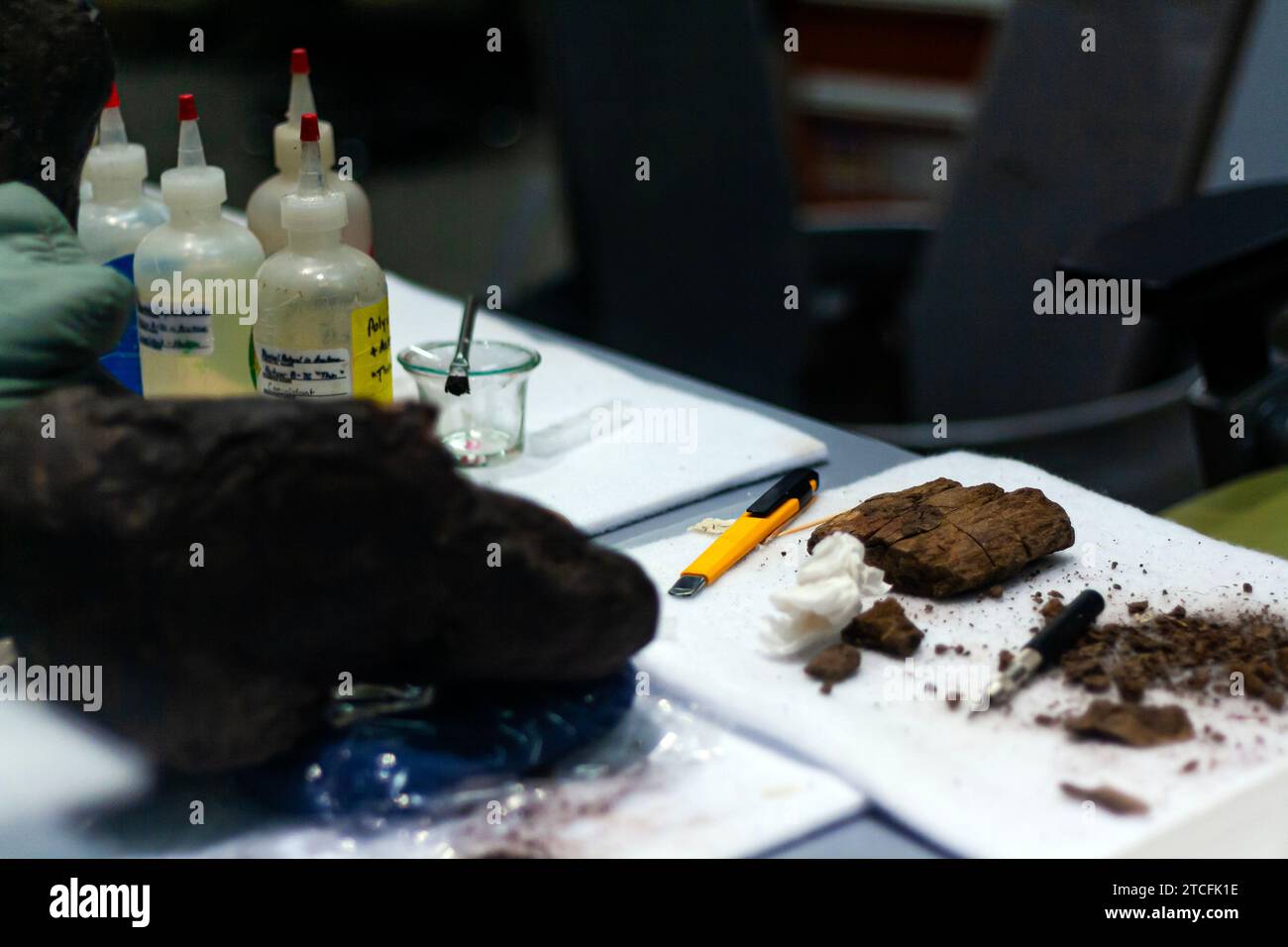 Fossils being repaired in a paleontology laboratory, reconstructing dinosaur bones for science at the Smithsonian National Museum of Natural History Stock Photohttps://www.alamy.com/image-license-details/?v=1https://www.alamy.com/fossils-being-repaired-in-a-paleontology-laboratory-reconstructing-dinosaur-bones-for-science-at-the-smithsonian-national-museum-of-natural-history-image575662234.html
Fossils being repaired in a paleontology laboratory, reconstructing dinosaur bones for science at the Smithsonian National Museum of Natural History Stock Photohttps://www.alamy.com/image-license-details/?v=1https://www.alamy.com/fossils-being-repaired-in-a-paleontology-laboratory-reconstructing-dinosaur-bones-for-science-at-the-smithsonian-national-museum-of-natural-history-image575662234.htmlRM2TCFK1E–Fossils being repaired in a paleontology laboratory, reconstructing dinosaur bones for science at the Smithsonian National Museum of Natural History
 Homo heidelbergensis is an extinct prehistoric man. He used more advanced tools than Homo erectus, such as hand axes and spears, and probably fire.jpg Stock Photohttps://www.alamy.com/image-license-details/?v=1https://www.alamy.com/homo-heidelbergensis-is-an-extinct-prehistoric-man-he-used-more-advanced-tools-than-homo-erectus-such-as-hand-axes-and-spears-and-probably-firejpg-image553597888.html
Homo heidelbergensis is an extinct prehistoric man. He used more advanced tools than Homo erectus, such as hand axes and spears, and probably fire.jpg Stock Photohttps://www.alamy.com/image-license-details/?v=1https://www.alamy.com/homo-heidelbergensis-is-an-extinct-prehistoric-man-he-used-more-advanced-tools-than-homo-erectus-such-as-hand-axes-and-spears-and-probably-firejpg-image553597888.htmlRF2R4JFN4–Homo heidelbergensis is an extinct prehistoric man. He used more advanced tools than Homo erectus, such as hand axes and spears, and probably fire.jpg
 Fossil lab and paleontology cabinet interior elements and research tools. Cartoon vector set of archaeology scientist laboratory room objects - dinosaur bones and footprints, microscope and brushes. Stock Vectorhttps://www.alamy.com/image-license-details/?v=1https://www.alamy.com/fossil-lab-and-paleontology-cabinet-interior-elements-and-research-tools-cartoon-vector-set-of-archaeology-scientist-laboratory-room-objects-dinosaur-bones-and-footprints-microscope-and-brushes-image603010342.html
Fossil lab and paleontology cabinet interior elements and research tools. Cartoon vector set of archaeology scientist laboratory room objects - dinosaur bones and footprints, microscope and brushes. Stock Vectorhttps://www.alamy.com/image-license-details/?v=1https://www.alamy.com/fossil-lab-and-paleontology-cabinet-interior-elements-and-research-tools-cartoon-vector-set-of-archaeology-scientist-laboratory-room-objects-dinosaur-bones-and-footprints-microscope-and-brushes-image603010342.htmlRF2X11DRJ–Fossil lab and paleontology cabinet interior elements and research tools. Cartoon vector set of archaeology scientist laboratory room objects - dinosaur bones and footprints, microscope and brushes.
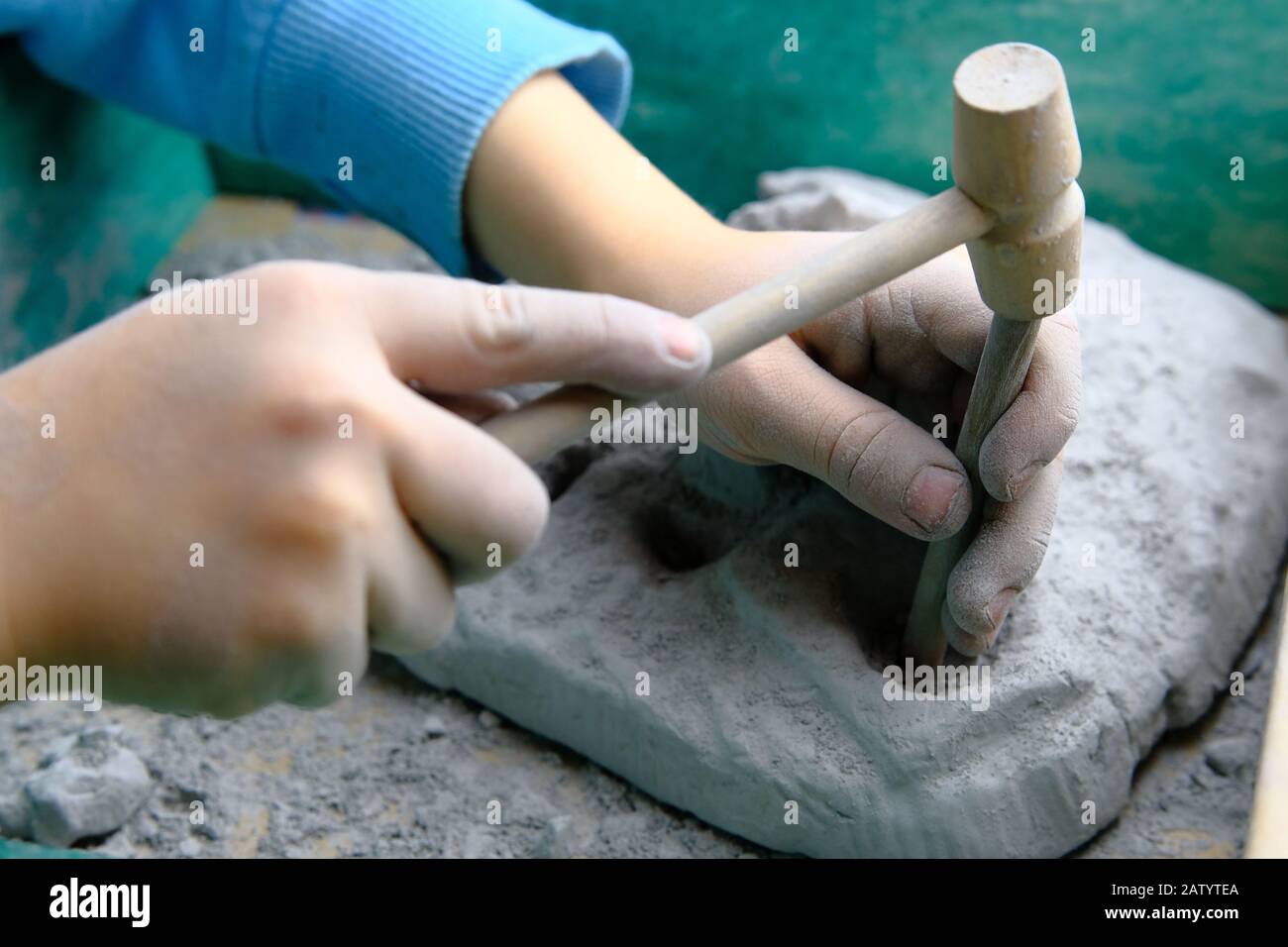 Child playing fossil, mineral and treasure excavation game. Child is using tools, such as a hammer. Stock Photohttps://www.alamy.com/image-license-details/?v=1https://www.alamy.com/child-playing-fossil-mineral-and-treasure-excavation-game-child-is-using-tools-such-as-a-hammer-image342360658.html
Child playing fossil, mineral and treasure excavation game. Child is using tools, such as a hammer. Stock Photohttps://www.alamy.com/image-license-details/?v=1https://www.alamy.com/child-playing-fossil-mineral-and-treasure-excavation-game-child-is-using-tools-such-as-a-hammer-image342360658.htmlRF2ATYTEA–Child playing fossil, mineral and treasure excavation game. Child is using tools, such as a hammer.
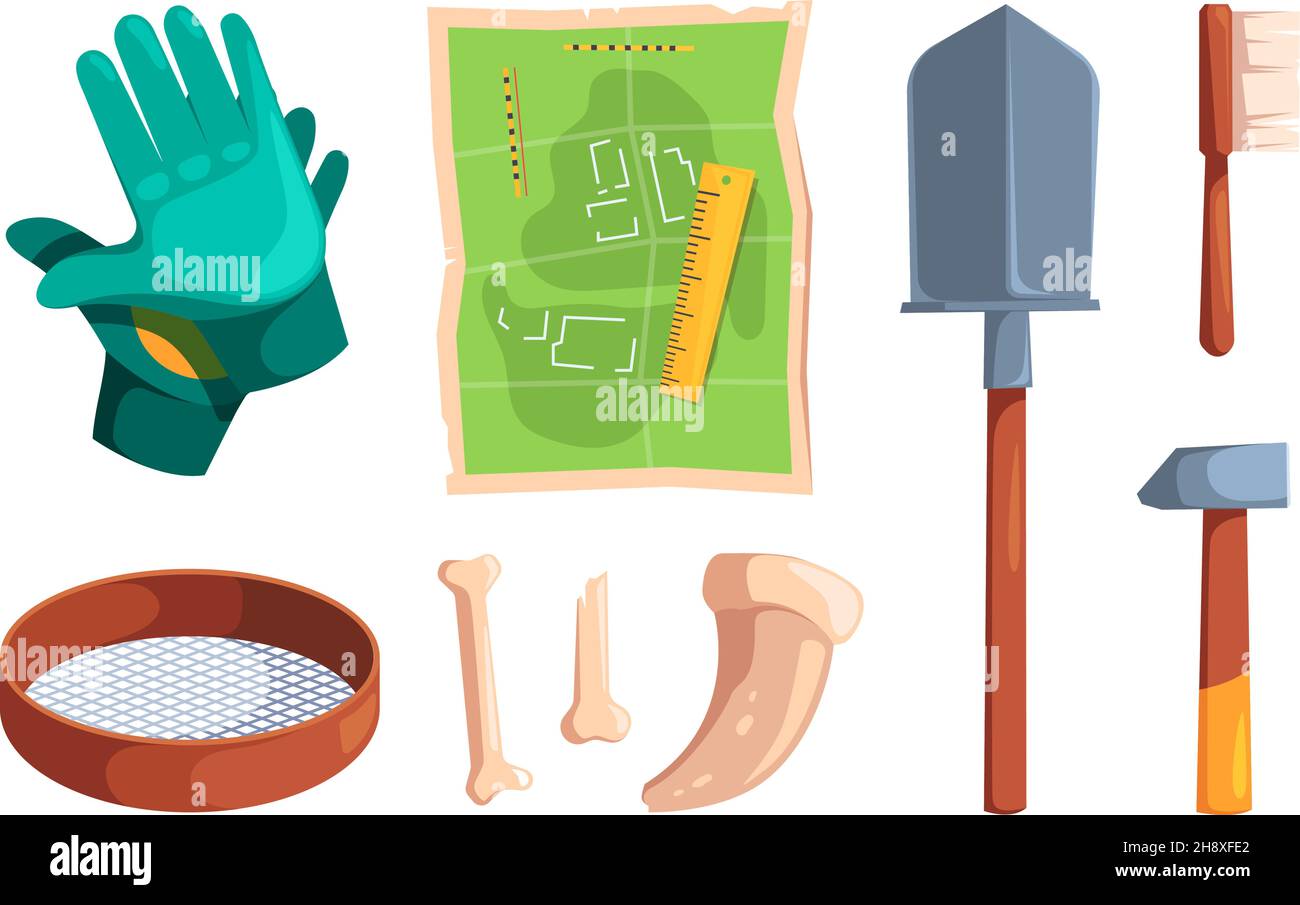 Archeology tools. Digging items archiological equipment for ancient knowledge antique artifacts skull and bones adventure map garish vector collection Stock Vectorhttps://www.alamy.com/image-license-details/?v=1https://www.alamy.com/archeology-tools-digging-items-archiological-equipment-for-ancient-knowledge-antique-artifacts-skull-and-bones-adventure-map-garish-vector-collection-image452969722.html
Archeology tools. Digging items archiological equipment for ancient knowledge antique artifacts skull and bones adventure map garish vector collection Stock Vectorhttps://www.alamy.com/image-license-details/?v=1https://www.alamy.com/archeology-tools-digging-items-archiological-equipment-for-ancient-knowledge-antique-artifacts-skull-and-bones-adventure-map-garish-vector-collection-image452969722.htmlRF2H8XFE2–Archeology tools. Digging items archiological equipment for ancient knowledge antique artifacts skull and bones adventure map garish vector collection
 Prehistoric tools and remains of fossil animals, Prehistoric Museum of Pofi, Lazio, Italy Stock Photohttps://www.alamy.com/image-license-details/?v=1https://www.alamy.com/prehistoric-tools-and-remains-of-fossil-animals-prehistoric-museum-of-pofi-lazio-italy-image237707731.html
Prehistoric tools and remains of fossil animals, Prehistoric Museum of Pofi, Lazio, Italy Stock Photohttps://www.alamy.com/image-license-details/?v=1https://www.alamy.com/prehistoric-tools-and-remains-of-fossil-animals-prehistoric-museum-of-pofi-lazio-italy-image237707731.htmlRMRPMEHR–Prehistoric tools and remains of fossil animals, Prehistoric Museum of Pofi, Lazio, Italy
 Autumn color in Mount Desert Island in Maine. Stock Photohttps://www.alamy.com/image-license-details/?v=1https://www.alamy.com/autumn-color-in-mount-desert-island-in-maine-image558201669.html
Autumn color in Mount Desert Island in Maine. Stock Photohttps://www.alamy.com/image-license-details/?v=1https://www.alamy.com/autumn-color-in-mount-desert-island-in-maine-image558201669.htmlRM2RC47WW–Autumn color in Mount Desert Island in Maine.
 Handbuch der Petrefaktenkunde Tübingen H. Laupp 1852 fossils paleontology Museum of Comparative Zoology, A detailed illustration showcasing a diverse collection of shells and tools, meticulously arranged in a grid format. The composition features various shapes and sizes, including elongated, spiral, and flat forms, each labeled with numbers for identification. The top portion includes objects that resemble tools or implements, while the lower section displays a striking array of shell types, highlighting their unique textures and patterns. This scholarly depiction emphasizes the richness of m Stock Photohttps://www.alamy.com/image-license-details/?v=1https://www.alamy.com/handbuch-der-petrefaktenkunde-tbingen-h-laupp-1852-fossils-paleontology-museum-of-comparative-zoology-a-detailed-illustration-showcasing-a-diverse-collection-of-shells-and-tools-meticulously-arranged-in-a-grid-format-the-composition-features-various-shapes-and-sizes-including-elongated-spiral-and-flat-forms-each-labeled-with-numbers-for-identification-the-top-portion-includes-objects-that-resemble-tools-or-implements-while-the-lower-section-displays-a-striking-array-of-shell-types-highlighting-their-unique-textures-and-patterns-this-scholarly-depiction-emphasizes-the-richness-of-m-image636049338.html
Handbuch der Petrefaktenkunde Tübingen H. Laupp 1852 fossils paleontology Museum of Comparative Zoology, A detailed illustration showcasing a diverse collection of shells and tools, meticulously arranged in a grid format. The composition features various shapes and sizes, including elongated, spiral, and flat forms, each labeled with numbers for identification. The top portion includes objects that resemble tools or implements, while the lower section displays a striking array of shell types, highlighting their unique textures and patterns. This scholarly depiction emphasizes the richness of m Stock Photohttps://www.alamy.com/image-license-details/?v=1https://www.alamy.com/handbuch-der-petrefaktenkunde-tbingen-h-laupp-1852-fossils-paleontology-museum-of-comparative-zoology-a-detailed-illustration-showcasing-a-diverse-collection-of-shells-and-tools-meticulously-arranged-in-a-grid-format-the-composition-features-various-shapes-and-sizes-including-elongated-spiral-and-flat-forms-each-labeled-with-numbers-for-identification-the-top-portion-includes-objects-that-resemble-tools-or-implements-while-the-lower-section-displays-a-striking-array-of-shell-types-highlighting-their-unique-textures-and-patterns-this-scholarly-depiction-emphasizes-the-richness-of-m-image636049338.htmlRM2YXPFBP–Handbuch der Petrefaktenkunde Tübingen H. Laupp 1852 fossils paleontology Museum of Comparative Zoology, A detailed illustration showcasing a diverse collection of shells and tools, meticulously arranged in a grid format. The composition features various shapes and sizes, including elongated, spiral, and flat forms, each labeled with numbers for identification. The top portion includes objects that resemble tools or implements, while the lower section displays a striking array of shell types, highlighting their unique textures and patterns. This scholarly depiction emphasizes the richness of m
 grid of an excavation with tools. archaeology and paleontology concept Stock Photohttps://www.alamy.com/image-license-details/?v=1https://www.alamy.com/grid-of-an-excavation-with-tools-archaeology-and-paleontology-concept-image623053354.html
grid of an excavation with tools. archaeology and paleontology concept Stock Photohttps://www.alamy.com/image-license-details/?v=1https://www.alamy.com/grid-of-an-excavation-with-tools-archaeology-and-paleontology-concept-image623053354.htmlRF2Y5JEWE–grid of an excavation with tools. archaeology and paleontology concept
RF2HJGXKP–filled e learning icon set. contain flat scholarship, study tools, paleontology, daycare center, sociology, global learning, qualification, game-based
 stone tools pickaxes and axes, bifaces and trihedrons, Museum of prehistory and archeology (MUPAC), Santander, Cantabria, Spain. Stock Photohttps://www.alamy.com/image-license-details/?v=1https://www.alamy.com/stone-tools-pickaxes-and-axes-bifaces-and-trihedrons-museum-of-prehistory-and-archeology-mupac-santander-cantabria-spain-image597145863.html
stone tools pickaxes and axes, bifaces and trihedrons, Museum of prehistory and archeology (MUPAC), Santander, Cantabria, Spain. Stock Photohttps://www.alamy.com/image-license-details/?v=1https://www.alamy.com/stone-tools-pickaxes-and-axes-bifaces-and-trihedrons-museum-of-prehistory-and-archeology-mupac-santander-cantabria-spain-image597145863.htmlRM2WKE9HY–stone tools pickaxes and axes, bifaces and trihedrons, Museum of prehistory and archeology (MUPAC), Santander, Cantabria, Spain.
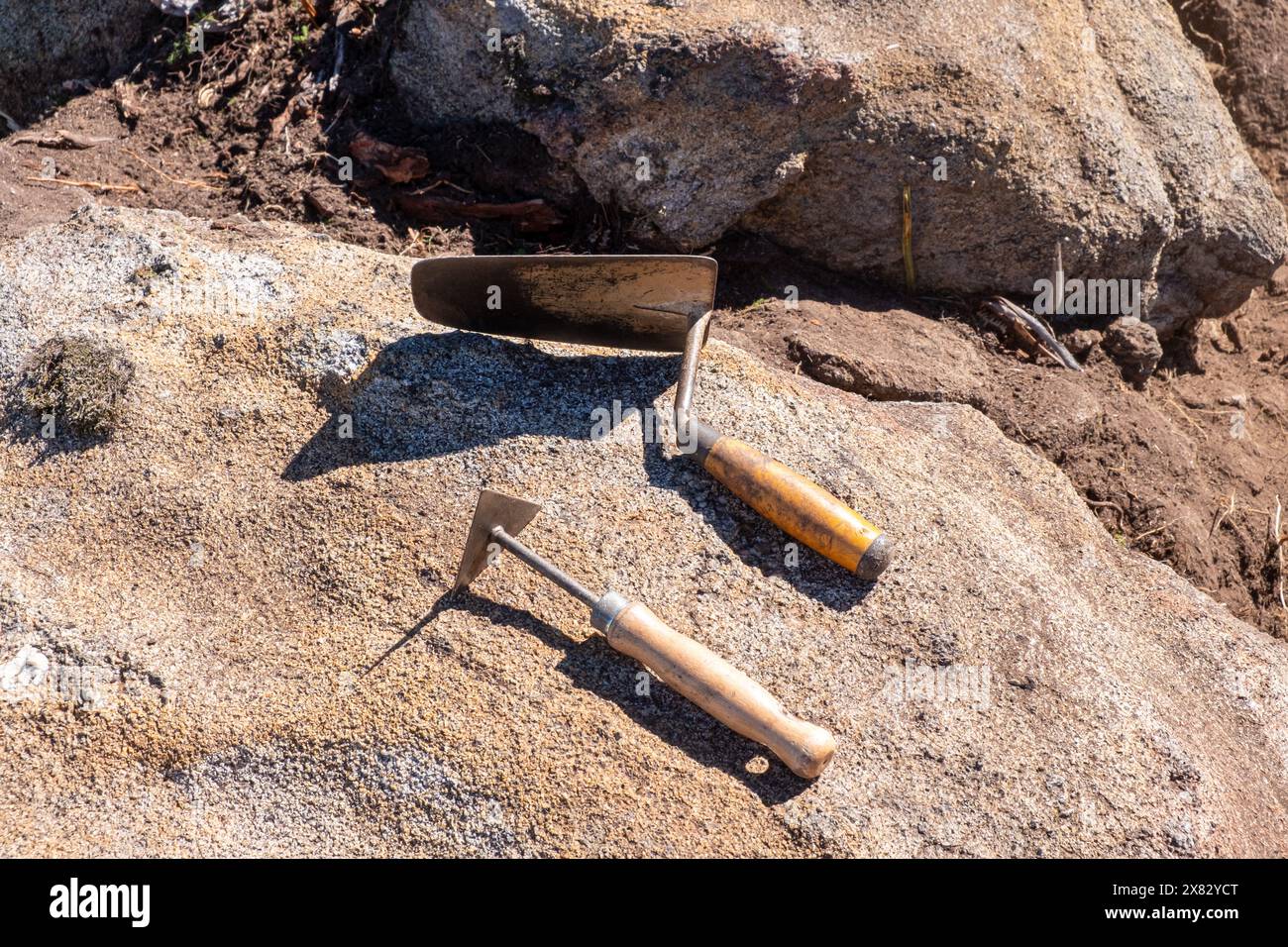 various working tools in an archaeological excavation Stock Photohttps://www.alamy.com/image-license-details/?v=1https://www.alamy.com/various-working-tools-in-an-archaeological-excavation-image607345560.html
various working tools in an archaeological excavation Stock Photohttps://www.alamy.com/image-license-details/?v=1https://www.alamy.com/various-working-tools-in-an-archaeological-excavation-image607345560.htmlRF2X82YCT–various working tools in an archaeological excavation
 Working tools for cleaning fossils in the laboratory of the Utah Field House of Natural History Museum. Vernal, Utah. Stock Photohttps://www.alamy.com/image-license-details/?v=1https://www.alamy.com/working-tools-for-cleaning-fossils-in-the-laboratory-of-the-utah-field-house-of-natural-history-museum-vernal-utah-image607048497.html
Working tools for cleaning fossils in the laboratory of the Utah Field House of Natural History Museum. Vernal, Utah. Stock Photohttps://www.alamy.com/image-license-details/?v=1https://www.alamy.com/working-tools-for-cleaning-fossils-in-the-laboratory-of-the-utah-field-house-of-natural-history-museum-vernal-utah-image607048497.htmlRM2X7HCFD–Working tools for cleaning fossils in the laboratory of the Utah Field House of Natural History Museum. Vernal, Utah.
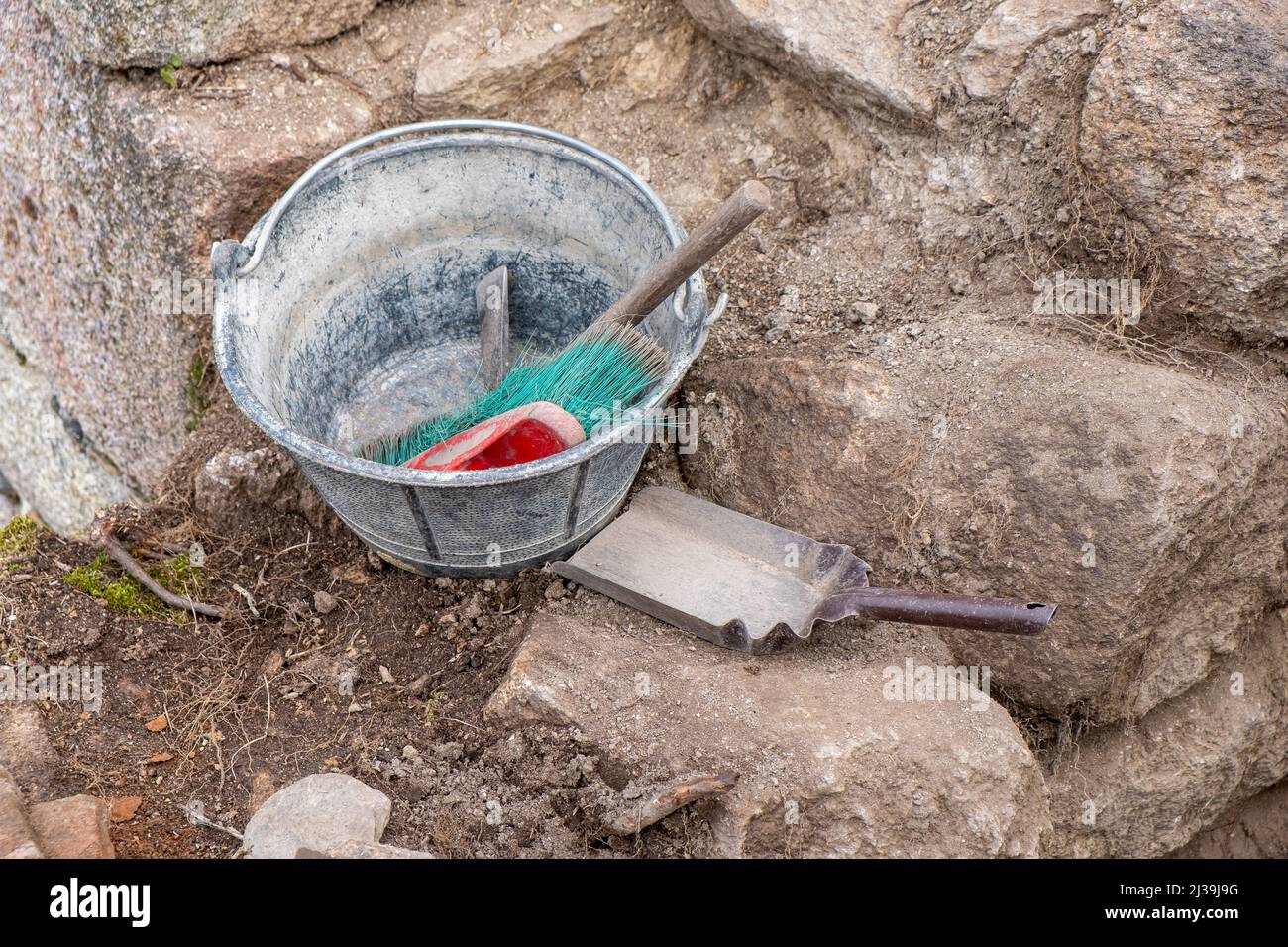 tools in an archaeological excavation Archaeology works Stock Photohttps://www.alamy.com/image-license-details/?v=1https://www.alamy.com/tools-in-an-archaeological-excavation-archaeology-works-image466735852.html
tools in an archaeological excavation Archaeology works Stock Photohttps://www.alamy.com/image-license-details/?v=1https://www.alamy.com/tools-in-an-archaeological-excavation-archaeology-works-image466735852.htmlRF2J39J9G–tools in an archaeological excavation Archaeology works
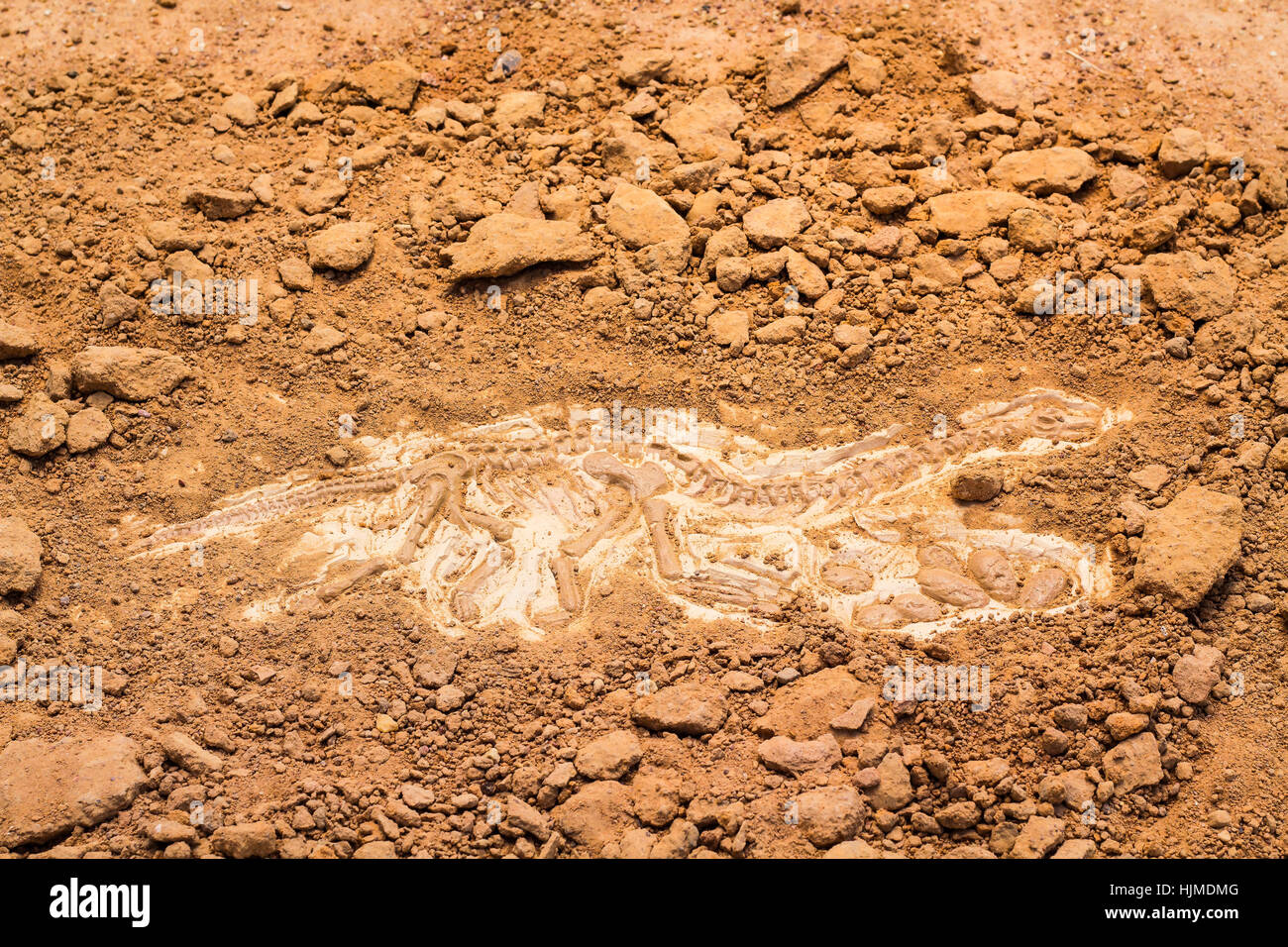 Skeleton and archaeological tools.Training for dig fossil.Simulated same as real digging. Stock Photohttps://www.alamy.com/image-license-details/?v=1https://www.alamy.com/stock-photo-skeleton-and-archaeological-toolstraining-for-dig-fossilsimulated-131986192.html
Skeleton and archaeological tools.Training for dig fossil.Simulated same as real digging. Stock Photohttps://www.alamy.com/image-license-details/?v=1https://www.alamy.com/stock-photo-skeleton-and-archaeological-toolstraining-for-dig-fossilsimulated-131986192.htmlRFHJMDMG–Skeleton and archaeological tools.Training for dig fossil.Simulated same as real digging.
 Tools on the ground in an archaeological excavation Stock Photohttps://www.alamy.com/image-license-details/?v=1https://www.alamy.com/tools-on-the-ground-in-an-archaeological-excavation-image546458066.html
Tools on the ground in an archaeological excavation Stock Photohttps://www.alamy.com/image-license-details/?v=1https://www.alamy.com/tools-on-the-ground-in-an-archaeological-excavation-image546458066.htmlRF2PN18RE–Tools on the ground in an archaeological excavation
 Guðjón Hildibrandsson is manager at the family-run Bjarnahöfn Shark Museum. He uses a shark mouth to demonstrate the sharks' feeding behavior. Bjarnarhöfn Iceland Shark Museum, where the mystery of the fermented shark is solved. Here the dentition of a Greenland shark is presented Stock Photohttps://www.alamy.com/image-license-details/?v=1https://www.alamy.com/gujn-hildibrandsson-is-manager-at-the-family-run-bjarnahfn-shark-museum-he-uses-a-shark-mouth-to-demonstrate-the-sharks-feeding-behavior-bjarnarhfn-iceland-shark-museum-where-the-mystery-of-the-fermented-shark-is-solved-here-the-dentition-of-a-greenland-shark-is-presented-image471514835.html
Guðjón Hildibrandsson is manager at the family-run Bjarnahöfn Shark Museum. He uses a shark mouth to demonstrate the sharks' feeding behavior. Bjarnarhöfn Iceland Shark Museum, where the mystery of the fermented shark is solved. Here the dentition of a Greenland shark is presented Stock Photohttps://www.alamy.com/image-license-details/?v=1https://www.alamy.com/gujn-hildibrandsson-is-manager-at-the-family-run-bjarnahfn-shark-museum-he-uses-a-shark-mouth-to-demonstrate-the-sharks-feeding-behavior-bjarnarhfn-iceland-shark-museum-where-the-mystery-of-the-fermented-shark-is-solved-here-the-dentition-of-a-greenland-shark-is-presented-image471514835.htmlRF2JB39YF–Guðjón Hildibrandsson is manager at the family-run Bjarnahöfn Shark Museum. He uses a shark mouth to demonstrate the sharks' feeding behavior. Bjarnarhöfn Iceland Shark Museum, where the mystery of the fermented shark is solved. Here the dentition of a Greenland shark is presented
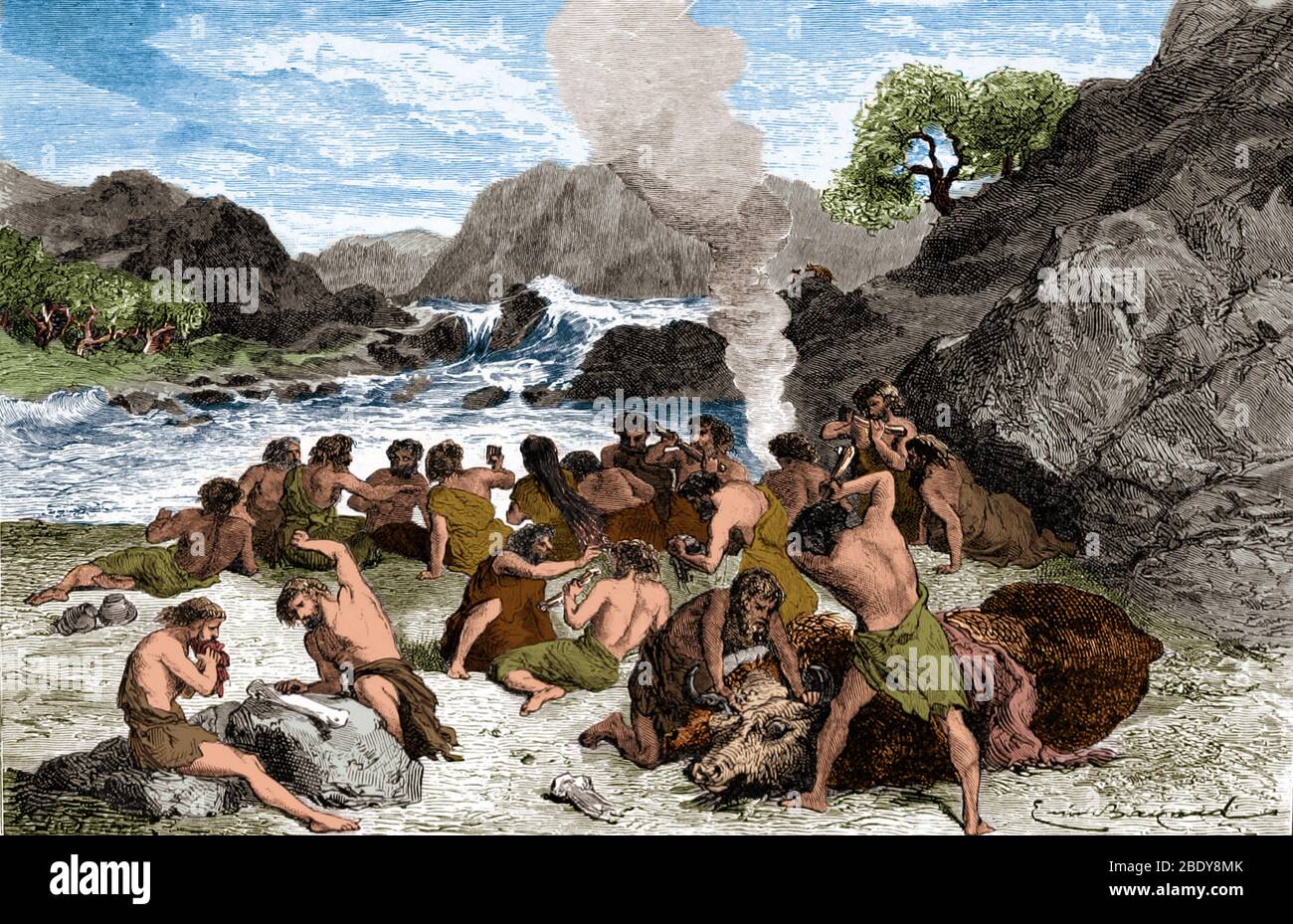 Prehistoric Man, Stone Age Feast Stock Photohttps://www.alamy.com/image-license-details/?v=1https://www.alamy.com/prehistoric-man-stone-age-feast-image352797443.html
Prehistoric Man, Stone Age Feast Stock Photohttps://www.alamy.com/image-license-details/?v=1https://www.alamy.com/prehistoric-man-stone-age-feast-image352797443.htmlRM2BDY8MK–Prehistoric Man, Stone Age Feast
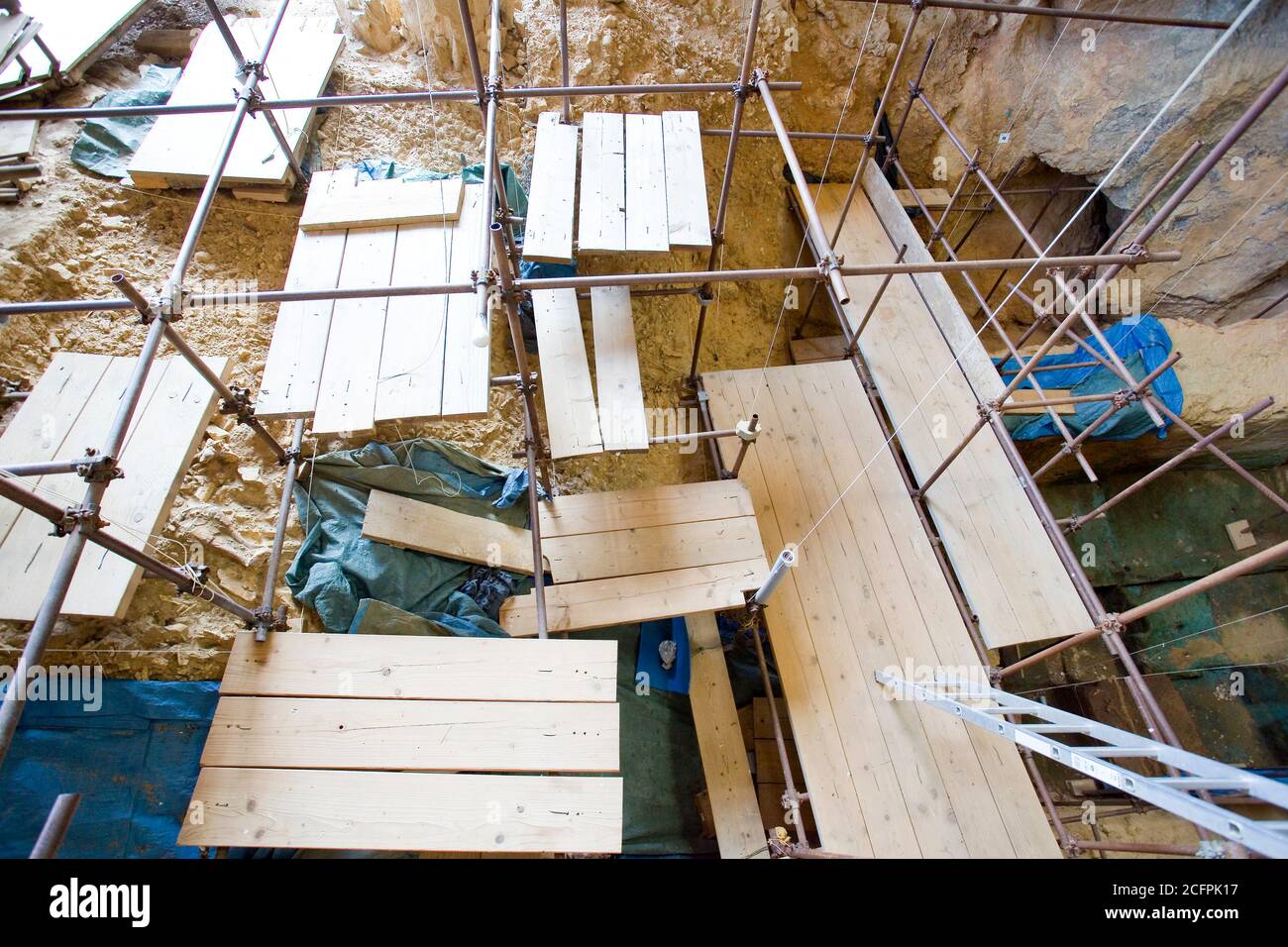 Caune de l'Arago site (France), where fossils and stone tools of Homo heidelbergensis (early Homo neanderthalensis) have been found. Stock Photohttps://www.alamy.com/image-license-details/?v=1https://www.alamy.com/caune-de-larago-site-france-where-fossils-and-stone-tools-of-homo-heidelbergensis-early-homo-neanderthalensis-have-been-found-image371135443.html
Caune de l'Arago site (France), where fossils and stone tools of Homo heidelbergensis (early Homo neanderthalensis) have been found. Stock Photohttps://www.alamy.com/image-license-details/?v=1https://www.alamy.com/caune-de-larago-site-france-where-fossils-and-stone-tools-of-homo-heidelbergensis-early-homo-neanderthalensis-have-been-found-image371135443.htmlRF2CFPK17–Caune de l'Arago site (France), where fossils and stone tools of Homo heidelbergensis (early Homo neanderthalensis) have been found.
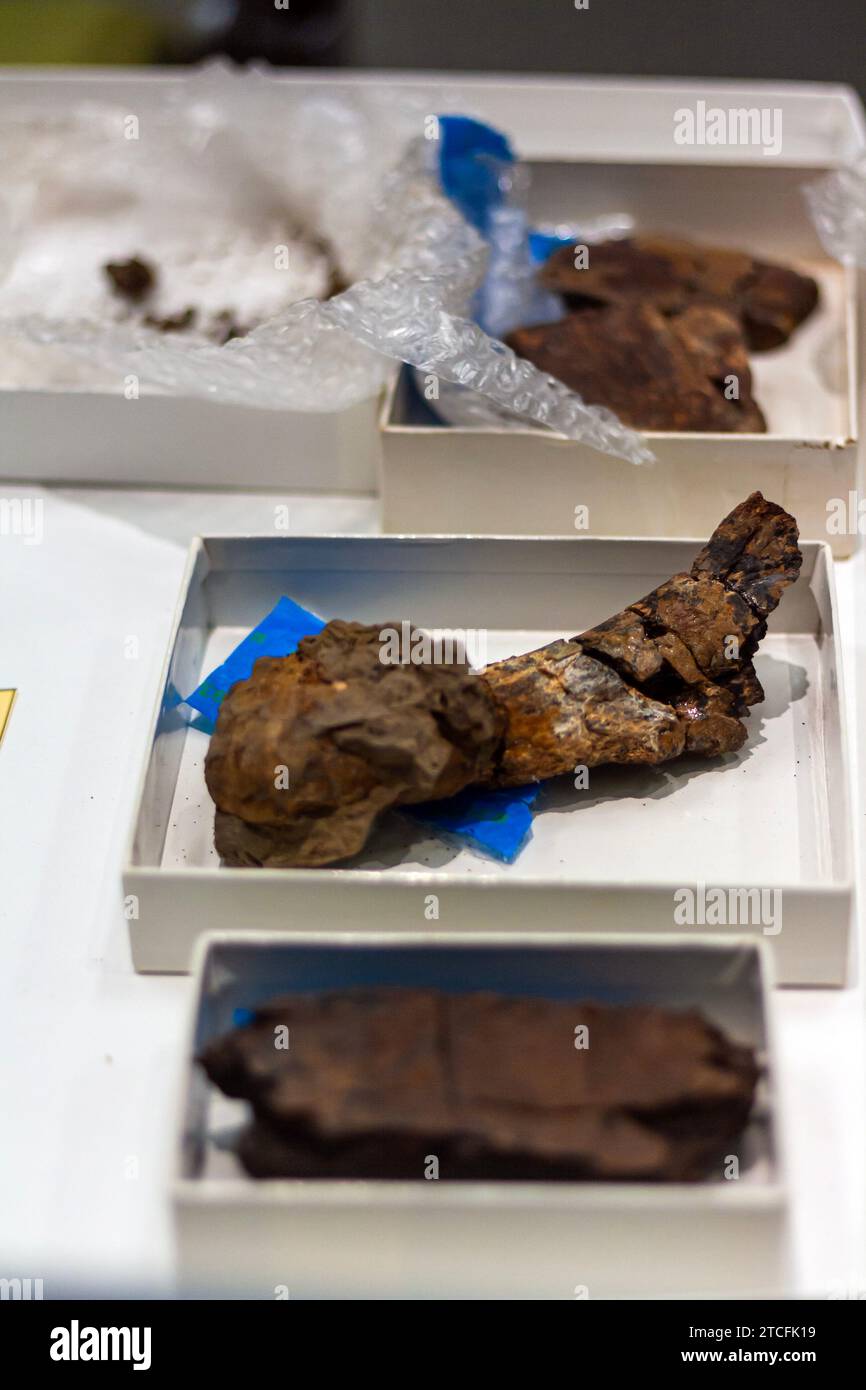 Fossils being repaired in a paleontology laboratory, reconstructing dinosaur bones for science at the Smithsonian National Museum of Natural History Stock Photohttps://www.alamy.com/image-license-details/?v=1https://www.alamy.com/fossils-being-repaired-in-a-paleontology-laboratory-reconstructing-dinosaur-bones-for-science-at-the-smithsonian-national-museum-of-natural-history-image575662229.html
Fossils being repaired in a paleontology laboratory, reconstructing dinosaur bones for science at the Smithsonian National Museum of Natural History Stock Photohttps://www.alamy.com/image-license-details/?v=1https://www.alamy.com/fossils-being-repaired-in-a-paleontology-laboratory-reconstructing-dinosaur-bones-for-science-at-the-smithsonian-national-museum-of-natural-history-image575662229.htmlRM2TCFK19–Fossils being repaired in a paleontology laboratory, reconstructing dinosaur bones for science at the Smithsonian National Museum of Natural History
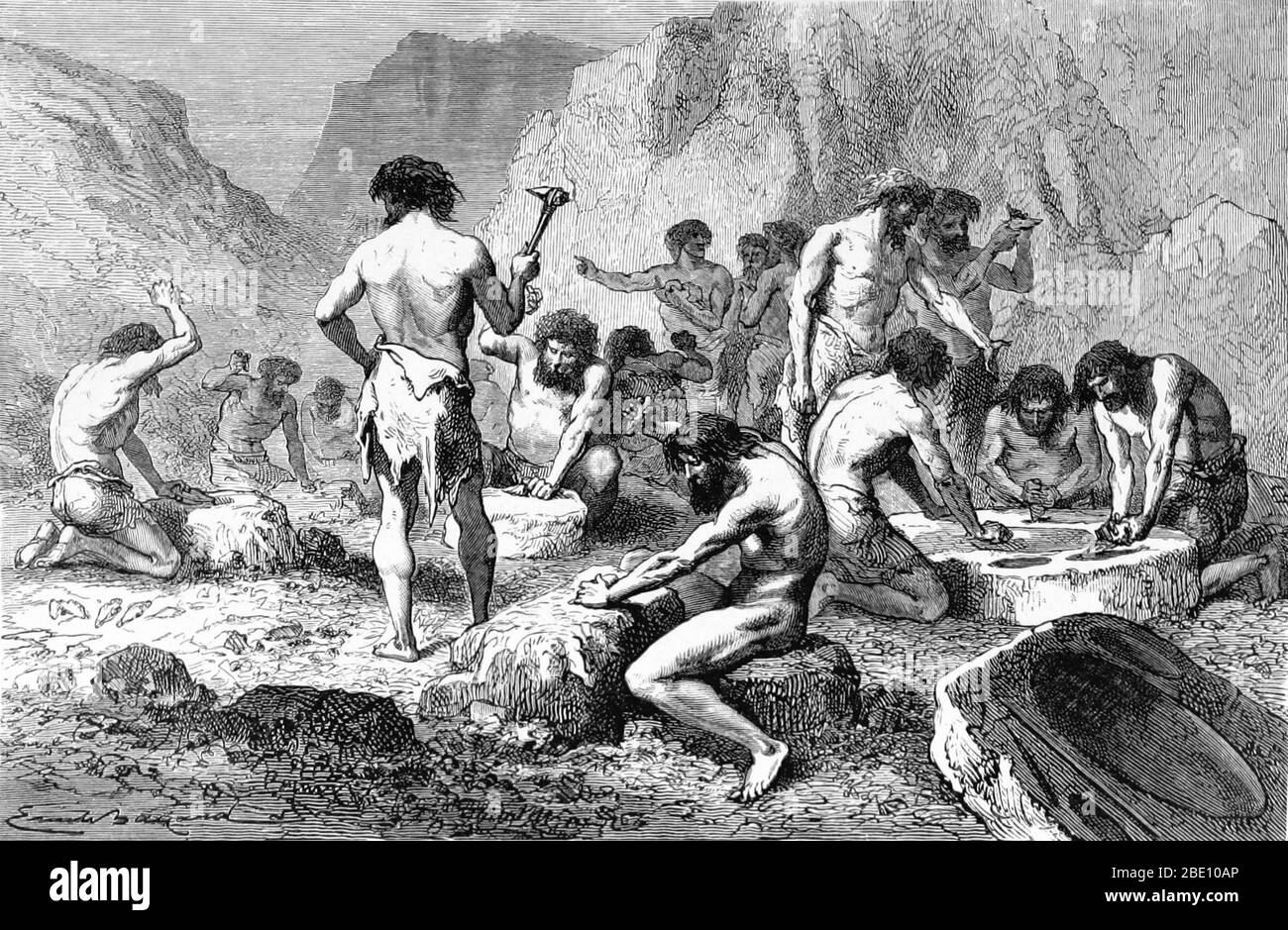 Captioned: 'Workshop for shaping and polishing stones characteristic of the epoch of mankind which we are now describing, the polished-stone period.' The Neolithic Period, or New Stone Age, was a period in the development of human technology, beginning about 10,200 BC and ending between 4,500 and 2,000 BC. What was also once called the polished Stone age was a period characterized by beautiful weapons and instruments made of flint and other kinds of stone. A stone tool is any tool made either partially or entirely out of stone. Most stone tools are associated with prehistoric, particularly Sto Stock Photohttps://www.alamy.com/image-license-details/?v=1https://www.alamy.com/captioned-workshop-for-shaping-and-polishing-stones-characteristic-of-the-epoch-of-mankind-which-we-are-now-describing-the-polished-stone-period-the-neolithic-period-or-new-stone-age-was-a-period-in-the-development-of-human-technology-beginning-about-10200-bc-and-ending-between-4500-and-2000-bc-what-was-also-once-called-the-polished-stone-age-was-a-period-characterized-by-beautiful-weapons-and-instruments-made-of-flint-and-other-kinds-of-stone-a-stone-tool-is-any-tool-made-either-partially-or-entirely-out-of-stone-most-stone-tools-are-associated-with-prehistoric-particularly-sto-image352834798.html
Captioned: 'Workshop for shaping and polishing stones characteristic of the epoch of mankind which we are now describing, the polished-stone period.' The Neolithic Period, or New Stone Age, was a period in the development of human technology, beginning about 10,200 BC and ending between 4,500 and 2,000 BC. What was also once called the polished Stone age was a period characterized by beautiful weapons and instruments made of flint and other kinds of stone. A stone tool is any tool made either partially or entirely out of stone. Most stone tools are associated with prehistoric, particularly Sto Stock Photohttps://www.alamy.com/image-license-details/?v=1https://www.alamy.com/captioned-workshop-for-shaping-and-polishing-stones-characteristic-of-the-epoch-of-mankind-which-we-are-now-describing-the-polished-stone-period-the-neolithic-period-or-new-stone-age-was-a-period-in-the-development-of-human-technology-beginning-about-10200-bc-and-ending-between-4500-and-2000-bc-what-was-also-once-called-the-polished-stone-age-was-a-period-characterized-by-beautiful-weapons-and-instruments-made-of-flint-and-other-kinds-of-stone-a-stone-tool-is-any-tool-made-either-partially-or-entirely-out-of-stone-most-stone-tools-are-associated-with-prehistoric-particularly-sto-image352834798.htmlRM2BE10AP–Captioned: 'Workshop for shaping and polishing stones characteristic of the epoch of mankind which we are now describing, the polished-stone period.' The Neolithic Period, or New Stone Age, was a period in the development of human technology, beginning about 10,200 BC and ending between 4,500 and 2,000 BC. What was also once called the polished Stone age was a period characterized by beautiful weapons and instruments made of flint and other kinds of stone. A stone tool is any tool made either partially or entirely out of stone. Most stone tools are associated with prehistoric, particularly Sto
 Fossil lab and paleontology cabinet elements. Cartoon vector archaeology scientist laboratory research tools and exhibits under study - dinosaur bones and footprints, magnifying glass and chemicals. Stock Vectorhttps://www.alamy.com/image-license-details/?v=1https://www.alamy.com/fossil-lab-and-paleontology-cabinet-elements-cartoon-vector-archaeology-scientist-laboratory-research-tools-and-exhibits-under-study-dinosaur-bones-and-footprints-magnifying-glass-and-chemicals-image603010893.html
Fossil lab and paleontology cabinet elements. Cartoon vector archaeology scientist laboratory research tools and exhibits under study - dinosaur bones and footprints, magnifying glass and chemicals. Stock Vectorhttps://www.alamy.com/image-license-details/?v=1https://www.alamy.com/fossil-lab-and-paleontology-cabinet-elements-cartoon-vector-archaeology-scientist-laboratory-research-tools-and-exhibits-under-study-dinosaur-bones-and-footprints-magnifying-glass-and-chemicals-image603010893.htmlRF2X11EF9–Fossil lab and paleontology cabinet elements. Cartoon vector archaeology scientist laboratory research tools and exhibits under study - dinosaur bones and footprints, magnifying glass and chemicals.
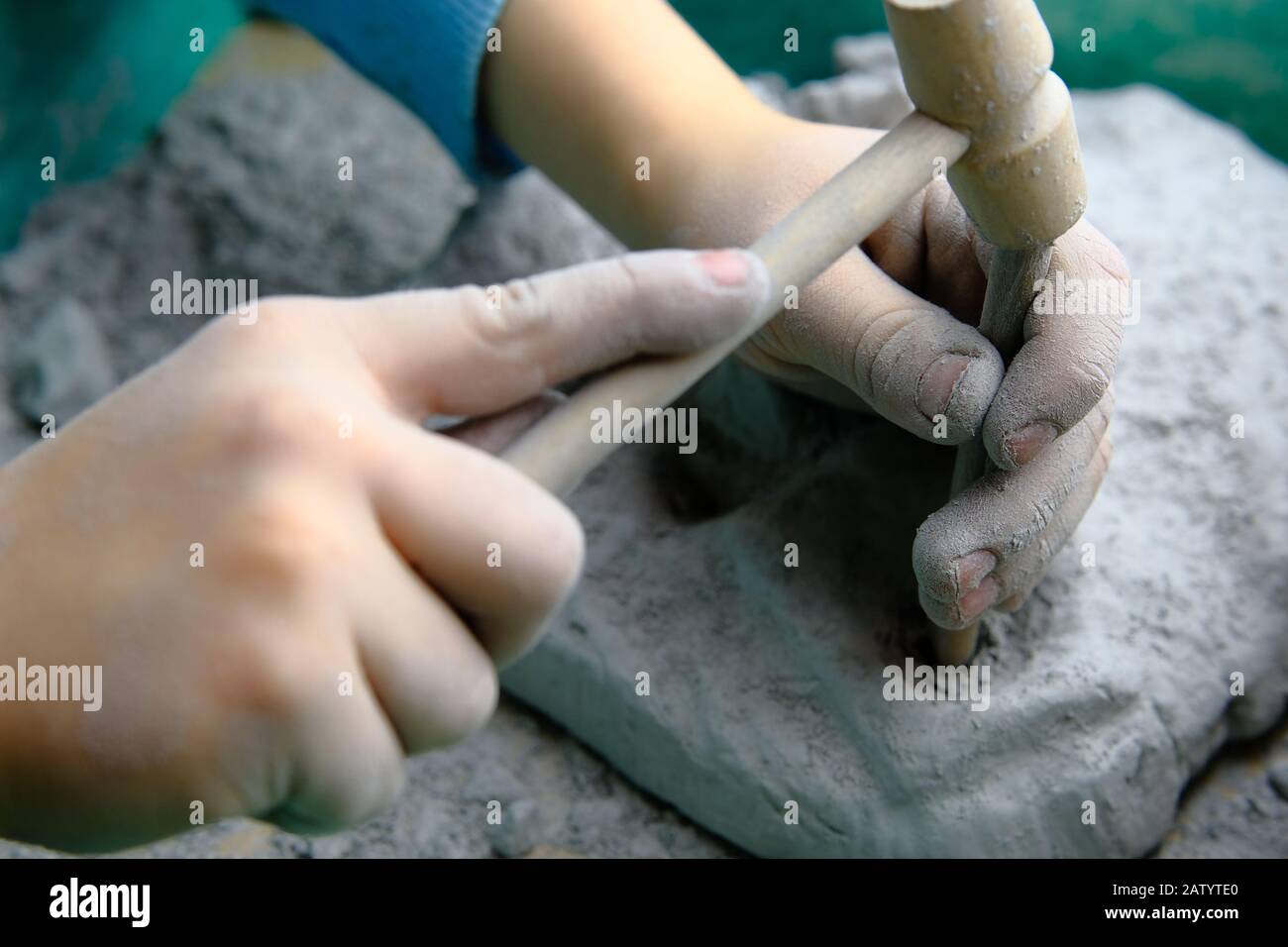 Child playing fossil, mineral and treasure excavation game. Child is using tools, such as a hammer. Stock Photohttps://www.alamy.com/image-license-details/?v=1https://www.alamy.com/child-playing-fossil-mineral-and-treasure-excavation-game-child-is-using-tools-such-as-a-hammer-image342360648.html
Child playing fossil, mineral and treasure excavation game. Child is using tools, such as a hammer. Stock Photohttps://www.alamy.com/image-license-details/?v=1https://www.alamy.com/child-playing-fossil-mineral-and-treasure-excavation-game-child-is-using-tools-such-as-a-hammer-image342360648.htmlRF2ATYTE0–Child playing fossil, mineral and treasure excavation game. Child is using tools, such as a hammer.
 Historical museum with fossil dinosaur and fish skeletons, stone age tools. Vector cartoon illustration of paleontology exhibition with prehistoric ex Stock Vectorhttps://www.alamy.com/image-license-details/?v=1https://www.alamy.com/historical-museum-with-fossil-dinosaur-and-fish-skeletons-stone-age-tools-vector-cartoon-illustration-of-paleontology-exhibition-with-prehistoric-ex-image477342407.html
Historical museum with fossil dinosaur and fish skeletons, stone age tools. Vector cartoon illustration of paleontology exhibition with prehistoric ex Stock Vectorhttps://www.alamy.com/image-license-details/?v=1https://www.alamy.com/historical-museum-with-fossil-dinosaur-and-fish-skeletons-stone-age-tools-vector-cartoon-illustration-of-paleontology-exhibition-with-prehistoric-ex-image477342407.htmlRF2JMGR33–Historical museum with fossil dinosaur and fish skeletons, stone age tools. Vector cartoon illustration of paleontology exhibition with prehistoric ex
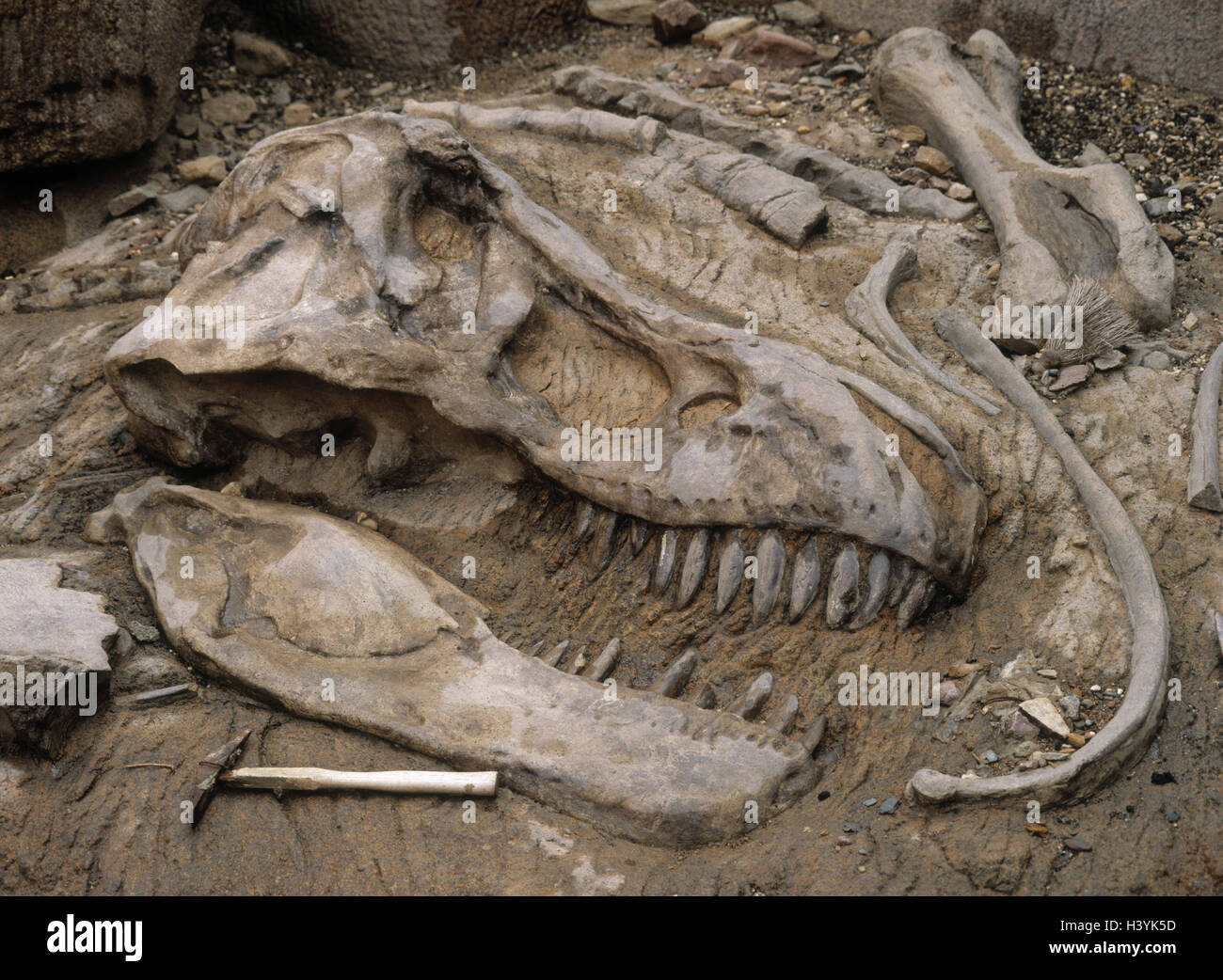 Excavation, fossilization, dinosaur, detail, skull, bile, stone, Sand, saurians, old animal, Tyrannosaurus, remains, rests, skeleton, dinosaur skull, cogs, bite, bone, fossilizes, fossil, fossils, animal, prehistoric time, early time, primeval times, living being, age, story, history of the earth, past, prehistorically, geology, Paläozoologie, paleontology, artificially, simulation, howler, tools Stock Photohttps://www.alamy.com/image-license-details/?v=1https://www.alamy.com/stock-photo-excavation-fossilization-dinosaur-detail-skull-bile-stone-sand-saurians-122924297.html
Excavation, fossilization, dinosaur, detail, skull, bile, stone, Sand, saurians, old animal, Tyrannosaurus, remains, rests, skeleton, dinosaur skull, cogs, bite, bone, fossilizes, fossil, fossils, animal, prehistoric time, early time, primeval times, living being, age, story, history of the earth, past, prehistorically, geology, Paläozoologie, paleontology, artificially, simulation, howler, tools Stock Photohttps://www.alamy.com/image-license-details/?v=1https://www.alamy.com/stock-photo-excavation-fossilization-dinosaur-detail-skull-bile-stone-sand-saurians-122924297.htmlRMH3YK5D–Excavation, fossilization, dinosaur, detail, skull, bile, stone, Sand, saurians, old animal, Tyrannosaurus, remains, rests, skeleton, dinosaur skull, cogs, bite, bone, fossilizes, fossil, fossils, animal, prehistoric time, early time, primeval times, living being, age, story, history of the earth, past, prehistorically, geology, Paläozoologie, paleontology, artificially, simulation, howler, tools
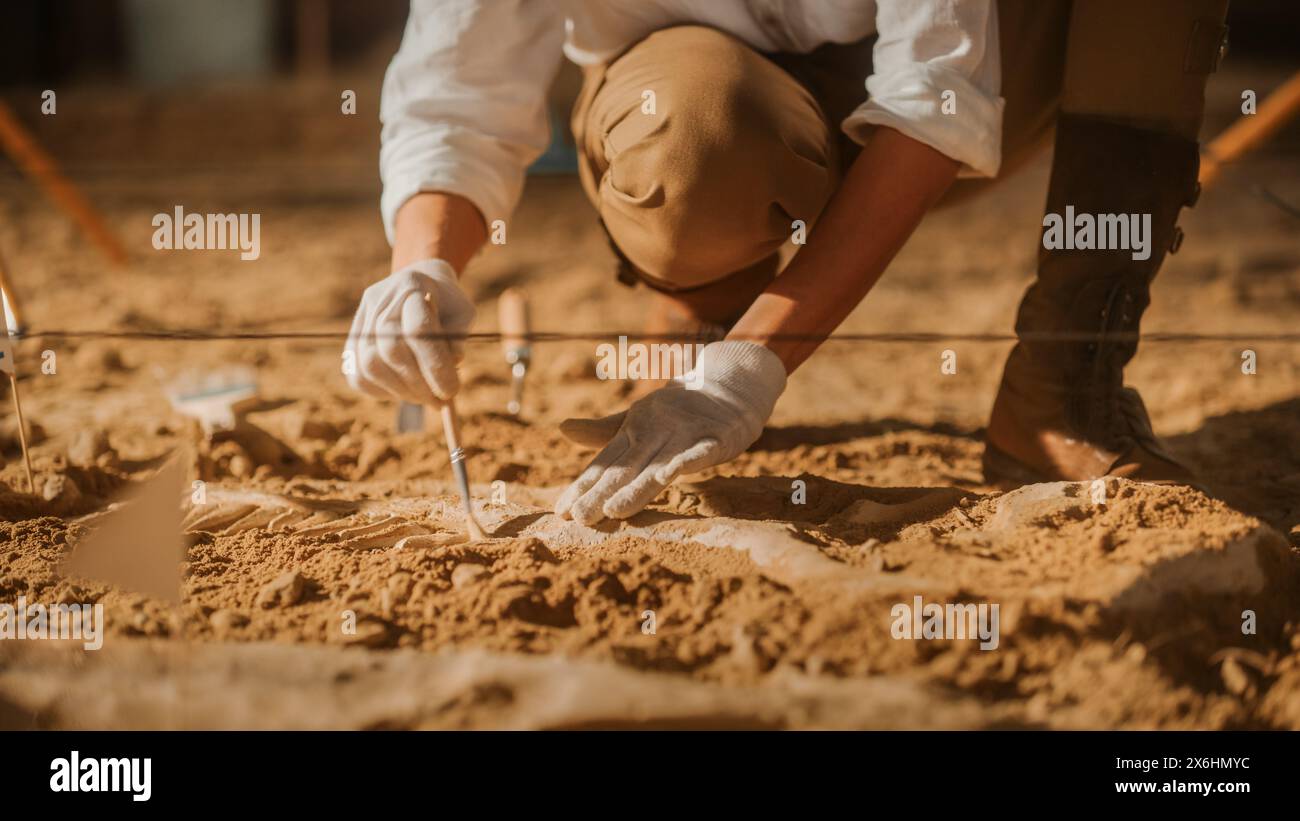 Paleontologist Cleaning Tyrannosaurus Dinosaur Skeleton with Brushes. Archeologists Discover Fossil Remains of New Predator Species. Archeological Excavation Digging Site. Close-up Focus on Hands Stock Photohttps://www.alamy.com/image-license-details/?v=1https://www.alamy.com/paleontologist-cleaning-tyrannosaurus-dinosaur-skeleton-with-brushes-archeologists-discover-fossil-remains-of-new-predator-species-archeological-excavation-digging-site-close-up-focus-on-hands-image606440448.html
Paleontologist Cleaning Tyrannosaurus Dinosaur Skeleton with Brushes. Archeologists Discover Fossil Remains of New Predator Species. Archeological Excavation Digging Site. Close-up Focus on Hands Stock Photohttps://www.alamy.com/image-license-details/?v=1https://www.alamy.com/paleontologist-cleaning-tyrannosaurus-dinosaur-skeleton-with-brushes-archeologists-discover-fossil-remains-of-new-predator-species-archeological-excavation-digging-site-close-up-focus-on-hands-image606440448.htmlRF2X6HMYC–Paleontologist Cleaning Tyrannosaurus Dinosaur Skeleton with Brushes. Archeologists Discover Fossil Remains of New Predator Species. Archeological Excavation Digging Site. Close-up Focus on Hands
 Handbuch der Petrefaktenkunde, Tübingen, H. Laupp, 1852, fossils, paleontology, Museum of Comparative Zoology, A detailed illustration showcasing a variety of ancient tools and fishing implements. The collection features different types of spear points, harpoons, and fishing lures, each labeled with numerical annotations. The objects vary in shape and size, reflecting the craftsmanship and design variations used across cultures and time periods. In addition to sharp points, the illustration includes a spoon-like tool, suggesting multifunctional uses. The meticulous depiction highlights the int Stock Photohttps://www.alamy.com/image-license-details/?v=1https://www.alamy.com/handbuch-der-petrefaktenkunde-tbingen-h-laupp-1852-fossils-paleontology-museum-of-comparative-zoology-a-detailed-illustration-showcasing-a-variety-of-ancient-tools-and-fishing-implements-the-collection-features-different-types-of-spear-points-harpoons-and-fishing-lures-each-labeled-with-numerical-annotations-the-objects-vary-in-shape-and-size-reflecting-the-craftsmanship-and-design-variations-used-across-cultures-and-time-periods-in-addition-to-sharp-points-the-illustration-includes-a-spoon-like-tool-suggesting-multifunctional-uses-the-meticulous-depiction-highlights-the-int-image636048190.html
Handbuch der Petrefaktenkunde, Tübingen, H. Laupp, 1852, fossils, paleontology, Museum of Comparative Zoology, A detailed illustration showcasing a variety of ancient tools and fishing implements. The collection features different types of spear points, harpoons, and fishing lures, each labeled with numerical annotations. The objects vary in shape and size, reflecting the craftsmanship and design variations used across cultures and time periods. In addition to sharp points, the illustration includes a spoon-like tool, suggesting multifunctional uses. The meticulous depiction highlights the int Stock Photohttps://www.alamy.com/image-license-details/?v=1https://www.alamy.com/handbuch-der-petrefaktenkunde-tbingen-h-laupp-1852-fossils-paleontology-museum-of-comparative-zoology-a-detailed-illustration-showcasing-a-variety-of-ancient-tools-and-fishing-implements-the-collection-features-different-types-of-spear-points-harpoons-and-fishing-lures-each-labeled-with-numerical-annotations-the-objects-vary-in-shape-and-size-reflecting-the-craftsmanship-and-design-variations-used-across-cultures-and-time-periods-in-addition-to-sharp-points-the-illustration-includes-a-spoon-like-tool-suggesting-multifunctional-uses-the-meticulous-depiction-highlights-the-int-image636048190.htmlRM2YXPDXP–Handbuch der Petrefaktenkunde, Tübingen, H. Laupp, 1852, fossils, paleontology, Museum of Comparative Zoology, A detailed illustration showcasing a variety of ancient tools and fishing implements. The collection features different types of spear points, harpoons, and fishing lures, each labeled with numerical annotations. The objects vary in shape and size, reflecting the craftsmanship and design variations used across cultures and time periods. In addition to sharp points, the illustration includes a spoon-like tool, suggesting multifunctional uses. The meticulous depiction highlights the int
 grid of an excavation with tools. archaeology and paleontology concept Stock Photohttps://www.alamy.com/image-license-details/?v=1https://www.alamy.com/grid-of-an-excavation-with-tools-archaeology-and-paleontology-concept-image623054013.html
grid of an excavation with tools. archaeology and paleontology concept Stock Photohttps://www.alamy.com/image-license-details/?v=1https://www.alamy.com/grid-of-an-excavation-with-tools-archaeology-and-paleontology-concept-image623054013.htmlRF2Y5JFN1–grid of an excavation with tools. archaeology and paleontology concept
 Fossil fish and dinosaurs skeletons and plants, maps, compass, coins, brushes, and archeology tools vector flat seamless pattern. Stone sections with bones and prehistoric herbs on beige background. Stock Vectorhttps://www.alamy.com/image-license-details/?v=1https://www.alamy.com/fossil-fish-and-dinosaurs-skeletons-and-plants-maps-compass-coins-brushes-and-archeology-tools-vector-flat-seamless-pattern-stone-sections-with-bones-and-prehistoric-herbs-on-beige-background-image433141952.html
Fossil fish and dinosaurs skeletons and plants, maps, compass, coins, brushes, and archeology tools vector flat seamless pattern. Stone sections with bones and prehistoric herbs on beige background. Stock Vectorhttps://www.alamy.com/image-license-details/?v=1https://www.alamy.com/fossil-fish-and-dinosaurs-skeletons-and-plants-maps-compass-coins-brushes-and-archeology-tools-vector-flat-seamless-pattern-stone-sections-with-bones-and-prehistoric-herbs-on-beige-background-image433141952.htmlRF2G4K8YC–Fossil fish and dinosaurs skeletons and plants, maps, compass, coins, brushes, and archeology tools vector flat seamless pattern. Stone sections with bones and prehistoric herbs on beige background.
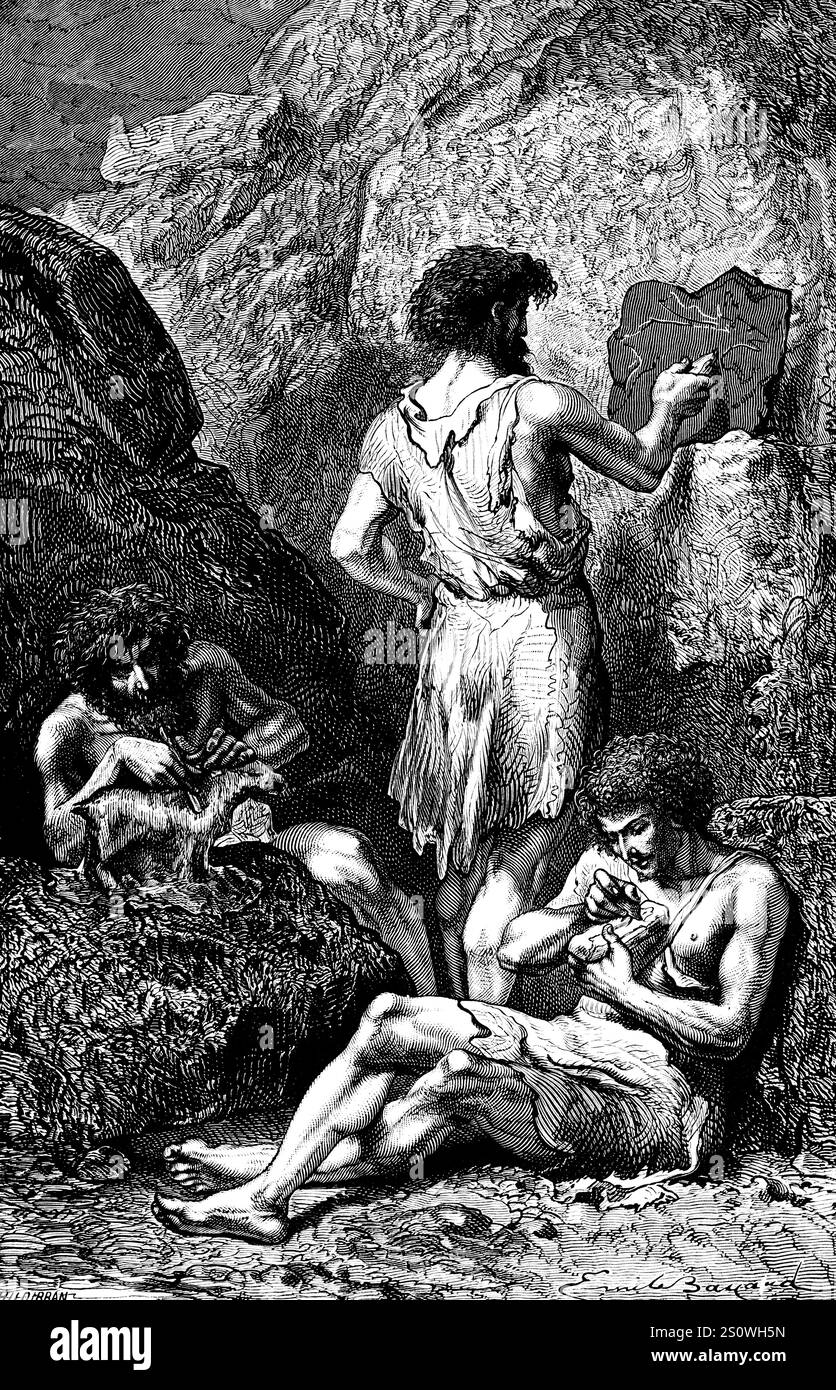 Cave dwellers painting walls and tools, rock cave, stone age, painting, early history of mankind, neolithic, cave painting, anthropology, palaeontolog Stock Photohttps://www.alamy.com/image-license-details/?v=1https://www.alamy.com/cave-dwellers-painting-walls-and-tools-rock-cave-stone-age-painting-early-history-of-mankind-neolithic-cave-painting-anthropology-palaeontolog-image637345905.html
Cave dwellers painting walls and tools, rock cave, stone age, painting, early history of mankind, neolithic, cave painting, anthropology, palaeontolog Stock Photohttps://www.alamy.com/image-license-details/?v=1https://www.alamy.com/cave-dwellers-painting-walls-and-tools-rock-cave-stone-age-painting-early-history-of-mankind-neolithic-cave-painting-anthropology-palaeontolog-image637345905.htmlRM2S0WH5N–Cave dwellers painting walls and tools, rock cave, stone age, painting, early history of mankind, neolithic, cave painting, anthropology, palaeontolog
 Archaeological excavations, archaeologist work, dig up an ancient clay artifact with special tool, brush in soil. Focus on artifact, square Stock Photohttps://www.alamy.com/image-license-details/?v=1https://www.alamy.com/archaeological-excavations-archaeologist-work-dig-up-an-ancient-clay-artifact-with-special-tool-brush-in-soil-focus-on-artifact-square-image553575429.html
Archaeological excavations, archaeologist work, dig up an ancient clay artifact with special tool, brush in soil. Focus on artifact, square Stock Photohttps://www.alamy.com/image-license-details/?v=1https://www.alamy.com/archaeological-excavations-archaeologist-work-dig-up-an-ancient-clay-artifact-with-special-tool-brush-in-soil-focus-on-artifact-square-image553575429.htmlRF2R4HF31–Archaeological excavations, archaeologist work, dig up an ancient clay artifact with special tool, brush in soil. Focus on artifact, square
 Homo habilis is an extinct species of hominid belonging to the genus Homo.It lived between 2.4 and 1.44 million years ago in eastern and southern Afri Stock Photohttps://www.alamy.com/image-license-details/?v=1https://www.alamy.com/homo-habilis-is-an-extinct-species-of-hominid-belonging-to-the-genus-homoit-lived-between-24-and-144-million-years-ago-in-eastern-and-southern-afri-image553597884.html
Homo habilis is an extinct species of hominid belonging to the genus Homo.It lived between 2.4 and 1.44 million years ago in eastern and southern Afri Stock Photohttps://www.alamy.com/image-license-details/?v=1https://www.alamy.com/homo-habilis-is-an-extinct-species-of-hominid-belonging-to-the-genus-homoit-lived-between-24-and-144-million-years-ago-in-eastern-and-southern-afri-image553597884.htmlRF2R4JFN0–Homo habilis is an extinct species of hominid belonging to the genus Homo.It lived between 2.4 and 1.44 million years ago in eastern and southern Afri
 briefcase with small tools in an archaeological excavation Archaeology works Stock Photohttps://www.alamy.com/image-license-details/?v=1https://www.alamy.com/briefcase-with-small-tools-in-an-archaeological-excavation-archaeology-works-image466735860.html
briefcase with small tools in an archaeological excavation Archaeology works Stock Photohttps://www.alamy.com/image-license-details/?v=1https://www.alamy.com/briefcase-with-small-tools-in-an-archaeological-excavation-archaeology-works-image466735860.htmlRF2J39J9T–briefcase with small tools in an archaeological excavation Archaeology works
 Skeleton and archaeological tools.Training for dig fossil.Simulated same as real digging. Stock Photohttps://www.alamy.com/image-license-details/?v=1https://www.alamy.com/stock-photo-skeleton-and-archaeological-toolstraining-for-dig-fossilsimulated-131986804.html
Skeleton and archaeological tools.Training for dig fossil.Simulated same as real digging. Stock Photohttps://www.alamy.com/image-license-details/?v=1https://www.alamy.com/stock-photo-skeleton-and-archaeological-toolstraining-for-dig-fossilsimulated-131986804.htmlRFHJMEEC–Skeleton and archaeological tools.Training for dig fossil.Simulated same as real digging.
 Archaeologist with excavation tools semi flat RGB color vector illustration Stock Vectorhttps://www.alamy.com/image-license-details/?v=1https://www.alamy.com/archaeologist-with-excavation-tools-semi-flat-rgb-color-vector-illustration-image460490970.html
Archaeologist with excavation tools semi flat RGB color vector illustration Stock Vectorhttps://www.alamy.com/image-license-details/?v=1https://www.alamy.com/archaeologist-with-excavation-tools-semi-flat-rgb-color-vector-illustration-image460490970.htmlRF2HN54X2–Archaeologist with excavation tools semi flat RGB color vector illustration
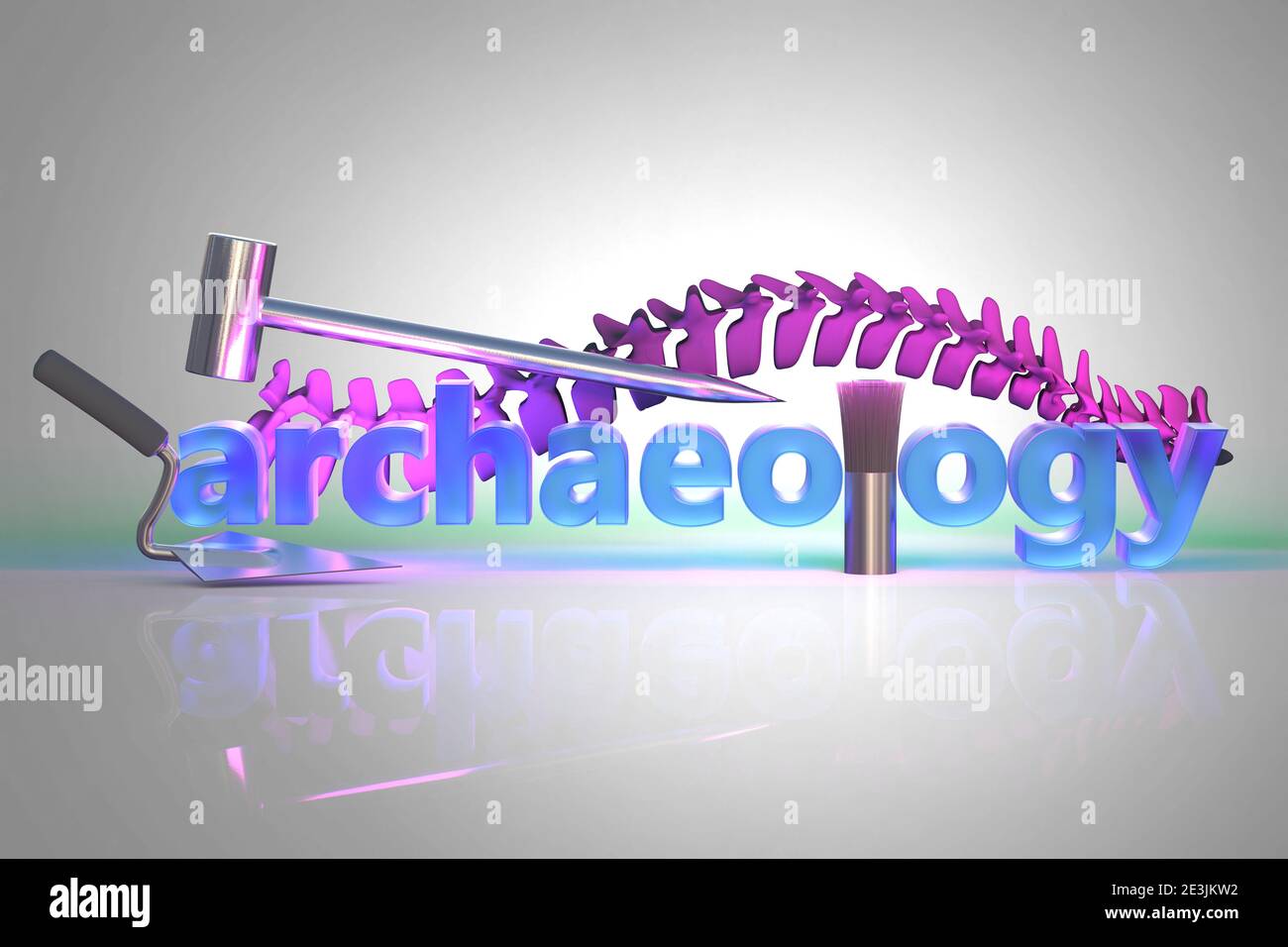 The word Archaeology and the archaeologist's tools trowel, hammer and brush. The bones of a spine in the background, 3d illustration Stock Photohttps://www.alamy.com/image-license-details/?v=1https://www.alamy.com/the-word-archaeology-and-the-archaeologists-tools-trowel-hammer-and-brush-the-bones-of-a-spine-in-the-background-3d-illustration-image398093166.html
The word Archaeology and the archaeologist's tools trowel, hammer and brush. The bones of a spine in the background, 3d illustration Stock Photohttps://www.alamy.com/image-license-details/?v=1https://www.alamy.com/the-word-archaeology-and-the-archaeologists-tools-trowel-hammer-and-brush-the-bones-of-a-spine-in-the-background-3d-illustration-image398093166.htmlRF2E3JKW2–The word Archaeology and the archaeologist's tools trowel, hammer and brush. The bones of a spine in the background, 3d illustration
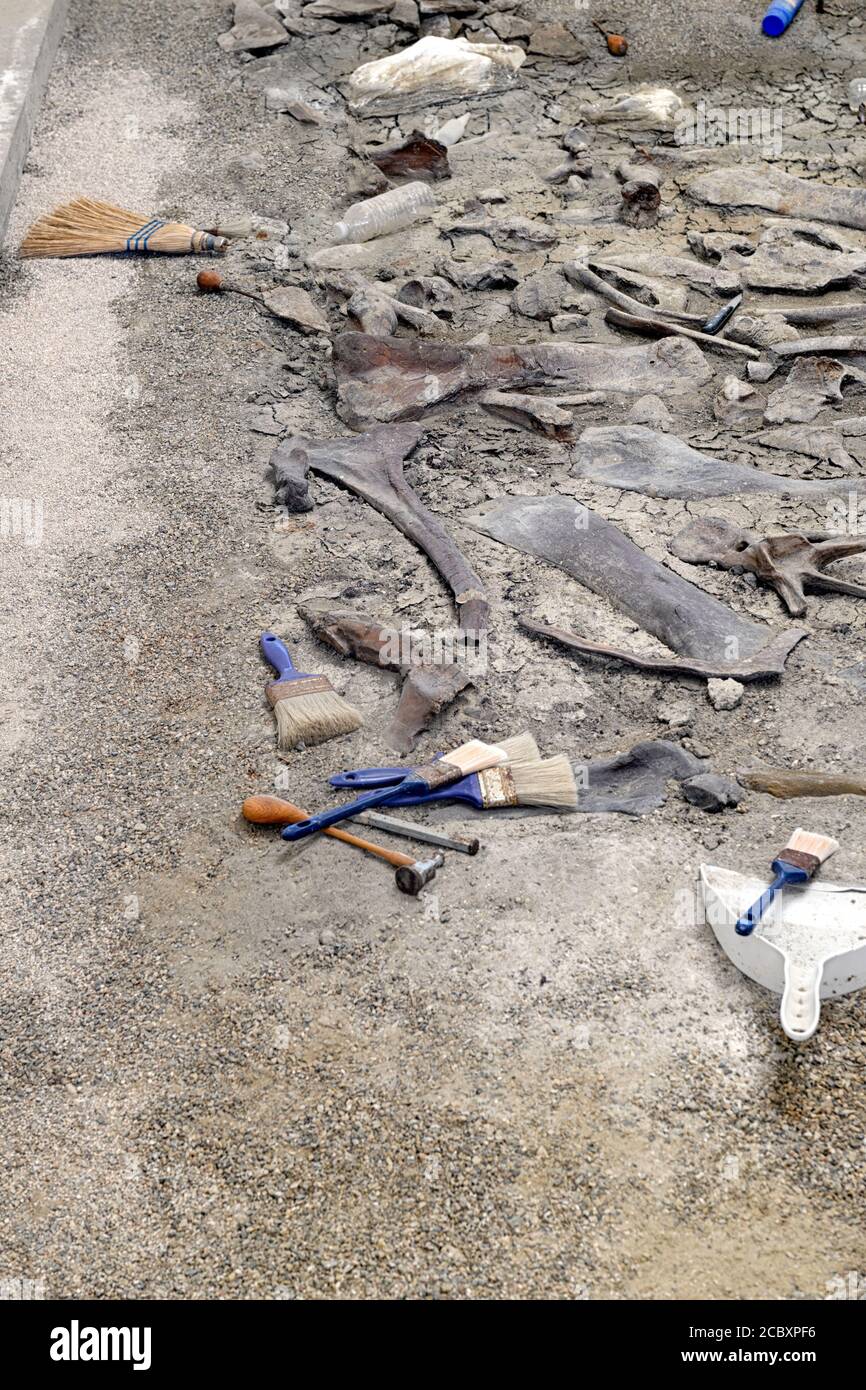 Dinosaur dig site at Dinosaur Provincial Park, Alberta Canada Stock Photohttps://www.alamy.com/image-license-details/?v=1https://www.alamy.com/dinosaur-dig-site-at-dinosaur-provincial-park-alberta-canada-image368767370.html
Dinosaur dig site at Dinosaur Provincial Park, Alberta Canada Stock Photohttps://www.alamy.com/image-license-details/?v=1https://www.alamy.com/dinosaur-dig-site-at-dinosaur-provincial-park-alberta-canada-image368767370.htmlRM2CBXPF6–Dinosaur dig site at Dinosaur Provincial Park, Alberta Canada
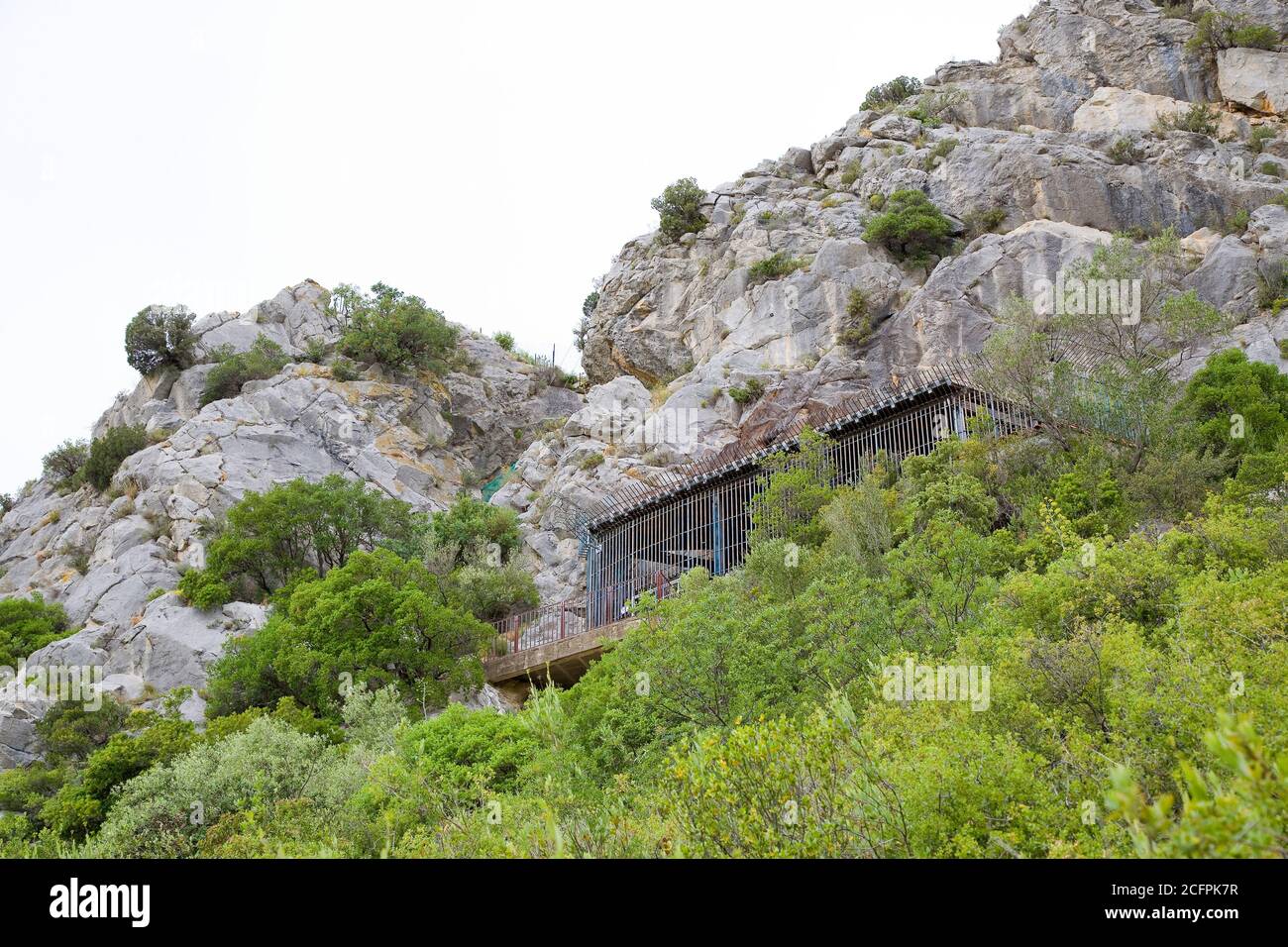 Caune de l'Arago site (France), where fossils and stone tools of Homo heidelbergensis (early Homo neanderthalensis) have been found. Stock Photohttps://www.alamy.com/image-license-details/?v=1https://www.alamy.com/caune-de-larago-site-france-where-fossils-and-stone-tools-of-homo-heidelbergensis-early-homo-neanderthalensis-have-been-found-image371135627.html
Caune de l'Arago site (France), where fossils and stone tools of Homo heidelbergensis (early Homo neanderthalensis) have been found. Stock Photohttps://www.alamy.com/image-license-details/?v=1https://www.alamy.com/caune-de-larago-site-france-where-fossils-and-stone-tools-of-homo-heidelbergensis-early-homo-neanderthalensis-have-been-found-image371135627.htmlRF2CFPK7R–Caune de l'Arago site (France), where fossils and stone tools of Homo heidelbergensis (early Homo neanderthalensis) have been found.
 Fossils being repaired in a paleontology laboratory, reconstructing dinosaur bones for science at the Smithsonian National Museum of Natural History Stock Photohttps://www.alamy.com/image-license-details/?v=1https://www.alamy.com/fossils-being-repaired-in-a-paleontology-laboratory-reconstructing-dinosaur-bones-for-science-at-the-smithsonian-national-museum-of-natural-history-image575662730.html
Fossils being repaired in a paleontology laboratory, reconstructing dinosaur bones for science at the Smithsonian National Museum of Natural History Stock Photohttps://www.alamy.com/image-license-details/?v=1https://www.alamy.com/fossils-being-repaired-in-a-paleontology-laboratory-reconstructing-dinosaur-bones-for-science-at-the-smithsonian-national-museum-of-natural-history-image575662730.htmlRM2TCFKK6–Fossils being repaired in a paleontology laboratory, reconstructing dinosaur bones for science at the Smithsonian National Museum of Natural History
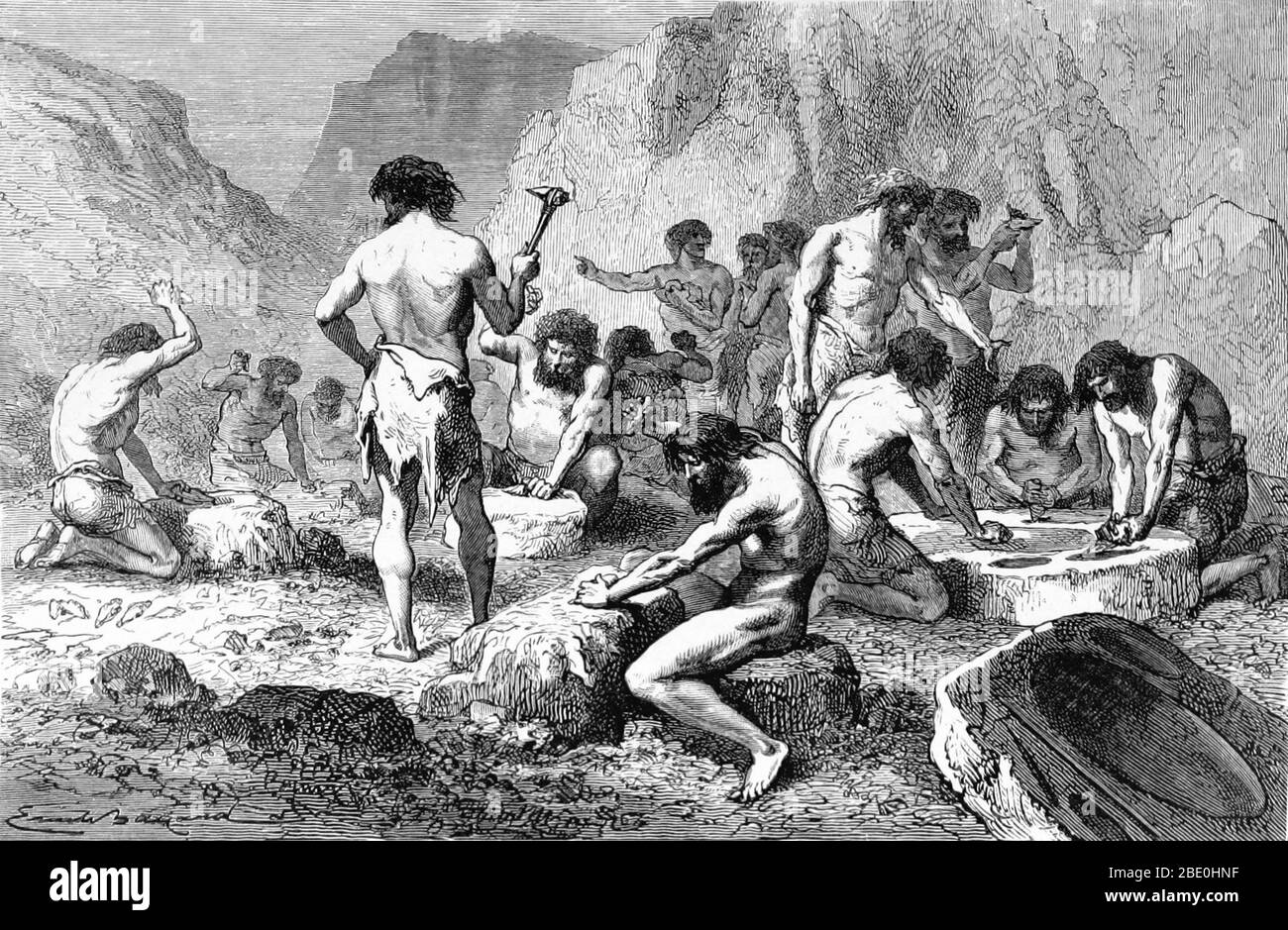 Captioned: 'Workshop for shaping and polishing stones characteristic of the epoch of mankind which we are now describing, the polished-stone period.' The Neolithic Period, or New Stone Age, was a period in the development of human technology, beginning about 10,200 BC and ending between 4,500 and 2,000 BC. What was also once called the polished Stone age was a period characterized by beautiful weapons and instruments made of flint and other kinds of stone. A stone tool is any tool made either partially or entirely out of stone. Most stone tools are associated with prehistoric, particularly Sto Stock Photohttps://www.alamy.com/image-license-details/?v=1https://www.alamy.com/captioned-workshop-for-shaping-and-polishing-stones-characteristic-of-the-epoch-of-mankind-which-we-are-now-describing-the-polished-stone-period-the-neolithic-period-or-new-stone-age-was-a-period-in-the-development-of-human-technology-beginning-about-10200-bc-and-ending-between-4500-and-2000-bc-what-was-also-once-called-the-polished-stone-age-was-a-period-characterized-by-beautiful-weapons-and-instruments-made-of-flint-and-other-kinds-of-stone-a-stone-tool-is-any-tool-made-either-partially-or-entirely-out-of-stone-most-stone-tools-are-associated-with-prehistoric-particularly-sto-image352826475.html
Captioned: 'Workshop for shaping and polishing stones characteristic of the epoch of mankind which we are now describing, the polished-stone period.' The Neolithic Period, or New Stone Age, was a period in the development of human technology, beginning about 10,200 BC and ending between 4,500 and 2,000 BC. What was also once called the polished Stone age was a period characterized by beautiful weapons and instruments made of flint and other kinds of stone. A stone tool is any tool made either partially or entirely out of stone. Most stone tools are associated with prehistoric, particularly Sto Stock Photohttps://www.alamy.com/image-license-details/?v=1https://www.alamy.com/captioned-workshop-for-shaping-and-polishing-stones-characteristic-of-the-epoch-of-mankind-which-we-are-now-describing-the-polished-stone-period-the-neolithic-period-or-new-stone-age-was-a-period-in-the-development-of-human-technology-beginning-about-10200-bc-and-ending-between-4500-and-2000-bc-what-was-also-once-called-the-polished-stone-age-was-a-period-characterized-by-beautiful-weapons-and-instruments-made-of-flint-and-other-kinds-of-stone-a-stone-tool-is-any-tool-made-either-partially-or-entirely-out-of-stone-most-stone-tools-are-associated-with-prehistoric-particularly-sto-image352826475.htmlRM2BE0HNF–Captioned: 'Workshop for shaping and polishing stones characteristic of the epoch of mankind which we are now describing, the polished-stone period.' The Neolithic Period, or New Stone Age, was a period in the development of human technology, beginning about 10,200 BC and ending between 4,500 and 2,000 BC. What was also once called the polished Stone age was a period characterized by beautiful weapons and instruments made of flint and other kinds of stone. A stone tool is any tool made either partially or entirely out of stone. Most stone tools are associated with prehistoric, particularly Sto
 Historical museum exhibition set with dinosaur skeletons. Vector cartoon isolated illustrations of paleontology museum elements with prehistoric animals bones, fossil extinct dino, wooden stone tools Stock Vectorhttps://www.alamy.com/image-license-details/?v=1https://www.alamy.com/historical-museum-exhibition-set-with-dinosaur-skeletons-vector-cartoon-isolated-illustrations-of-paleontology-museum-elements-with-prehistoric-animals-bones-fossil-extinct-dino-wooden-stone-tools-image476747759.html
Historical museum exhibition set with dinosaur skeletons. Vector cartoon isolated illustrations of paleontology museum elements with prehistoric animals bones, fossil extinct dino, wooden stone tools Stock Vectorhttps://www.alamy.com/image-license-details/?v=1https://www.alamy.com/historical-museum-exhibition-set-with-dinosaur-skeletons-vector-cartoon-isolated-illustrations-of-paleontology-museum-elements-with-prehistoric-animals-bones-fossil-extinct-dino-wooden-stone-tools-image476747759.htmlRF2JKHMHK–Historical museum exhibition set with dinosaur skeletons. Vector cartoon isolated illustrations of paleontology museum elements with prehistoric animals bones, fossil extinct dino, wooden stone tools
 Section of a gravel quarry at Saint-Acheul which contained the flint tools found by Boucher de Perthes, 1830. Saint-Acheul is a suburb of Amiens after which the Acheulean archeological culture is named. Acheulean tools were produced during the Lower Paleolithic era across Africa and much of West Asia, South Asia, East Asia and Europe, and are typically found with Homo erectus remains. Image taken from Primitive Man by Louis Figuier, 1870. Colorized. Stock Photohttps://www.alamy.com/image-license-details/?v=1https://www.alamy.com/section-of-a-gravel-quarry-at-saint-acheul-which-contained-the-flint-tools-found-by-boucher-de-perthes-1830-saint-acheul-is-a-suburb-of-amiens-after-which-the-acheulean-archeological-culture-is-named-acheulean-tools-were-produced-during-the-lower-paleolithic-era-across-africa-and-much-of-west-asia-south-asia-east-asia-and-europe-and-are-typically-found-with-homo-erectus-remains-image-taken-from-primitive-man-by-louis-figuier-1870-colorized-image458812308.html
Section of a gravel quarry at Saint-Acheul which contained the flint tools found by Boucher de Perthes, 1830. Saint-Acheul is a suburb of Amiens after which the Acheulean archeological culture is named. Acheulean tools were produced during the Lower Paleolithic era across Africa and much of West Asia, South Asia, East Asia and Europe, and are typically found with Homo erectus remains. Image taken from Primitive Man by Louis Figuier, 1870. Colorized. Stock Photohttps://www.alamy.com/image-license-details/?v=1https://www.alamy.com/section-of-a-gravel-quarry-at-saint-acheul-which-contained-the-flint-tools-found-by-boucher-de-perthes-1830-saint-acheul-is-a-suburb-of-amiens-after-which-the-acheulean-archeological-culture-is-named-acheulean-tools-were-produced-during-the-lower-paleolithic-era-across-africa-and-much-of-west-asia-south-asia-east-asia-and-europe-and-are-typically-found-with-homo-erectus-remains-image-taken-from-primitive-man-by-louis-figuier-1870-colorized-image458812308.htmlRM2HJCKNT–Section of a gravel quarry at Saint-Acheul which contained the flint tools found by Boucher de Perthes, 1830. Saint-Acheul is a suburb of Amiens after which the Acheulean archeological culture is named. Acheulean tools were produced during the Lower Paleolithic era across Africa and much of West Asia, South Asia, East Asia and Europe, and are typically found with Homo erectus remains. Image taken from Primitive Man by Louis Figuier, 1870. Colorized.
 Fossil lab and paleontology cabinet elements. Cartoon vector archaeology scientist laboratory research tools and exhibits under study - dinosaur bones Stock Vectorhttps://www.alamy.com/image-license-details/?v=1https://www.alamy.com/fossil-lab-and-paleontology-cabinet-elements-cartoon-vector-archaeology-scientist-laboratory-research-tools-and-exhibits-under-study-dinosaur-bones-image605987047.html
Fossil lab and paleontology cabinet elements. Cartoon vector archaeology scientist laboratory research tools and exhibits under study - dinosaur bones Stock Vectorhttps://www.alamy.com/image-license-details/?v=1https://www.alamy.com/fossil-lab-and-paleontology-cabinet-elements-cartoon-vector-archaeology-scientist-laboratory-research-tools-and-exhibits-under-study-dinosaur-bones-image605987047.htmlRF2X5W2JF–Fossil lab and paleontology cabinet elements. Cartoon vector archaeology scientist laboratory research tools and exhibits under study - dinosaur bones
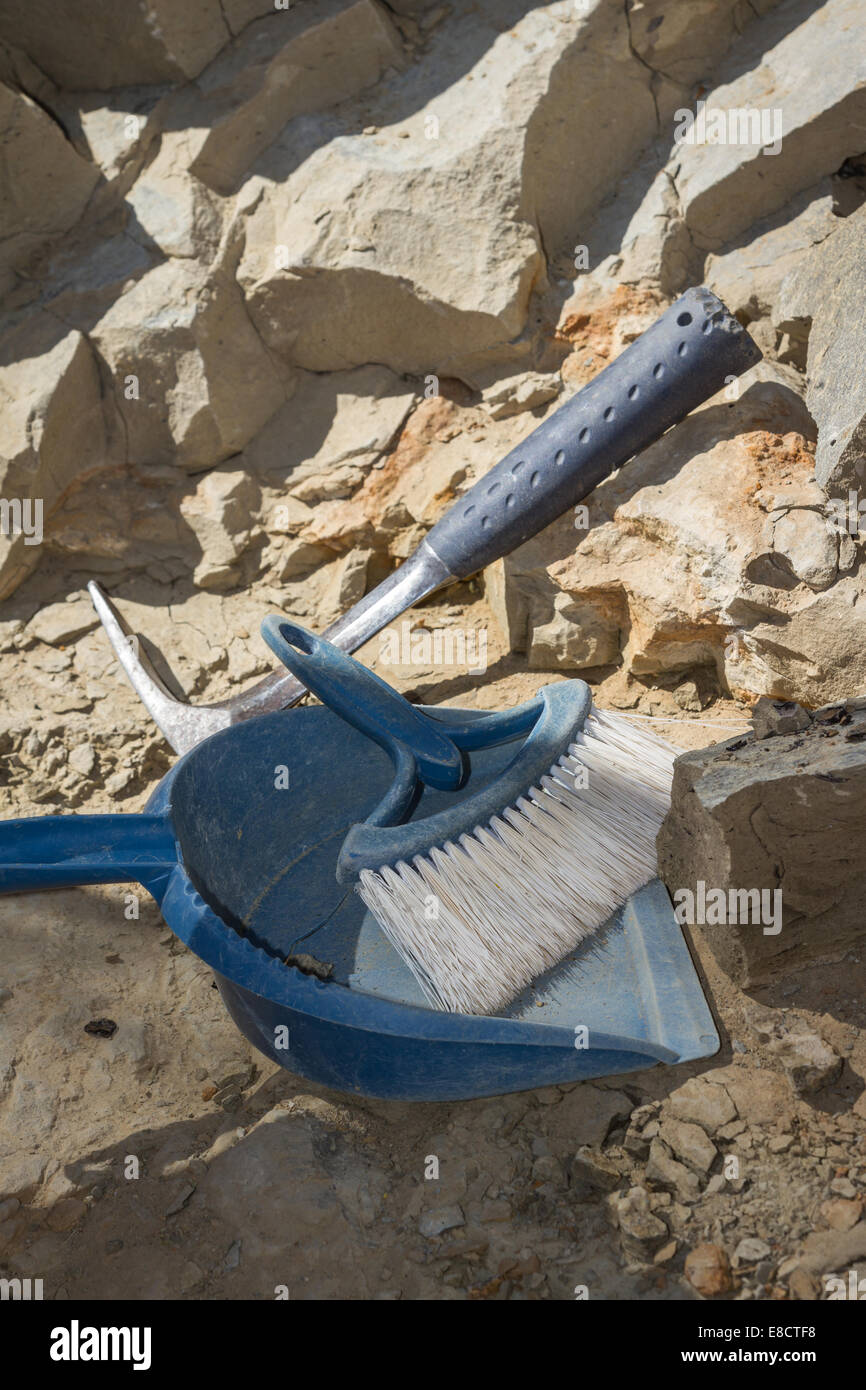 closeup of an active archaeological dig site with rustic hand tools Stock Photohttps://www.alamy.com/image-license-details/?v=1https://www.alamy.com/stock-photo-closeup-of-an-active-archaeological-dig-site-with-rustic-hand-tools-74041388.html
closeup of an active archaeological dig site with rustic hand tools Stock Photohttps://www.alamy.com/image-license-details/?v=1https://www.alamy.com/stock-photo-closeup-of-an-active-archaeological-dig-site-with-rustic-hand-tools-74041388.htmlRFE8CTF8–closeup of an active archaeological dig site with rustic hand tools
 Top-Down View: Two Great Paleontologists Cleaning Newly Discovered Dinosaur Skeleton. Archeologists Discover Fossil Remains of New Species. Archeological Excavation Digging Site. Stock Photohttps://www.alamy.com/image-license-details/?v=1https://www.alamy.com/top-down-view-two-great-paleontologists-cleaning-newly-discovered-dinosaur-skeleton-archeologists-discover-fossil-remains-of-new-species-archeological-excavation-digging-site-image606441964.html
Top-Down View: Two Great Paleontologists Cleaning Newly Discovered Dinosaur Skeleton. Archeologists Discover Fossil Remains of New Species. Archeological Excavation Digging Site. Stock Photohttps://www.alamy.com/image-license-details/?v=1https://www.alamy.com/top-down-view-two-great-paleontologists-cleaning-newly-discovered-dinosaur-skeleton-archeologists-discover-fossil-remains-of-new-species-archeological-excavation-digging-site-image606441964.htmlRF2X6HPWG–Top-Down View: Two Great Paleontologists Cleaning Newly Discovered Dinosaur Skeleton. Archeologists Discover Fossil Remains of New Species. Archeological Excavation Digging Site.
 A monograph on the fossil Reptilia of the Cretaceous formations, London, Printed for the Palæontographical Society, 1851-64, Great Britain, paleontology, Cretaceous, reptiles, fossil, fossil stories, This illustration showcases a series of six artifacts, labeled 1 through 6, likely representing various tools or objects from a historical or archaeological context. The top row features three distinct shapes: a rectangular piece with a deeply recessed area, a flatter oval or disc, and another artifact that appears to have been shaped for specific utility. Below, in the second row, two additional Stock Photohttps://www.alamy.com/image-license-details/?v=1https://www.alamy.com/a-monograph-on-the-fossil-reptilia-of-the-cretaceous-formations-london-printed-for-the-palontographical-society-1851-64-great-britain-paleontology-cretaceous-reptiles-fossil-fossil-stories-this-illustration-showcases-a-series-of-six-artifacts-labeled-1-through-6-likely-representing-various-tools-or-objects-from-a-historical-or-archaeological-context-the-top-row-features-three-distinct-shapes-a-rectangular-piece-with-a-deeply-recessed-area-a-flatter-oval-or-disc-and-another-artifact-that-appears-to-have-been-shaped-for-specific-utility-below-in-the-second-row-two-additional-image636076247.html
A monograph on the fossil Reptilia of the Cretaceous formations, London, Printed for the Palæontographical Society, 1851-64, Great Britain, paleontology, Cretaceous, reptiles, fossil, fossil stories, This illustration showcases a series of six artifacts, labeled 1 through 6, likely representing various tools or objects from a historical or archaeological context. The top row features three distinct shapes: a rectangular piece with a deeply recessed area, a flatter oval or disc, and another artifact that appears to have been shaped for specific utility. Below, in the second row, two additional Stock Photohttps://www.alamy.com/image-license-details/?v=1https://www.alamy.com/a-monograph-on-the-fossil-reptilia-of-the-cretaceous-formations-london-printed-for-the-palontographical-society-1851-64-great-britain-paleontology-cretaceous-reptiles-fossil-fossil-stories-this-illustration-showcases-a-series-of-six-artifacts-labeled-1-through-6-likely-representing-various-tools-or-objects-from-a-historical-or-archaeological-context-the-top-row-features-three-distinct-shapes-a-rectangular-piece-with-a-deeply-recessed-area-a-flatter-oval-or-disc-and-another-artifact-that-appears-to-have-been-shaped-for-specific-utility-below-in-the-second-row-two-additional-image636076247.htmlRM2YXRNMR–A monograph on the fossil Reptilia of the Cretaceous formations, London, Printed for the Palæontographical Society, 1851-64, Great Britain, paleontology, Cretaceous, reptiles, fossil, fossil stories, This illustration showcases a series of six artifacts, labeled 1 through 6, likely representing various tools or objects from a historical or archaeological context. The top row features three distinct shapes: a rectangular piece with a deeply recessed area, a flatter oval or disc, and another artifact that appears to have been shaped for specific utility. Below, in the second row, two additional
 skull bones and tools found in the graves of an old burial. the exposition of archaeological excavations, Stock Photohttps://www.alamy.com/image-license-details/?v=1https://www.alamy.com/skull-bones-and-tools-found-in-the-graves-of-an-old-burial-the-exposition-of-archaeological-excavations-image625589581.html
skull bones and tools found in the graves of an old burial. the exposition of archaeological excavations, Stock Photohttps://www.alamy.com/image-license-details/?v=1https://www.alamy.com/skull-bones-and-tools-found-in-the-graves-of-an-old-burial-the-exposition-of-archaeological-excavations-image625589581.htmlRF2Y9P1W1–skull bones and tools found in the graves of an old burial. the exposition of archaeological excavations,
 A large dinosaur bone encased in plaster in the laboratory of the Utah Field House of Natural History Museum. Vernal, Utah. Stock Photohttps://www.alamy.com/image-license-details/?v=1https://www.alamy.com/a-large-dinosaur-bone-encased-in-plaster-in-the-laboratory-of-the-utah-field-house-of-natural-history-museum-vernal-utah-image607048529.html
A large dinosaur bone encased in plaster in the laboratory of the Utah Field House of Natural History Museum. Vernal, Utah. Stock Photohttps://www.alamy.com/image-license-details/?v=1https://www.alamy.com/a-large-dinosaur-bone-encased-in-plaster-in-the-laboratory-of-the-utah-field-house-of-natural-history-museum-vernal-utah-image607048529.htmlRM2X7HCGH–A large dinosaur bone encased in plaster in the laboratory of the Utah Field House of Natural History Museum. Vernal, Utah.
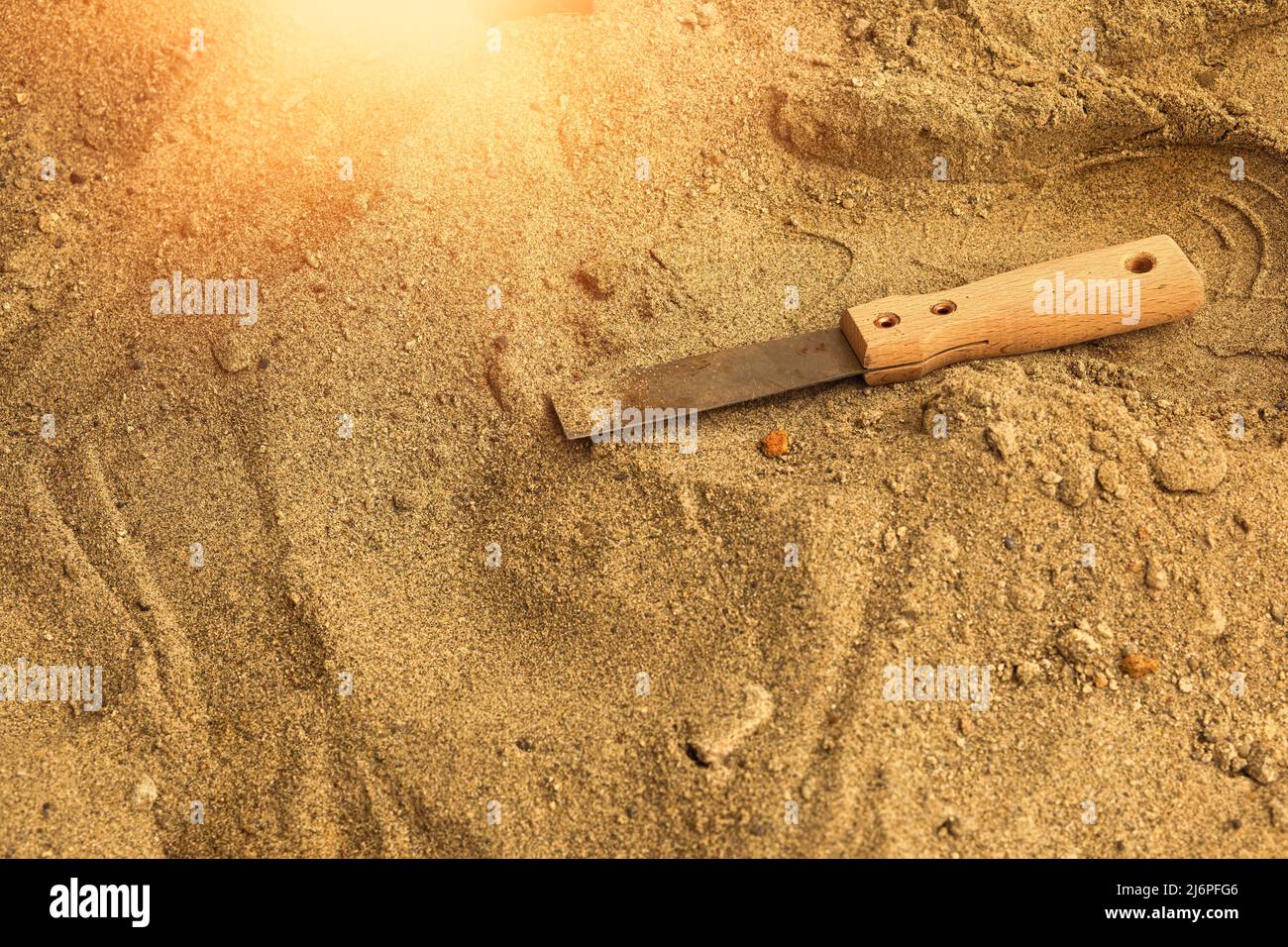 Skeleton and archaeological tools in the sand.Digging for fossils. Stock Photohttps://www.alamy.com/image-license-details/?v=1https://www.alamy.com/skeleton-and-archaeological-tools-in-the-sanddigging-for-fossils-image468863030.html
Skeleton and archaeological tools in the sand.Digging for fossils. Stock Photohttps://www.alamy.com/image-license-details/?v=1https://www.alamy.com/skeleton-and-archaeological-tools-in-the-sanddigging-for-fossils-image468863030.htmlRF2J6PFG6–Skeleton and archaeological tools in the sand.Digging for fossils.
 Archaeological excavations, archaeologists work, excavate an ancient clay artifact. Rulers show the size, depth and scale of work and items found Stock Photohttps://www.alamy.com/image-license-details/?v=1https://www.alamy.com/archaeological-excavations-archaeologists-work-excavate-an-ancient-clay-artifact-rulers-show-the-size-depth-and-scale-of-work-and-items-found-image551422206.html
Archaeological excavations, archaeologists work, excavate an ancient clay artifact. Rulers show the size, depth and scale of work and items found Stock Photohttps://www.alamy.com/image-license-details/?v=1https://www.alamy.com/archaeological-excavations-archaeologists-work-excavate-an-ancient-clay-artifact-rulers-show-the-size-depth-and-scale-of-work-and-items-found-image551422206.htmlRF2R13CJ6–Archaeological excavations, archaeologists work, excavate an ancient clay artifact. Rulers show the size, depth and scale of work and items found
 Homo habilis is an extinct species of hominid belonging to the genus Homo.It lived between 2.4 and 1.44 million years ago in eastern and southern Afri Stock Photohttps://www.alamy.com/image-license-details/?v=1https://www.alamy.com/homo-habilis-is-an-extinct-species-of-hominid-belonging-to-the-genus-homoit-lived-between-24-and-144-million-years-ago-in-eastern-and-southern-afri-image553597883.html
Homo habilis is an extinct species of hominid belonging to the genus Homo.It lived between 2.4 and 1.44 million years ago in eastern and southern Afri Stock Photohttps://www.alamy.com/image-license-details/?v=1https://www.alamy.com/homo-habilis-is-an-extinct-species-of-hominid-belonging-to-the-genus-homoit-lived-between-24-and-144-million-years-ago-in-eastern-and-southern-afri-image553597883.htmlRF2R4JFMY–Homo habilis is an extinct species of hominid belonging to the genus Homo.It lived between 2.4 and 1.44 million years ago in eastern and southern Afri
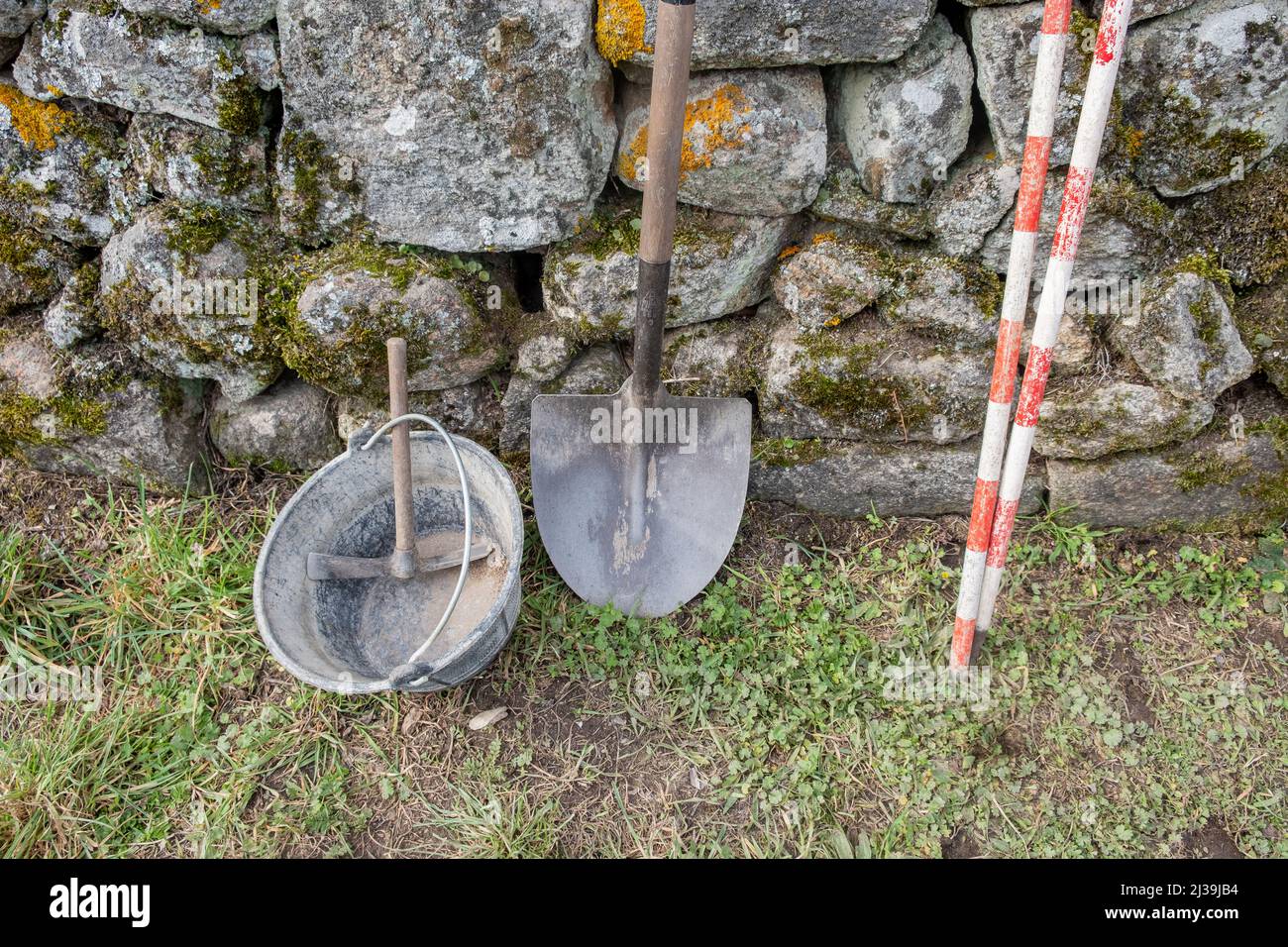 tools leaning against a wall in an archaeological excavation Archaeology works Stock Photohttps://www.alamy.com/image-license-details/?v=1https://www.alamy.com/tools-leaning-against-a-wall-in-an-archaeological-excavation-archaeology-works-image466735896.html
tools leaning against a wall in an archaeological excavation Archaeology works Stock Photohttps://www.alamy.com/image-license-details/?v=1https://www.alamy.com/tools-leaning-against-a-wall-in-an-archaeological-excavation-archaeology-works-image466735896.htmlRF2J39JB4–tools leaning against a wall in an archaeological excavation Archaeology works
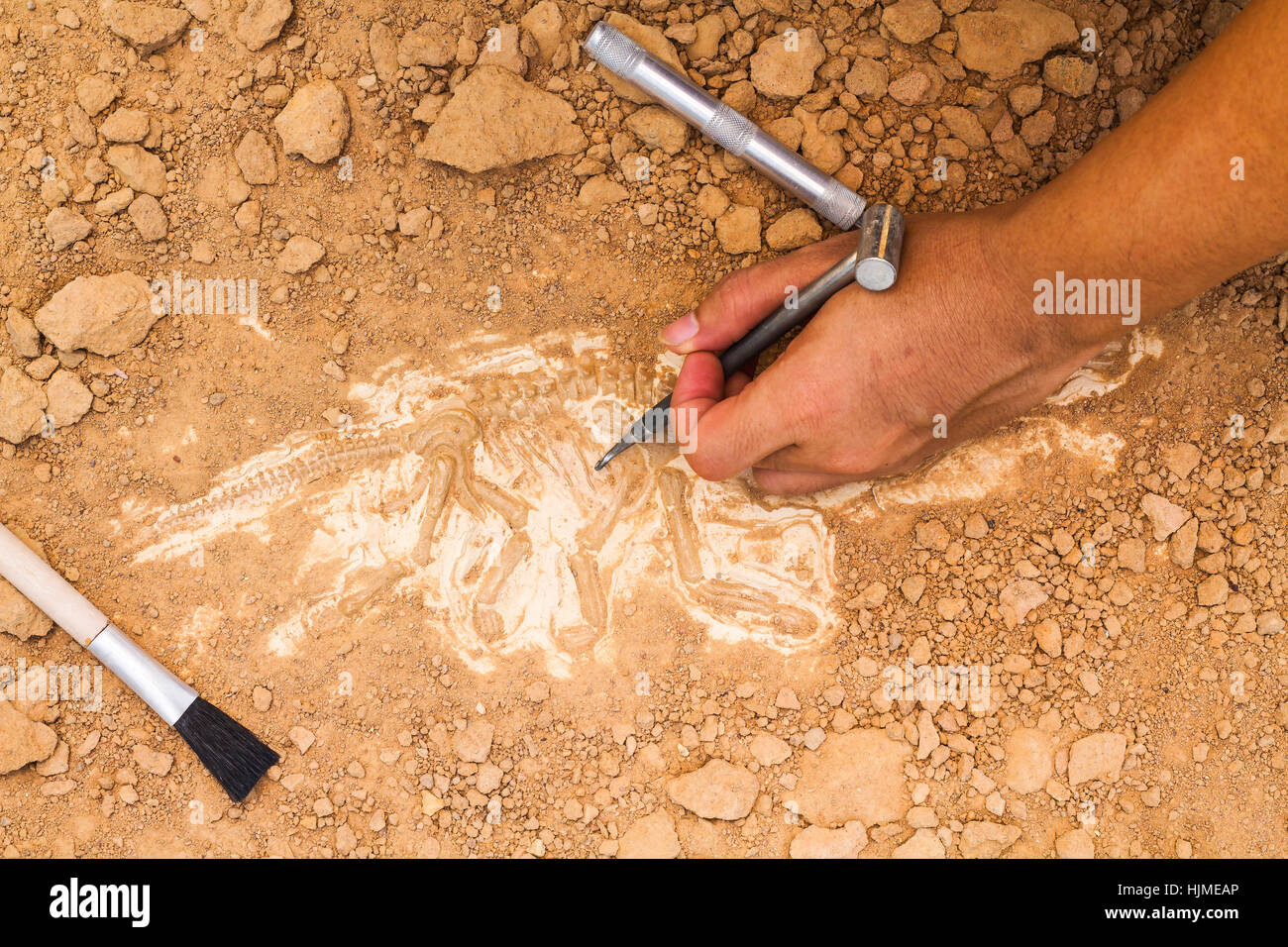 Skeleton and archaeological tools.Training for dig fossil.Simulated same as real digging. Stock Photohttps://www.alamy.com/image-license-details/?v=1https://www.alamy.com/stock-photo-skeleton-and-archaeological-toolstraining-for-dig-fossilsimulated-131986702.html
Skeleton and archaeological tools.Training for dig fossil.Simulated same as real digging. Stock Photohttps://www.alamy.com/image-license-details/?v=1https://www.alamy.com/stock-photo-skeleton-and-archaeological-toolstraining-for-dig-fossilsimulated-131986702.htmlRFHJMEAP–Skeleton and archaeological tools.Training for dig fossil.Simulated same as real digging.
 Archaeological work, excavated shingles, pieces of ancient clay artifact, vessels in clay soil Stock Photohttps://www.alamy.com/image-license-details/?v=1https://www.alamy.com/archaeological-work-excavated-shingles-pieces-of-ancient-clay-artifact-vessels-in-clay-soil-image439918832.html
Archaeological work, excavated shingles, pieces of ancient clay artifact, vessels in clay soil Stock Photohttps://www.alamy.com/image-license-details/?v=1https://www.alamy.com/archaeological-work-excavated-shingles-pieces-of-ancient-clay-artifact-vessels-in-clay-soil-image439918832.htmlRF2GFM0XT–Archaeological work, excavated shingles, pieces of ancient clay artifact, vessels in clay soil
RF2ARG6G6–Archeologist tools chalk icon. Restoration. Renovation equipment. Reconstruction of ancient artifact. Exploration. Paleontology. Historical search. Is
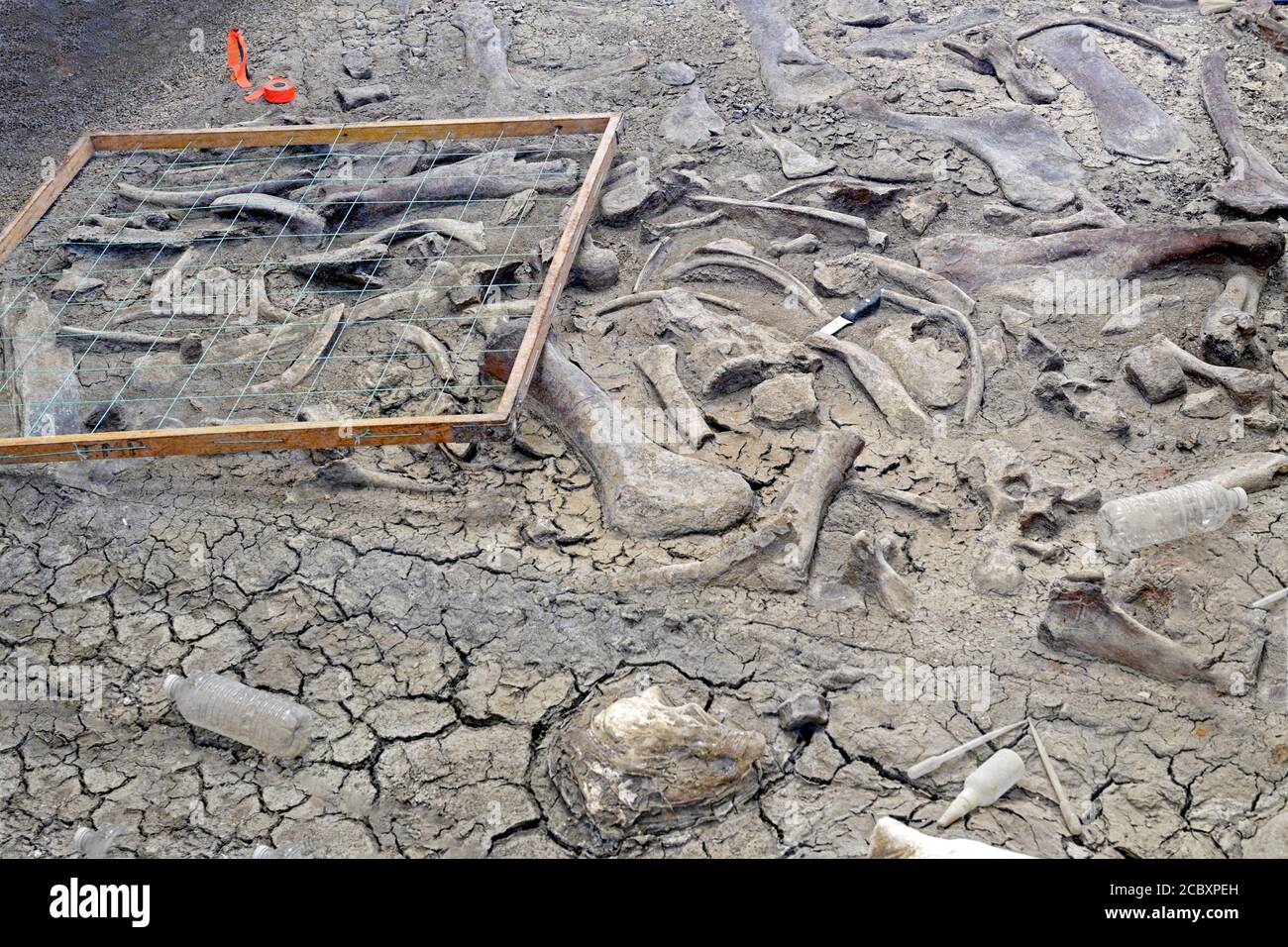 Dinosaur dig site at Dinosaur Provincial Park, Alberta Canada Stock Photohttps://www.alamy.com/image-license-details/?v=1https://www.alamy.com/dinosaur-dig-site-at-dinosaur-provincial-park-alberta-canada-image368767353.html
Dinosaur dig site at Dinosaur Provincial Park, Alberta Canada Stock Photohttps://www.alamy.com/image-license-details/?v=1https://www.alamy.com/dinosaur-dig-site-at-dinosaur-provincial-park-alberta-canada-image368767353.htmlRM2CBXPEH–Dinosaur dig site at Dinosaur Provincial Park, Alberta Canada
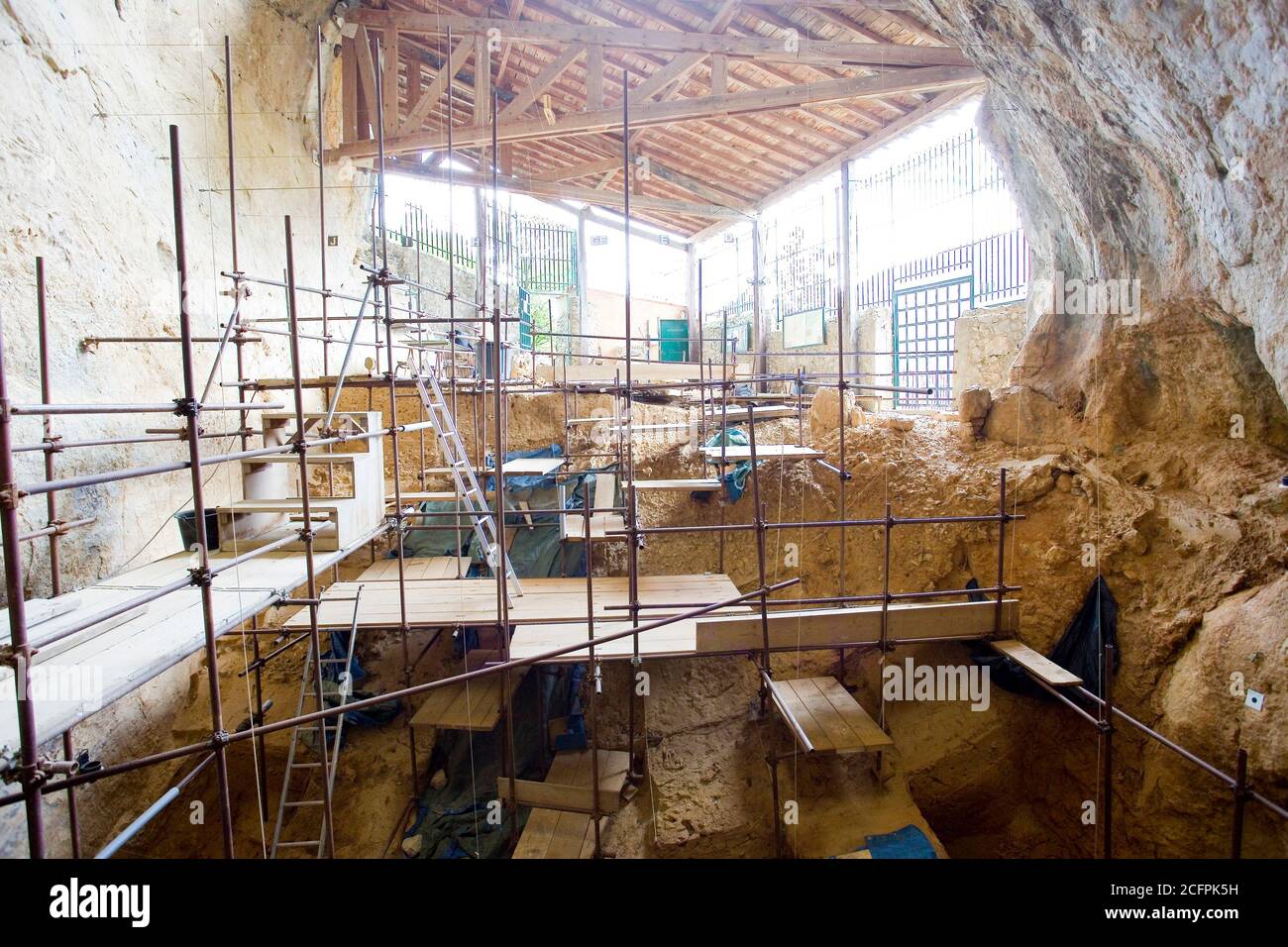 Caune de l'Arago site (France), where fossils and stone tools of Homo heidelbergensis (early Homo neanderthalensis) have been found. Stock Photohttps://www.alamy.com/image-license-details/?v=1https://www.alamy.com/caune-de-larago-site-france-where-fossils-and-stone-tools-of-homo-heidelbergensis-early-homo-neanderthalensis-have-been-found-image371135565.html
Caune de l'Arago site (France), where fossils and stone tools of Homo heidelbergensis (early Homo neanderthalensis) have been found. Stock Photohttps://www.alamy.com/image-license-details/?v=1https://www.alamy.com/caune-de-larago-site-france-where-fossils-and-stone-tools-of-homo-heidelbergensis-early-homo-neanderthalensis-have-been-found-image371135565.htmlRF2CFPK5H–Caune de l'Arago site (France), where fossils and stone tools of Homo heidelbergensis (early Homo neanderthalensis) have been found.
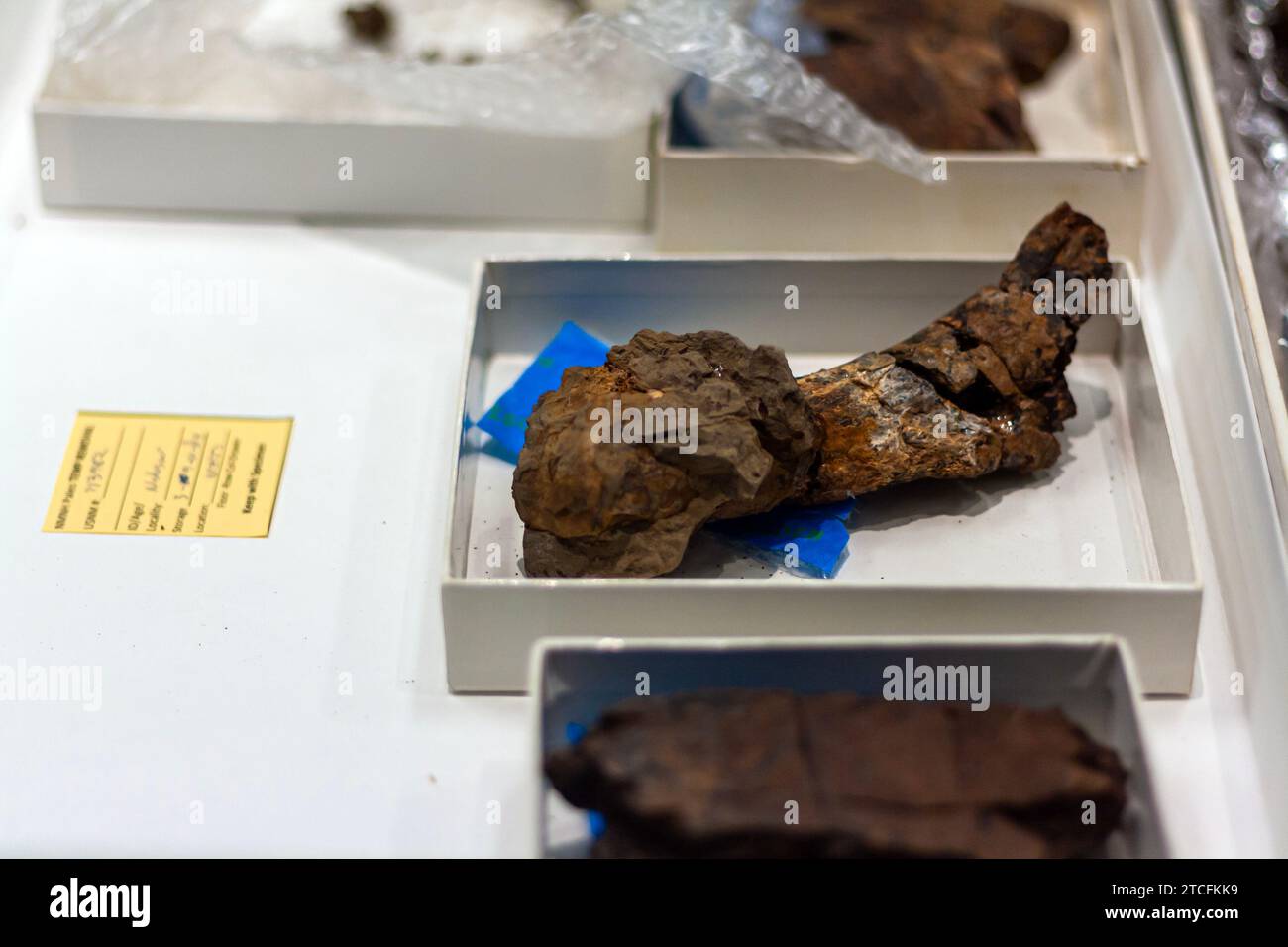 Fossils being repaired in a paleontology laboratory, reconstructing dinosaur bones for science at the Smithsonian National Museum of Natural History Stock Photohttps://www.alamy.com/image-license-details/?v=1https://www.alamy.com/fossils-being-repaired-in-a-paleontology-laboratory-reconstructing-dinosaur-bones-for-science-at-the-smithsonian-national-museum-of-natural-history-image575662733.html
Fossils being repaired in a paleontology laboratory, reconstructing dinosaur bones for science at the Smithsonian National Museum of Natural History Stock Photohttps://www.alamy.com/image-license-details/?v=1https://www.alamy.com/fossils-being-repaired-in-a-paleontology-laboratory-reconstructing-dinosaur-bones-for-science-at-the-smithsonian-national-museum-of-natural-history-image575662733.htmlRM2TCFKK9–Fossils being repaired in a paleontology laboratory, reconstructing dinosaur bones for science at the Smithsonian National Museum of Natural History
 tools of an excavation in search of archaeological and paleontological remains Stock Photohttps://www.alamy.com/image-license-details/?v=1https://www.alamy.com/tools-of-an-excavation-in-search-of-archaeological-and-paleontological-remains-image623054015.html
tools of an excavation in search of archaeological and paleontological remains Stock Photohttps://www.alamy.com/image-license-details/?v=1https://www.alamy.com/tools-of-an-excavation-in-search-of-archaeological-and-paleontological-remains-image623054015.htmlRF2Y5JFN3–tools of an excavation in search of archaeological and paleontological remains
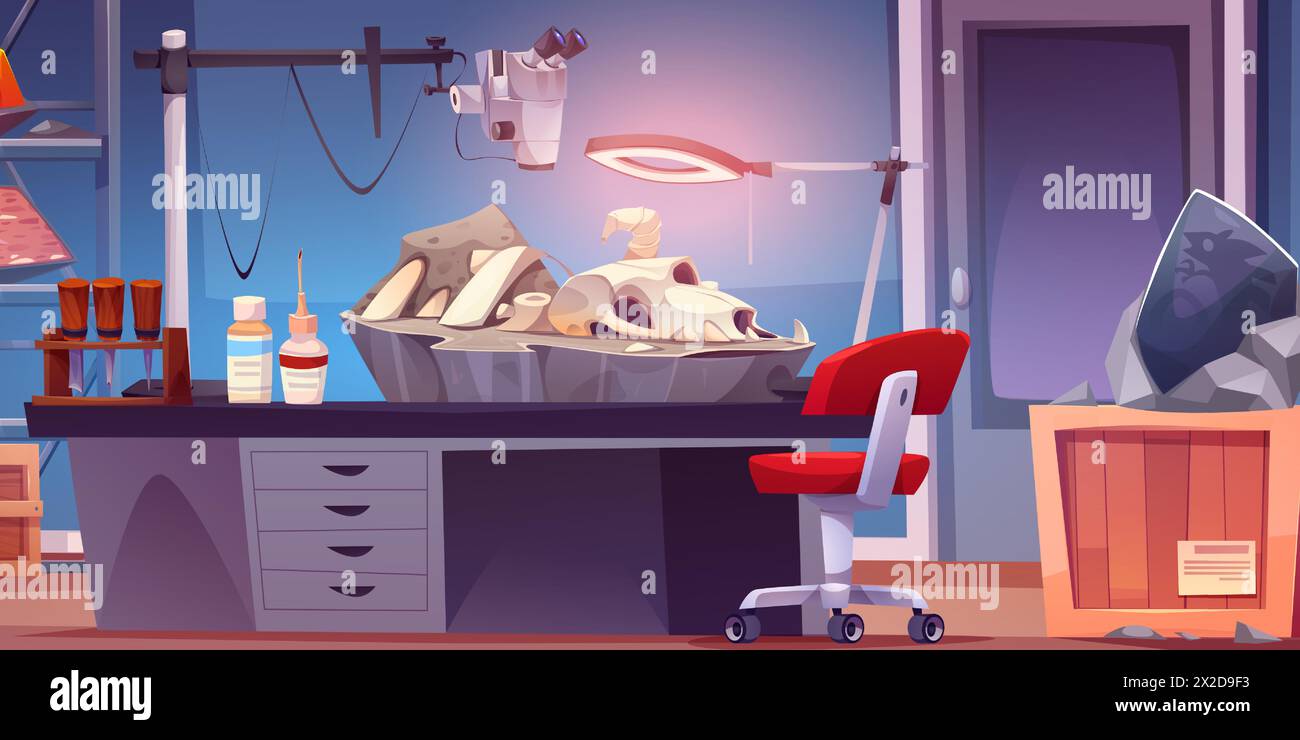 Fossil lab interior with research tools and exhibits under study. Paleontology cabinet inside with dinosaur bones on table under magnifier. Cartoon vector archaeology explorer science laboratory. Stock Vectorhttps://www.alamy.com/image-license-details/?v=1https://www.alamy.com/fossil-lab-interior-with-research-tools-and-exhibits-under-study-paleontology-cabinet-inside-with-dinosaur-bones-on-table-under-magnifier-cartoon-vector-archaeology-explorer-science-laboratory-image603885047.html
Fossil lab interior with research tools and exhibits under study. Paleontology cabinet inside with dinosaur bones on table under magnifier. Cartoon vector archaeology explorer science laboratory. Stock Vectorhttps://www.alamy.com/image-license-details/?v=1https://www.alamy.com/fossil-lab-interior-with-research-tools-and-exhibits-under-study-paleontology-cabinet-inside-with-dinosaur-bones-on-table-under-magnifier-cartoon-vector-archaeology-explorer-science-laboratory-image603885047.htmlRF2X2D9F3–Fossil lab interior with research tools and exhibits under study. Paleontology cabinet inside with dinosaur bones on table under magnifier. Cartoon vector archaeology explorer science laboratory.
 Section of a gravel quarry at Saint-Acheul which contained the flint tools found by Boucher de Perthes, 1830. Saint-Acheul is a suburb of Amiens after which the Acheulean archeological culture is named. Acheulean tools were produced during the Lower Paleolithic era across Africa and much of West Asia, South Asia, East Asia and Europe, and are typically found with Homo erectus remains. Image taken from Primitive Man by Louis Figuier, 1870 (cropped and cleaned). Colorized. Stock Photohttps://www.alamy.com/image-license-details/?v=1https://www.alamy.com/section-of-a-gravel-quarry-at-saint-acheul-which-contained-the-flint-tools-found-by-boucher-de-perthes-1830-saint-acheul-is-a-suburb-of-amiens-after-which-the-acheulean-archeological-culture-is-named-acheulean-tools-were-produced-during-the-lower-paleolithic-era-across-africa-and-much-of-west-asia-south-asia-east-asia-and-europe-and-are-typically-found-with-homo-erectus-remains-image-taken-from-primitive-man-by-louis-figuier-1870-cropped-and-cleaned-colorized-image458811163.html
Section of a gravel quarry at Saint-Acheul which contained the flint tools found by Boucher de Perthes, 1830. Saint-Acheul is a suburb of Amiens after which the Acheulean archeological culture is named. Acheulean tools were produced during the Lower Paleolithic era across Africa and much of West Asia, South Asia, East Asia and Europe, and are typically found with Homo erectus remains. Image taken from Primitive Man by Louis Figuier, 1870 (cropped and cleaned). Colorized. Stock Photohttps://www.alamy.com/image-license-details/?v=1https://www.alamy.com/section-of-a-gravel-quarry-at-saint-acheul-which-contained-the-flint-tools-found-by-boucher-de-perthes-1830-saint-acheul-is-a-suburb-of-amiens-after-which-the-acheulean-archeological-culture-is-named-acheulean-tools-were-produced-during-the-lower-paleolithic-era-across-africa-and-much-of-west-asia-south-asia-east-asia-and-europe-and-are-typically-found-with-homo-erectus-remains-image-taken-from-primitive-man-by-louis-figuier-1870-cropped-and-cleaned-colorized-image458811163.htmlRM2HJCJ8Y–Section of a gravel quarry at Saint-Acheul which contained the flint tools found by Boucher de Perthes, 1830. Saint-Acheul is a suburb of Amiens after which the Acheulean archeological culture is named. Acheulean tools were produced during the Lower Paleolithic era across Africa and much of West Asia, South Asia, East Asia and Europe, and are typically found with Homo erectus remains. Image taken from Primitive Man by Louis Figuier, 1870 (cropped and cleaned). Colorized.
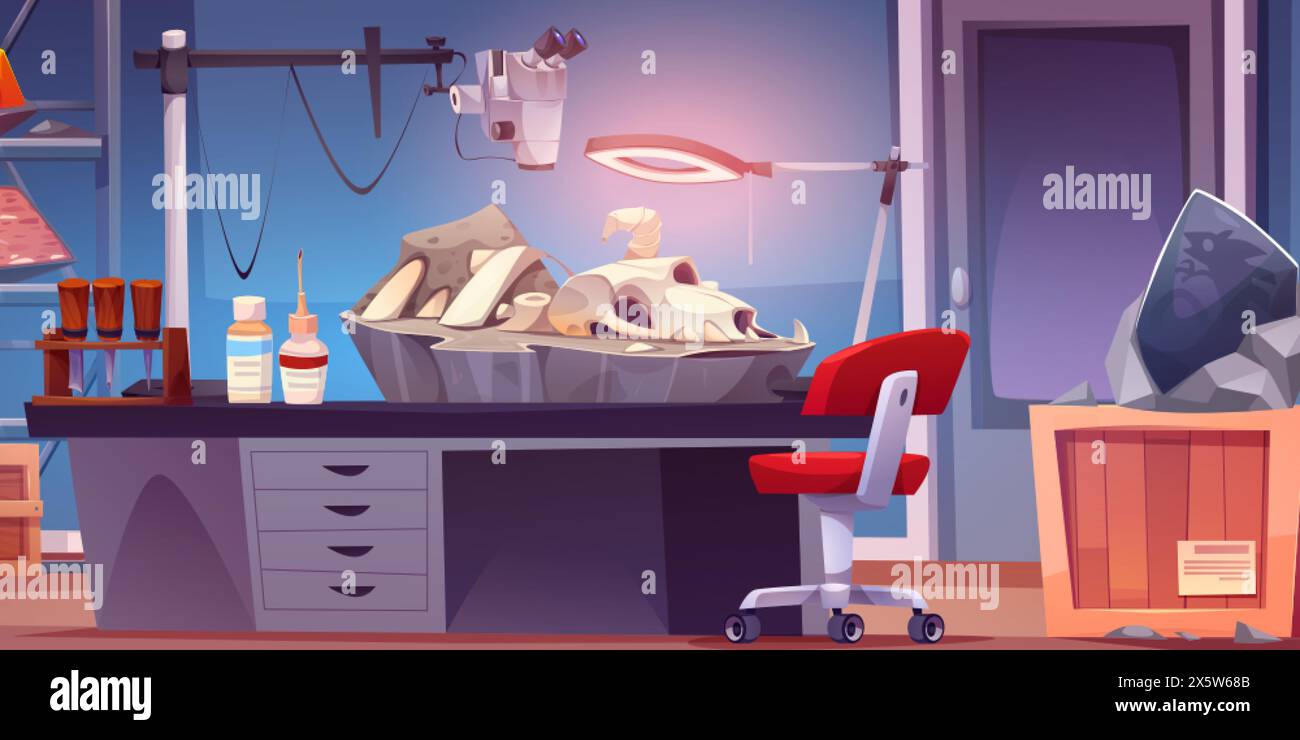 Fossil lab interior with research tools and exhibits under study. Paleontology cabinet inside with dinosaur bones on table under magnifier. Cartoon ve Stock Vectorhttps://www.alamy.com/image-license-details/?v=1https://www.alamy.com/fossil-lab-interior-with-research-tools-and-exhibits-under-study-paleontology-cabinet-inside-with-dinosaur-bones-on-table-under-magnifier-cartoon-ve-image605989899.html
Fossil lab interior with research tools and exhibits under study. Paleontology cabinet inside with dinosaur bones on table under magnifier. Cartoon ve Stock Vectorhttps://www.alamy.com/image-license-details/?v=1https://www.alamy.com/fossil-lab-interior-with-research-tools-and-exhibits-under-study-paleontology-cabinet-inside-with-dinosaur-bones-on-table-under-magnifier-cartoon-ve-image605989899.htmlRF2X5W68B–Fossil lab interior with research tools and exhibits under study. Paleontology cabinet inside with dinosaur bones on table under magnifier. Cartoon ve
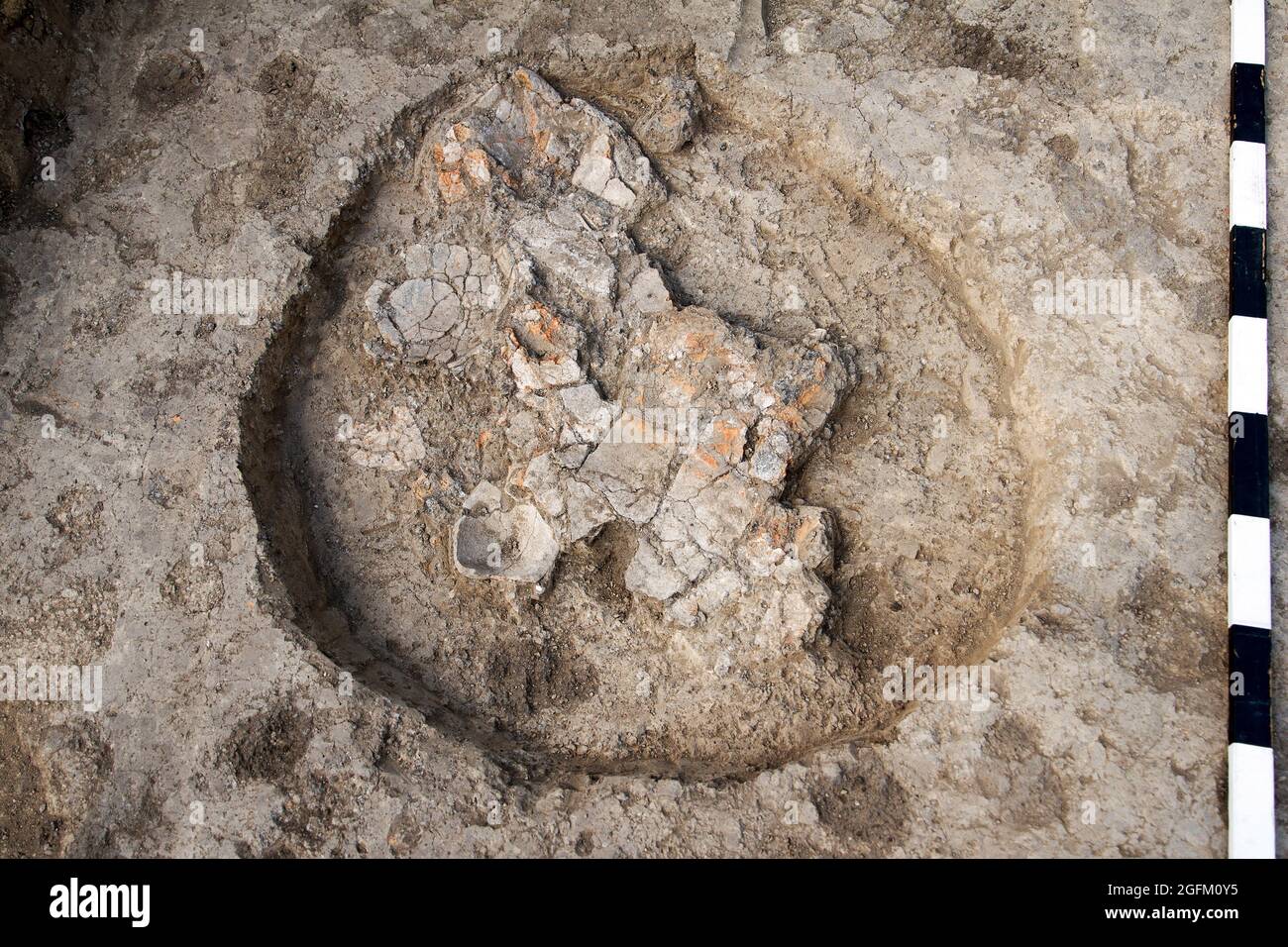 Archaeological excavations, dig up an ancient clay artifact with special tools in soil Stock Photohttps://www.alamy.com/image-license-details/?v=1https://www.alamy.com/archaeological-excavations-dig-up-an-ancient-clay-artifact-with-special-tools-in-soil-image439918841.html
Archaeological excavations, dig up an ancient clay artifact with special tools in soil Stock Photohttps://www.alamy.com/image-license-details/?v=1https://www.alamy.com/archaeological-excavations-dig-up-an-ancient-clay-artifact-with-special-tools-in-soil-image439918841.htmlRF2GFM0Y5–Archaeological excavations, dig up an ancient clay artifact with special tools in soil
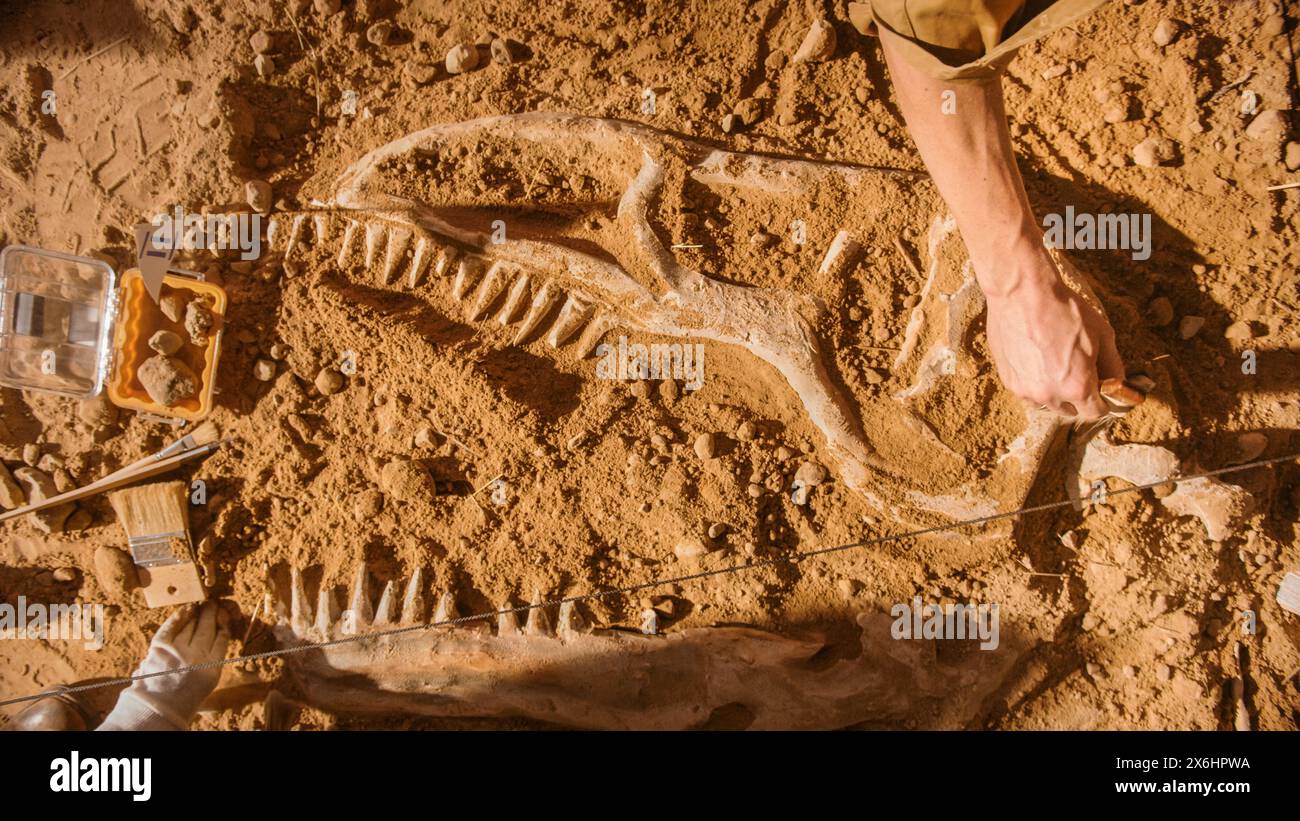 Top-Down View: Paleontologists Cleaning Tyrannosaurus Dinosaur Skeleton. Archeologists Discover Fossil Remains of New Predator Species. Archeological Excavation Digging Site. Stock Photohttps://www.alamy.com/image-license-details/?v=1https://www.alamy.com/top-down-view-paleontologists-cleaning-tyrannosaurus-dinosaur-skeleton-archeologists-discover-fossil-remains-of-new-predator-species-archeological-excavation-digging-site-image606441958.html
Top-Down View: Paleontologists Cleaning Tyrannosaurus Dinosaur Skeleton. Archeologists Discover Fossil Remains of New Predator Species. Archeological Excavation Digging Site. Stock Photohttps://www.alamy.com/image-license-details/?v=1https://www.alamy.com/top-down-view-paleontologists-cleaning-tyrannosaurus-dinosaur-skeleton-archeologists-discover-fossil-remains-of-new-predator-species-archeological-excavation-digging-site-image606441958.htmlRF2X6HPWA–Top-Down View: Paleontologists Cleaning Tyrannosaurus Dinosaur Skeleton. Archeologists Discover Fossil Remains of New Predator Species. Archeological Excavation Digging Site.
 A monograph on the fossil Reptilia of the Cretaceous formations. London, Printed for the Palæontographical Society, 1851-64. Great Britain, paleontology, Cretaceous, reptile fossils, fossil stories, The illustration features four detailed depictions of ancient tools or implements, each labeled for clarity. The first object, labeled ''1.jpg,' resembles a large, flat stone tool, showcasing a thick edge likely used for cutting or scraping. The second item, noted as ''2.jpg,' is elongated and narrow, suggesting it was designed for precision tasks. The third tool, marked as ''3.jpg,' displays a mor Stock Photohttps://www.alamy.com/image-license-details/?v=1https://www.alamy.com/a-monograph-on-the-fossil-reptilia-of-the-cretaceous-formations-london-printed-for-the-palontographical-society-1851-64-great-britain-paleontology-cretaceous-reptile-fossils-fossil-stories-the-illustration-features-four-detailed-depictions-of-ancient-tools-or-implements-each-labeled-for-clarity-the-first-object-labeled-1jpg-resembles-a-large-flat-stone-tool-showcasing-a-thick-edge-likely-used-for-cutting-or-scraping-the-second-item-noted-as-2jpg-is-elongated-and-narrow-suggesting-it-was-designed-for-precision-tasks-the-third-tool-marked-as-3jpg-displays-a-mor-image636056351.html
A monograph on the fossil Reptilia of the Cretaceous formations. London, Printed for the Palæontographical Society, 1851-64. Great Britain, paleontology, Cretaceous, reptile fossils, fossil stories, The illustration features four detailed depictions of ancient tools or implements, each labeled for clarity. The first object, labeled ''1.jpg,' resembles a large, flat stone tool, showcasing a thick edge likely used for cutting or scraping. The second item, noted as ''2.jpg,' is elongated and narrow, suggesting it was designed for precision tasks. The third tool, marked as ''3.jpg,' displays a mor Stock Photohttps://www.alamy.com/image-license-details/?v=1https://www.alamy.com/a-monograph-on-the-fossil-reptilia-of-the-cretaceous-formations-london-printed-for-the-palontographical-society-1851-64-great-britain-paleontology-cretaceous-reptile-fossils-fossil-stories-the-illustration-features-four-detailed-depictions-of-ancient-tools-or-implements-each-labeled-for-clarity-the-first-object-labeled-1jpg-resembles-a-large-flat-stone-tool-showcasing-a-thick-edge-likely-used-for-cutting-or-scraping-the-second-item-noted-as-2jpg-is-elongated-and-narrow-suggesting-it-was-designed-for-precision-tasks-the-third-tool-marked-as-3jpg-displays-a-mor-image636056351.htmlRM2YXPTA7–A monograph on the fossil Reptilia of the Cretaceous formations. London, Printed for the Palæontographical Society, 1851-64. Great Britain, paleontology, Cretaceous, reptile fossils, fossil stories, The illustration features four detailed depictions of ancient tools or implements, each labeled for clarity. The first object, labeled ''1.jpg,' resembles a large, flat stone tool, showcasing a thick edge likely used for cutting or scraping. The second item, noted as ''2.jpg,' is elongated and narrow, suggesting it was designed for precision tasks. The third tool, marked as ''3.jpg,' displays a mor
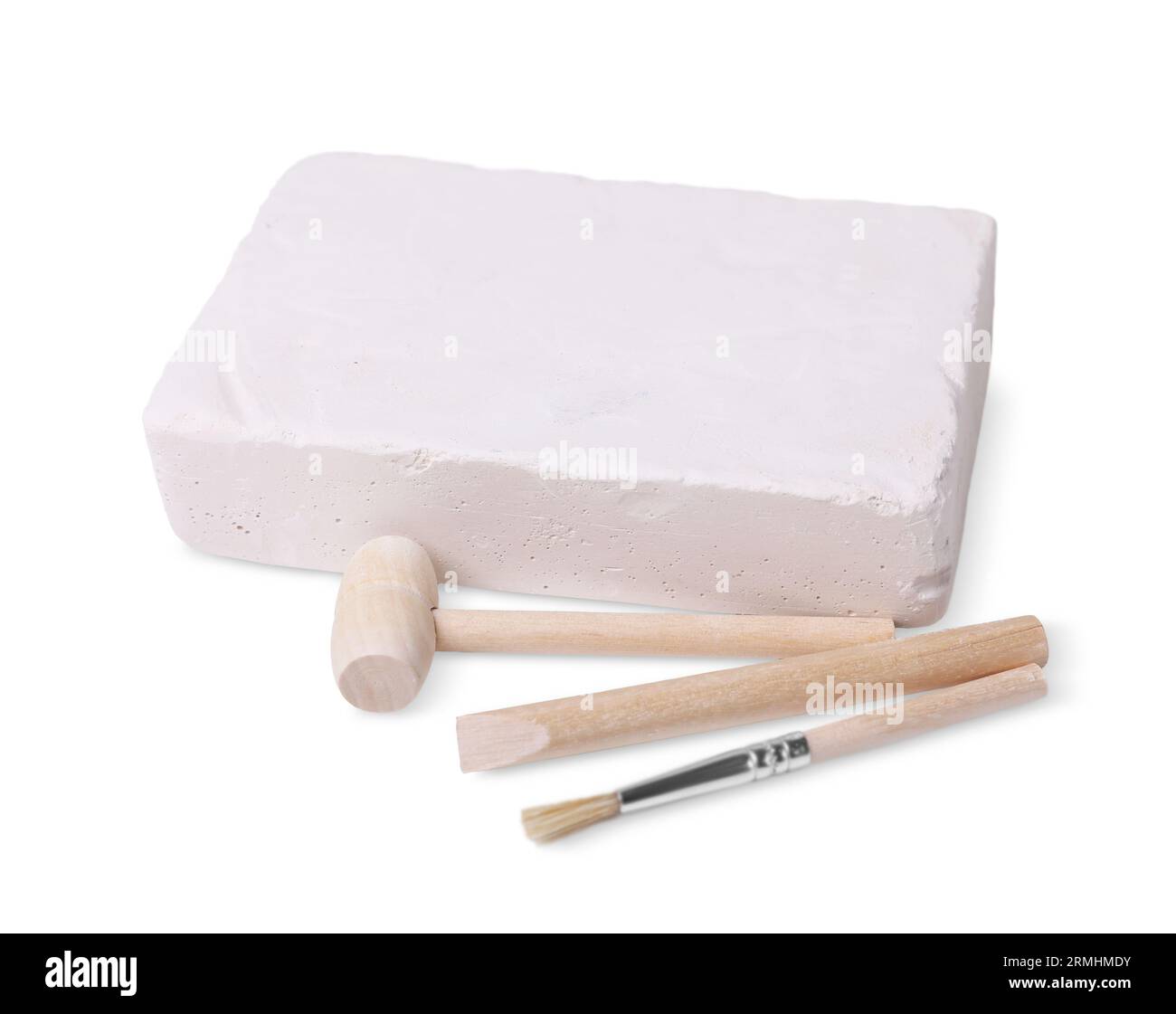 Educational toy for motor skills development. Excavation kit (plaster, digging tools and brush) on white background Stock Photohttps://www.alamy.com/image-license-details/?v=1https://www.alamy.com/educational-toy-for-motor-skills-development-excavation-kit-plaster-digging-tools-and-brush-on-white-background-image563414151.html
Educational toy for motor skills development. Excavation kit (plaster, digging tools and brush) on white background Stock Photohttps://www.alamy.com/image-license-details/?v=1https://www.alamy.com/educational-toy-for-motor-skills-development-excavation-kit-plaster-digging-tools-and-brush-on-white-background-image563414151.htmlRF2RMHMDY–Educational toy for motor skills development. Excavation kit (plaster, digging tools and brush) on white background
 Nice, France - May 25, 2024: The Terra Amata Museum of Human Paleontology exploring the behaviour and way of life of the first Nicois. Stock Photohttps://www.alamy.com/image-license-details/?v=1https://www.alamy.com/nice-france-may-25-2024-the-terra-amata-museum-of-human-paleontology-exploring-the-behaviour-and-way-of-life-of-the-first-nicois-image614238257.html
Nice, France - May 25, 2024: The Terra Amata Museum of Human Paleontology exploring the behaviour and way of life of the first Nicois. Stock Photohttps://www.alamy.com/image-license-details/?v=1https://www.alamy.com/nice-france-may-25-2024-the-terra-amata-museum-of-human-paleontology-exploring-the-behaviour-and-way-of-life-of-the-first-nicois-image614238257.htmlRF2XK8Y4H–Nice, France - May 25, 2024: The Terra Amata Museum of Human Paleontology exploring the behaviour and way of life of the first Nicois.
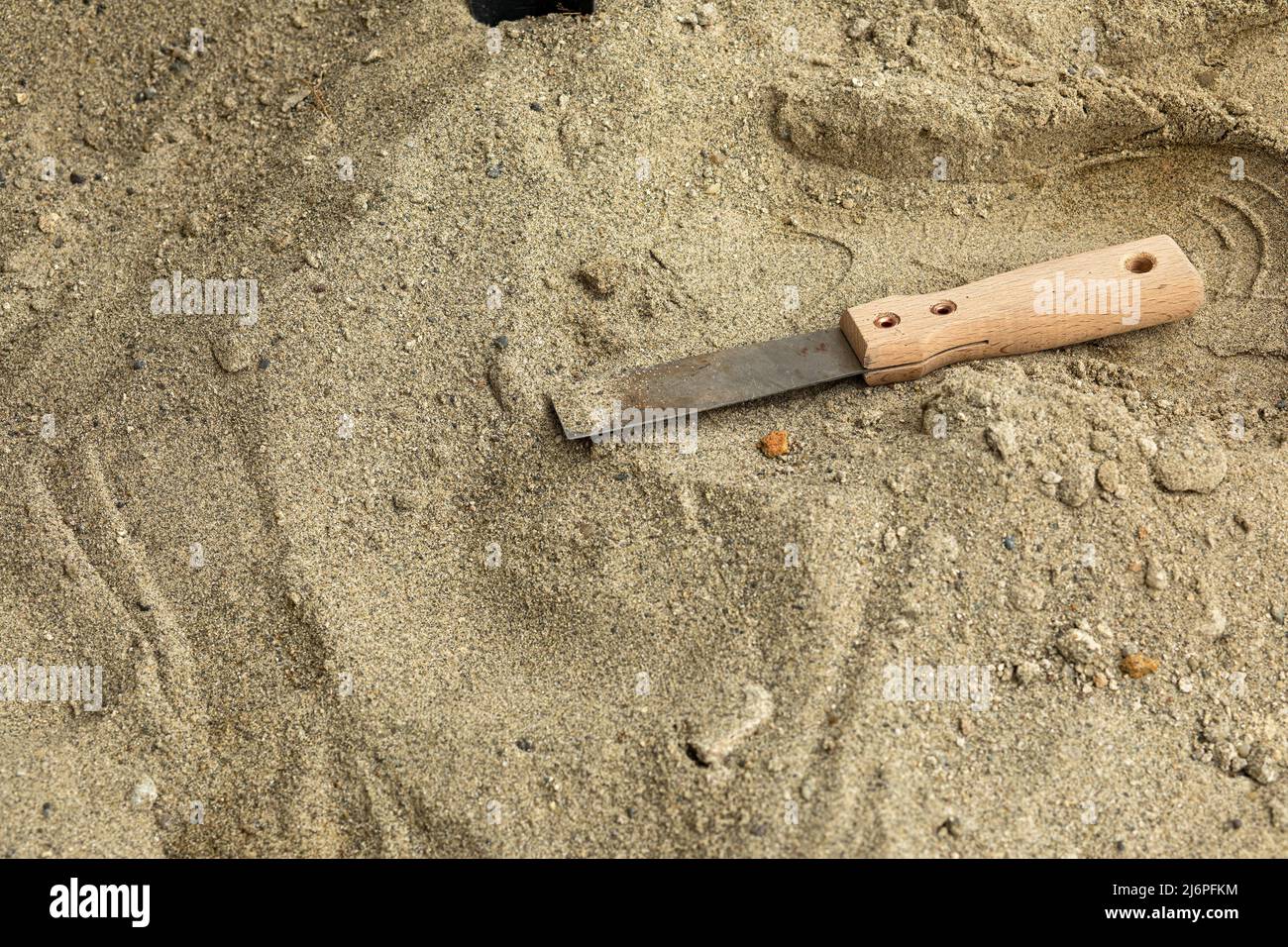 Skeleton and archaeological tools in the sand.Digging for fossils. Stock Photohttps://www.alamy.com/image-license-details/?v=1https://www.alamy.com/skeleton-and-archaeological-tools-in-the-sanddigging-for-fossils-image468863128.html
Skeleton and archaeological tools in the sand.Digging for fossils. Stock Photohttps://www.alamy.com/image-license-details/?v=1https://www.alamy.com/skeleton-and-archaeological-tools-in-the-sanddigging-for-fossils-image468863128.htmlRF2J6PFKM–Skeleton and archaeological tools in the sand.Digging for fossils.
 Close up of cleaning skull of prehistoric extinct human after excavation with brush and professional tools, working with fossil remains in archaeological laboratory. Artifact of antiquity. Archaeology Stock Photohttps://www.alamy.com/image-license-details/?v=1https://www.alamy.com/close-up-of-cleaning-skull-of-prehistoric-extinct-human-after-excavation-with-brush-and-professional-tools-working-with-fossil-remains-in-archaeological-laboratory-artifact-of-antiquity-archaeology-image621144525.html
Close up of cleaning skull of prehistoric extinct human after excavation with brush and professional tools, working with fossil remains in archaeological laboratory. Artifact of antiquity. Archaeology Stock Photohttps://www.alamy.com/image-license-details/?v=1https://www.alamy.com/close-up-of-cleaning-skull-of-prehistoric-extinct-human-after-excavation-with-brush-and-professional-tools-working-with-fossil-remains-in-archaeological-laboratory-artifact-of-antiquity-archaeology-image621144525.htmlRF2Y2FG51–Close up of cleaning skull of prehistoric extinct human after excavation with brush and professional tools, working with fossil remains in archaeological laboratory. Artifact of antiquity. Archaeology
 Homo habilis is an extinct species of hominid belonging to the genus Homo.It lived between 2.4 and 1.44 million years ago in eastern and southern Afri Stock Photohttps://www.alamy.com/image-license-details/?v=1https://www.alamy.com/homo-habilis-is-an-extinct-species-of-hominid-belonging-to-the-genus-homoit-lived-between-24-and-144-million-years-ago-in-eastern-and-southern-afri-image553597878.html
Homo habilis is an extinct species of hominid belonging to the genus Homo.It lived between 2.4 and 1.44 million years ago in eastern and southern Afri Stock Photohttps://www.alamy.com/image-license-details/?v=1https://www.alamy.com/homo-habilis-is-an-extinct-species-of-hominid-belonging-to-the-genus-homoit-lived-between-24-and-144-million-years-ago-in-eastern-and-southern-afri-image553597878.htmlRF2R4JFMP–Homo habilis is an extinct species of hominid belonging to the genus Homo.It lived between 2.4 and 1.44 million years ago in eastern and southern Afri
 tools leaning against a wall in an archaeological excavation, archaeology works Stock Photohttps://www.alamy.com/image-license-details/?v=1https://www.alamy.com/tools-leaning-against-a-wall-in-an-archaeological-excavation-archaeology-works-image466735946.html
tools leaning against a wall in an archaeological excavation, archaeology works Stock Photohttps://www.alamy.com/image-license-details/?v=1https://www.alamy.com/tools-leaning-against-a-wall-in-an-archaeological-excavation-archaeology-works-image466735946.htmlRF2J39JCX–tools leaning against a wall in an archaeological excavation, archaeology works